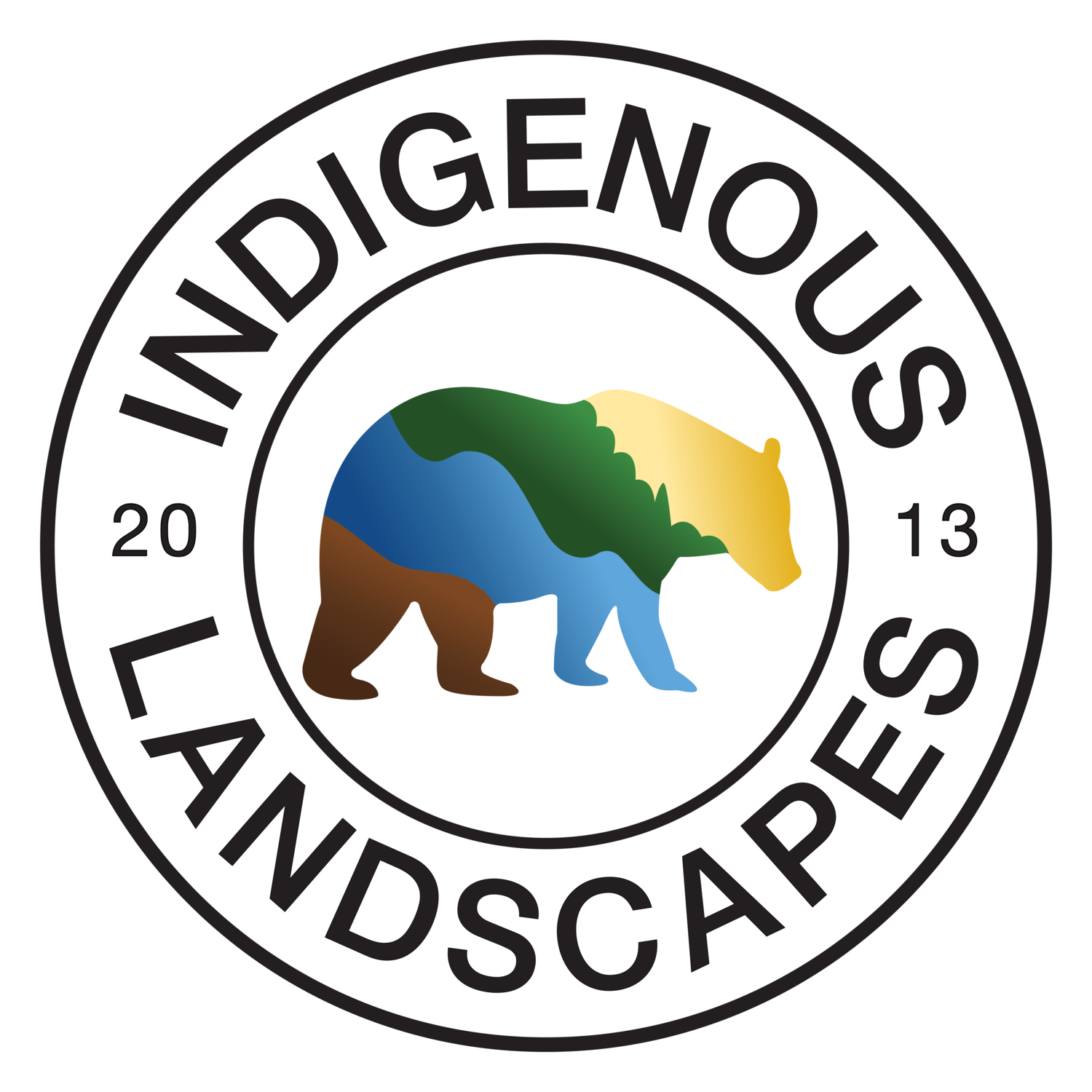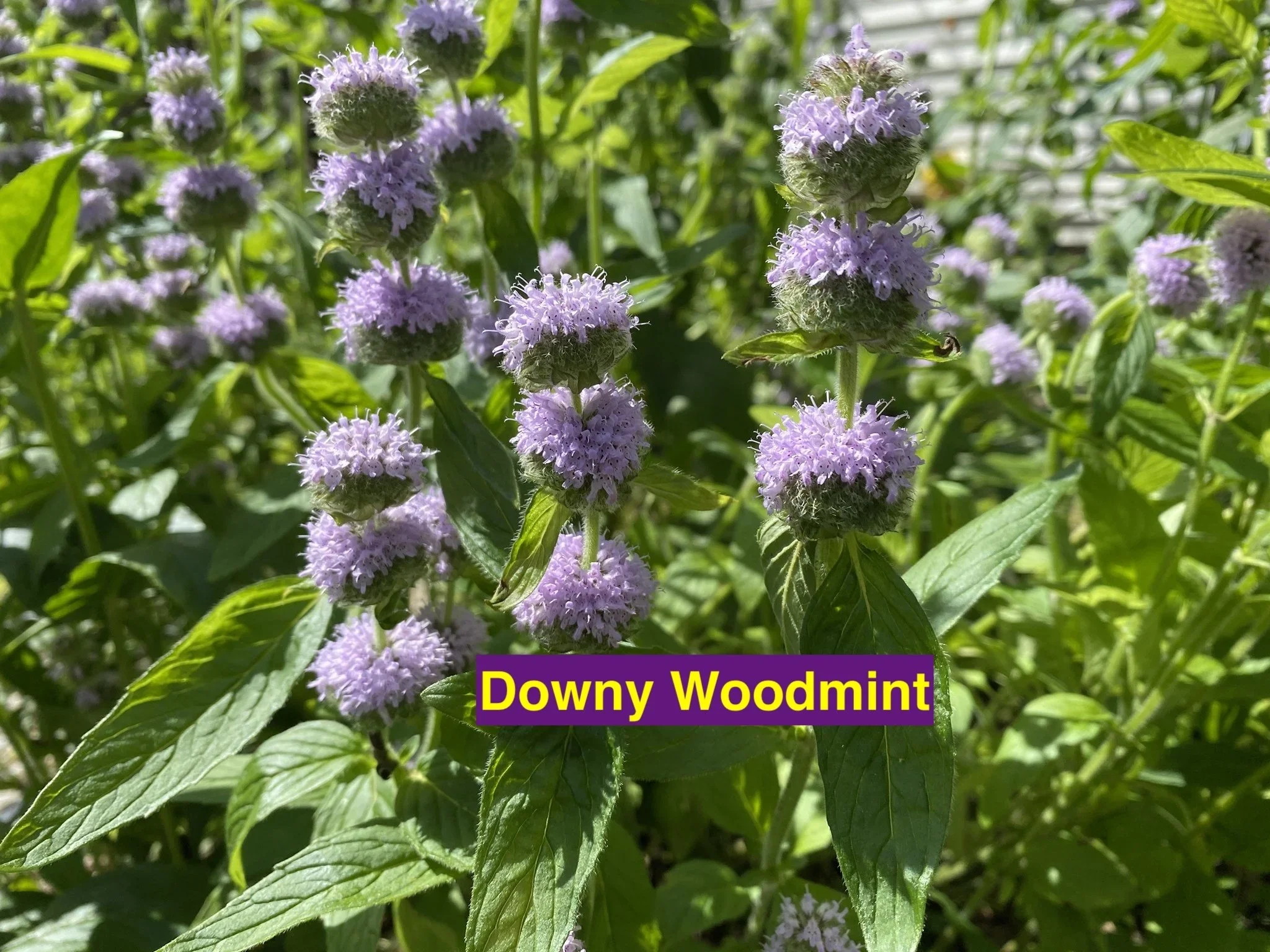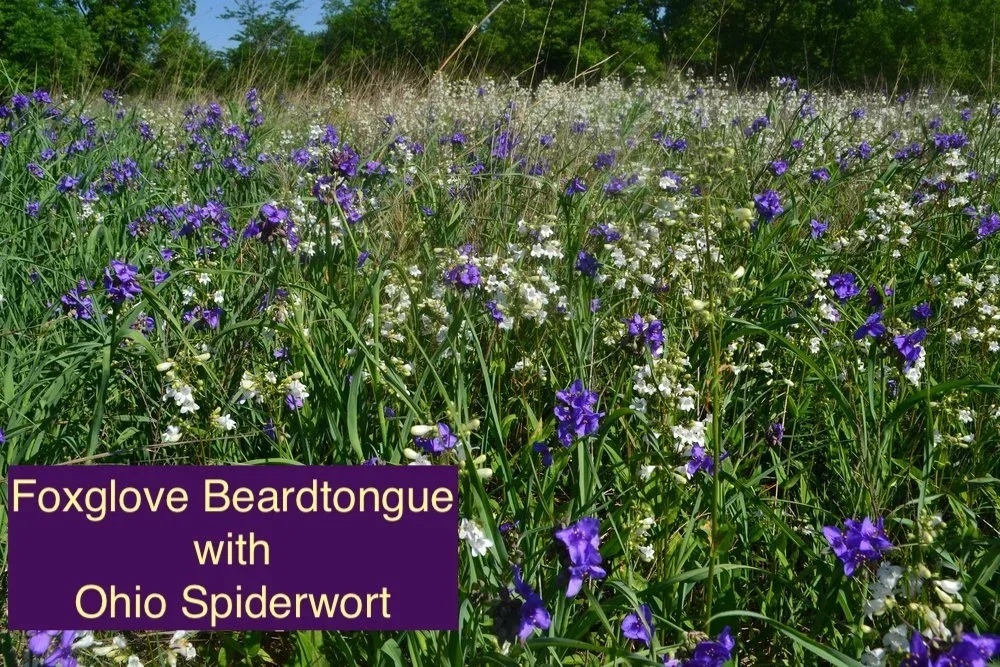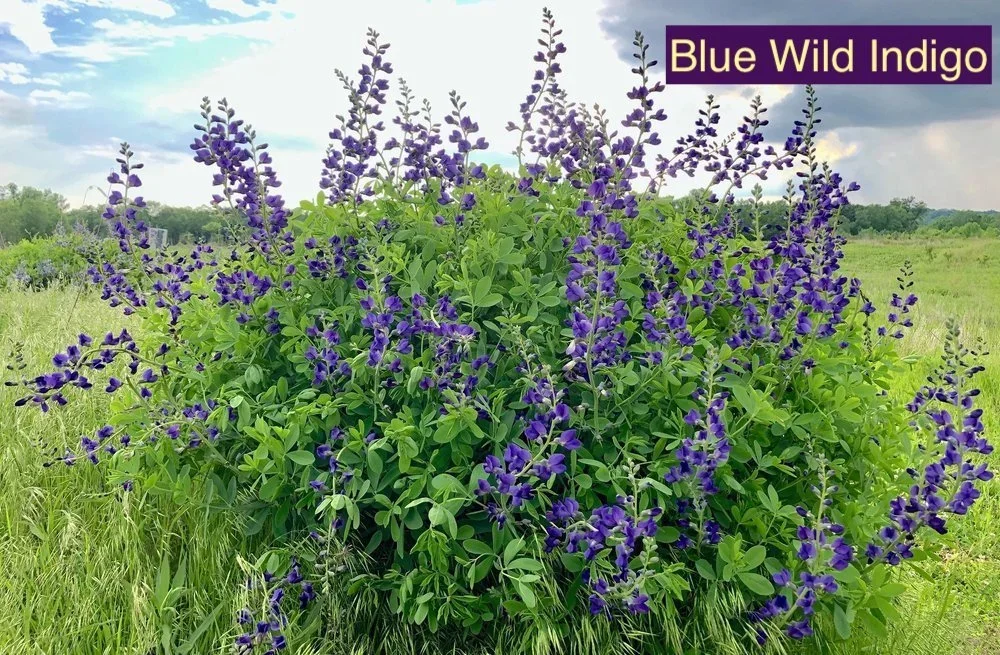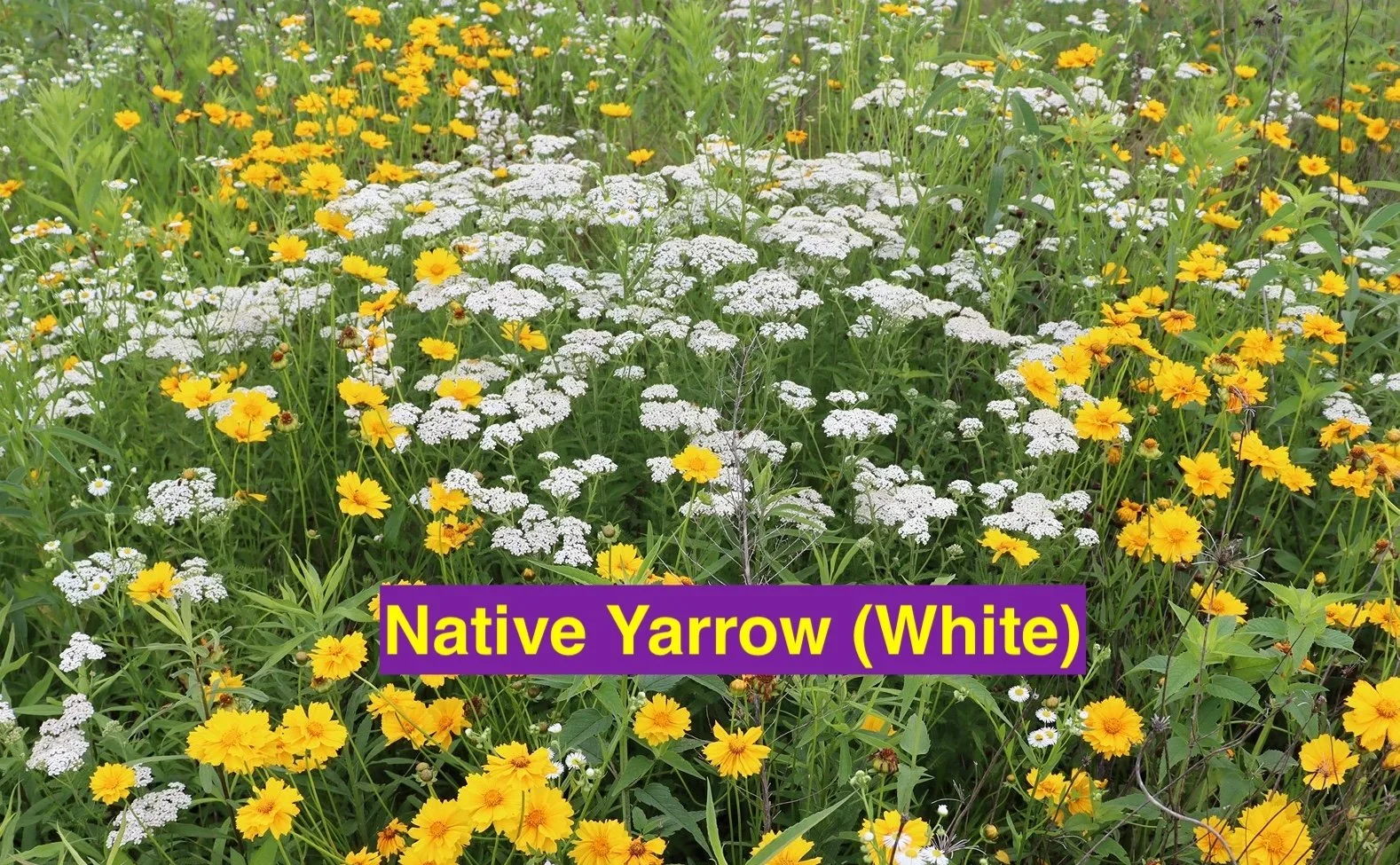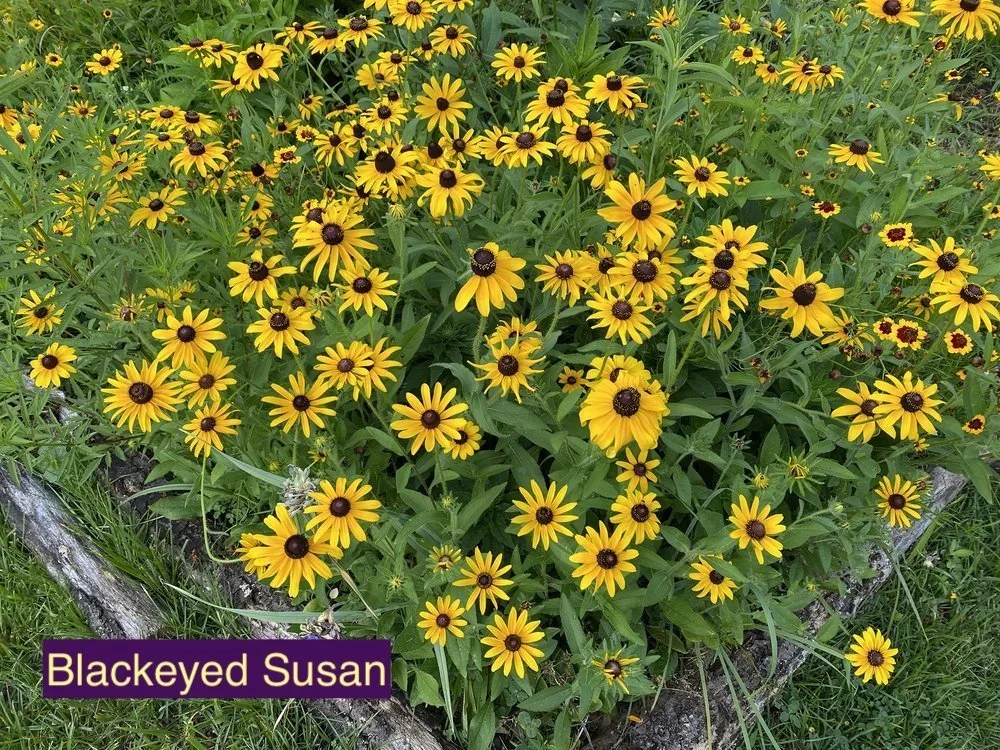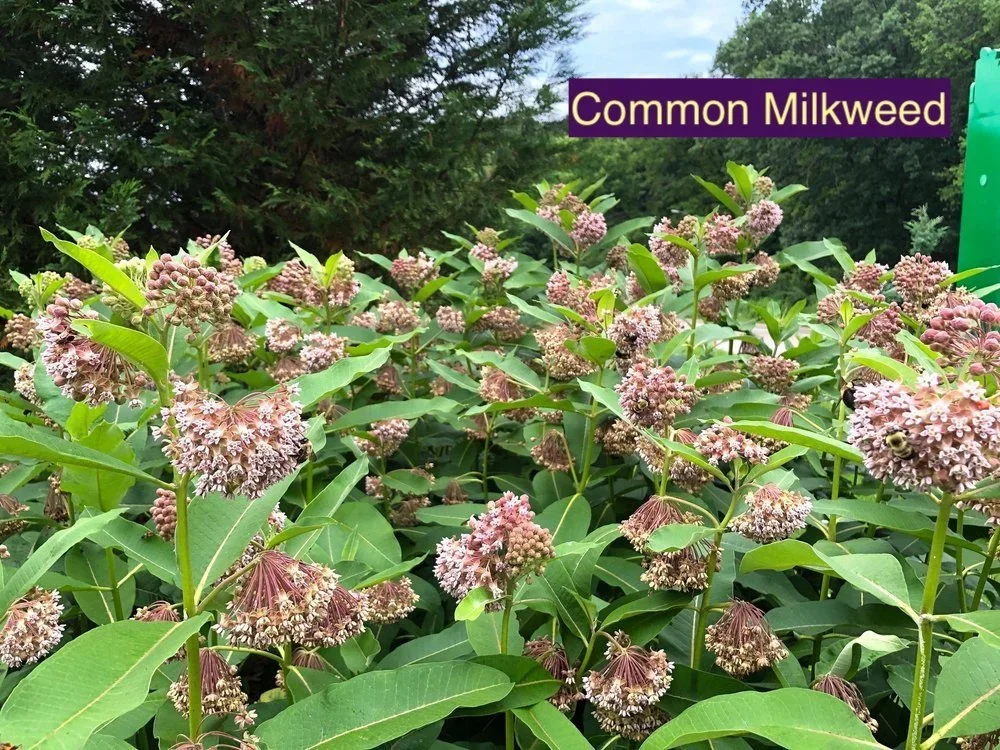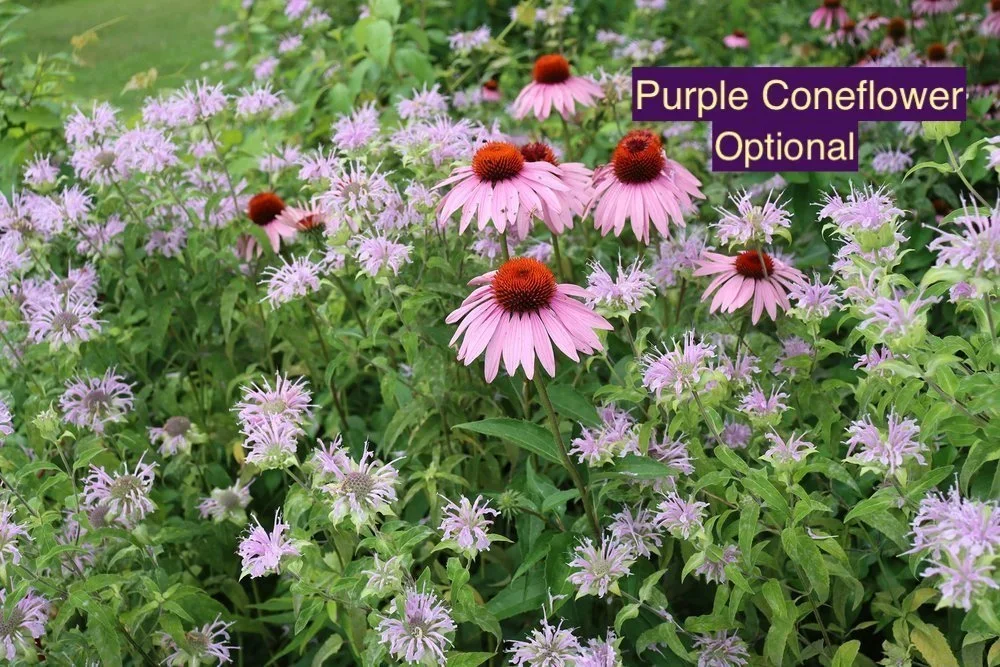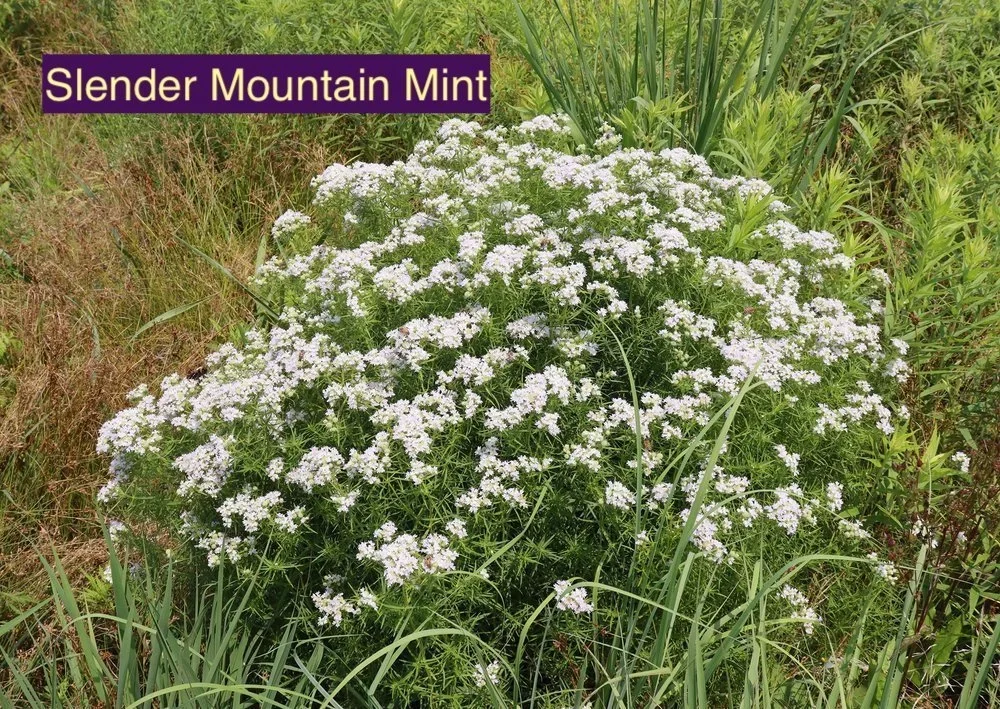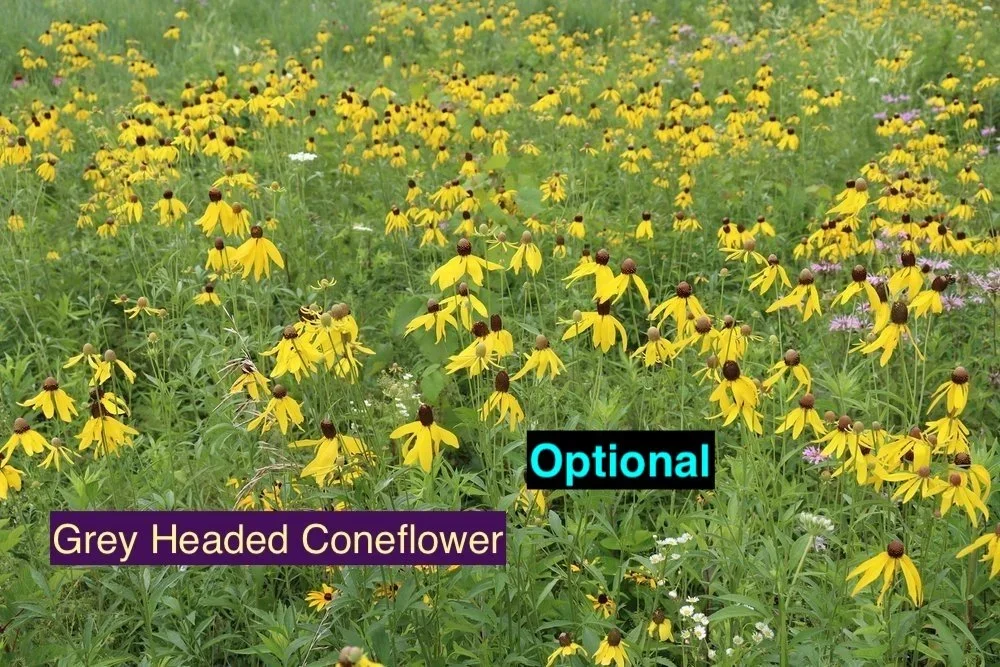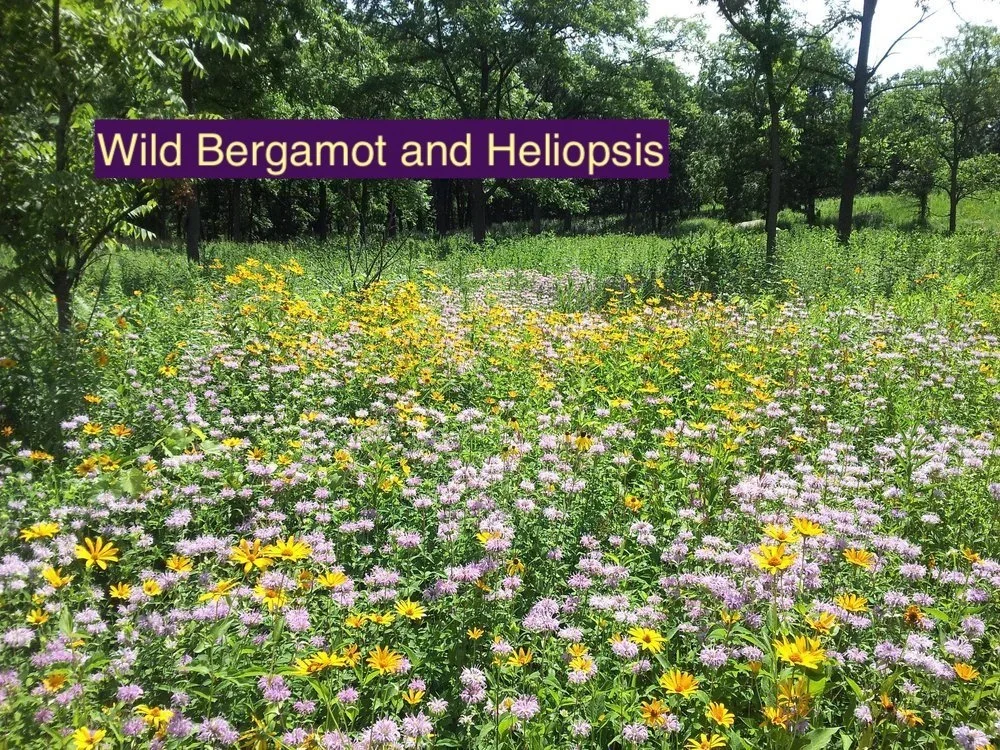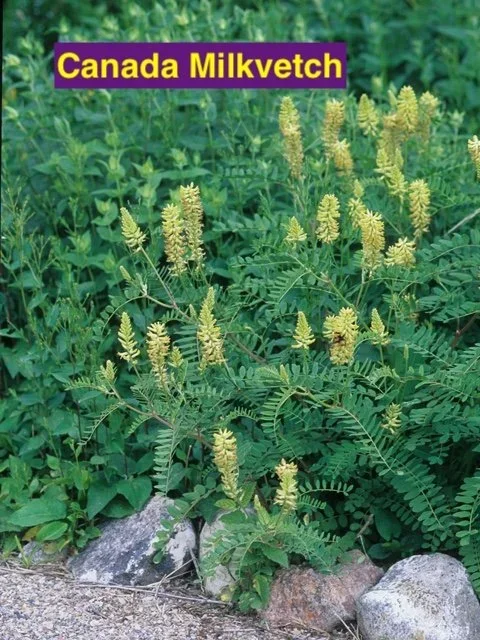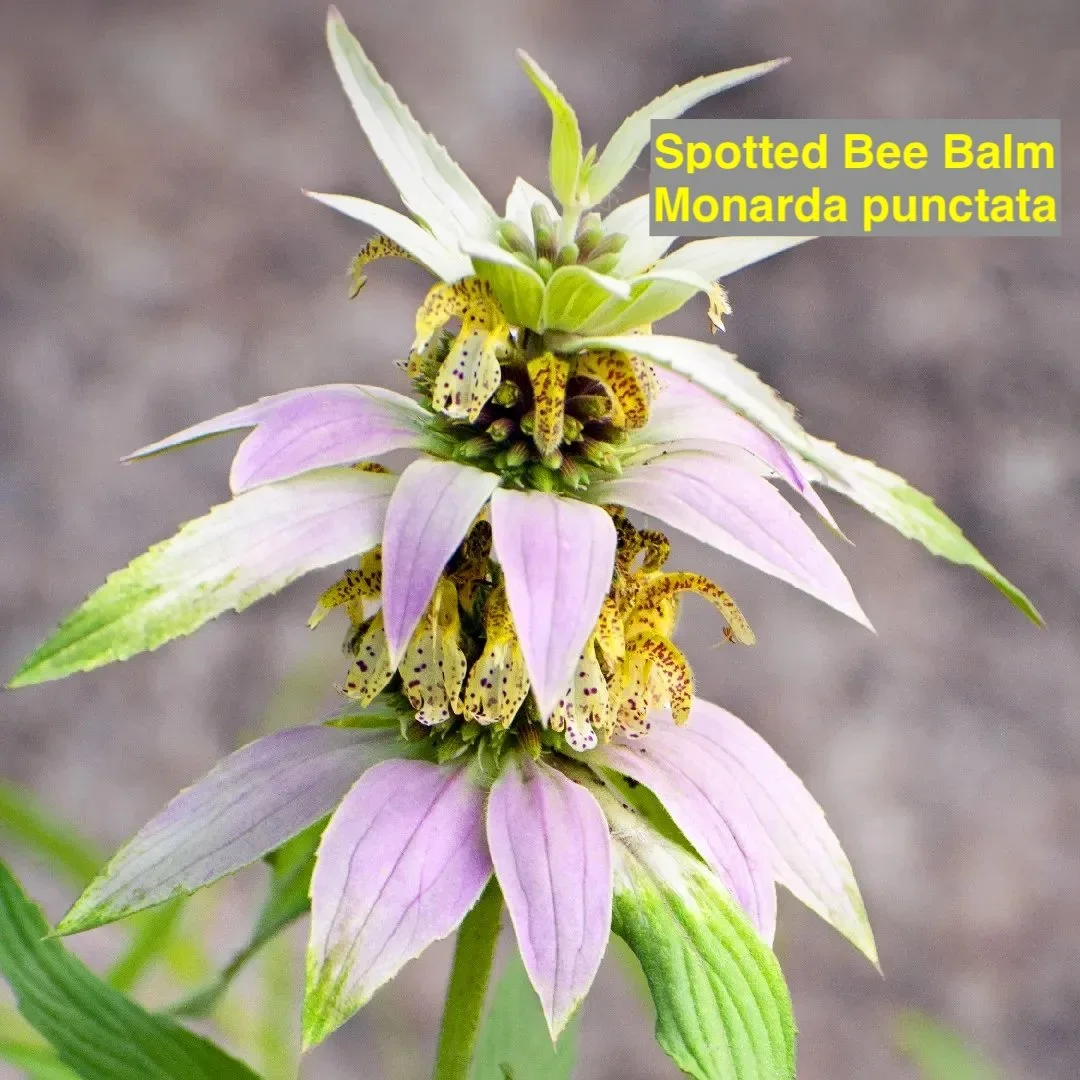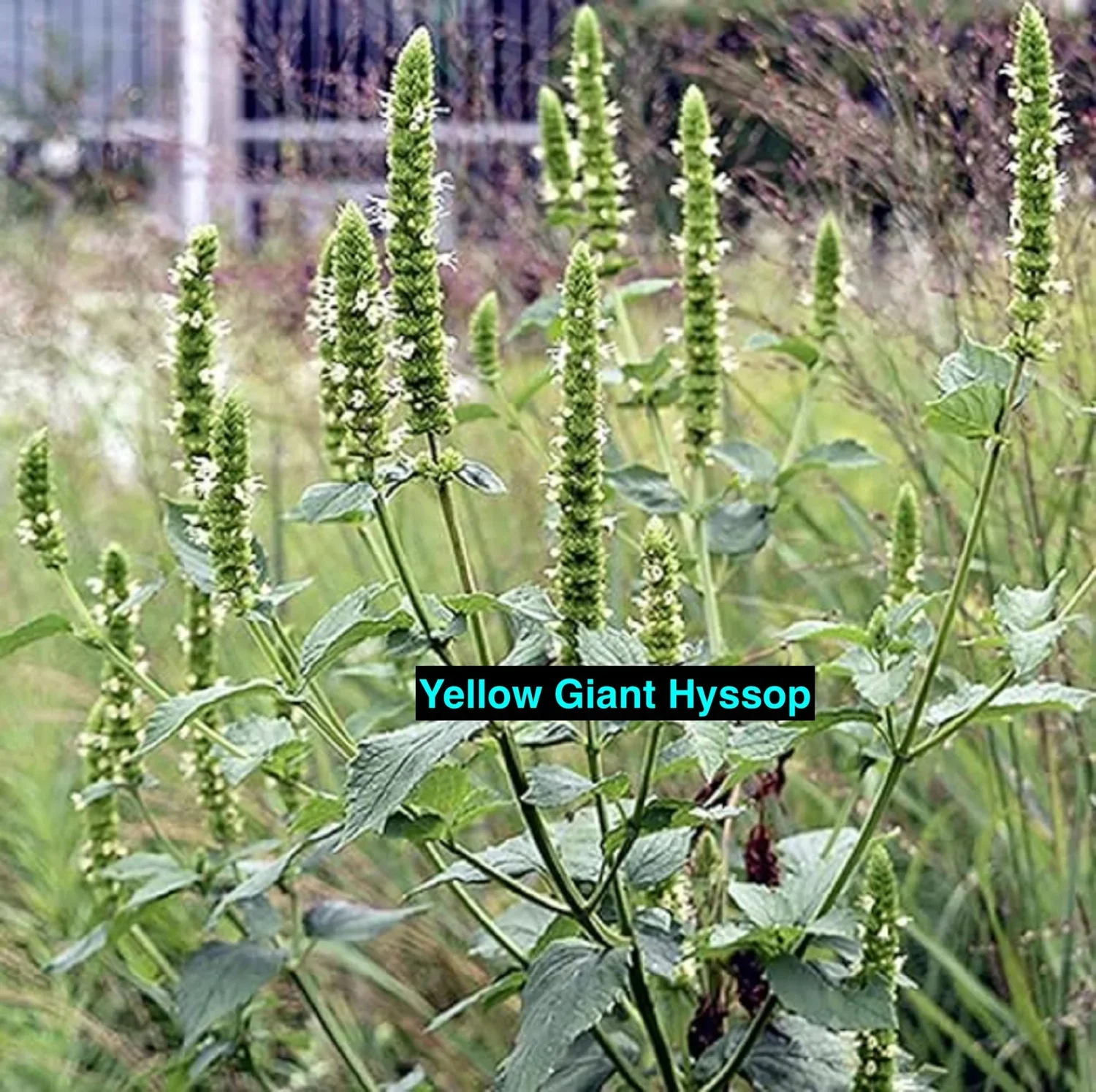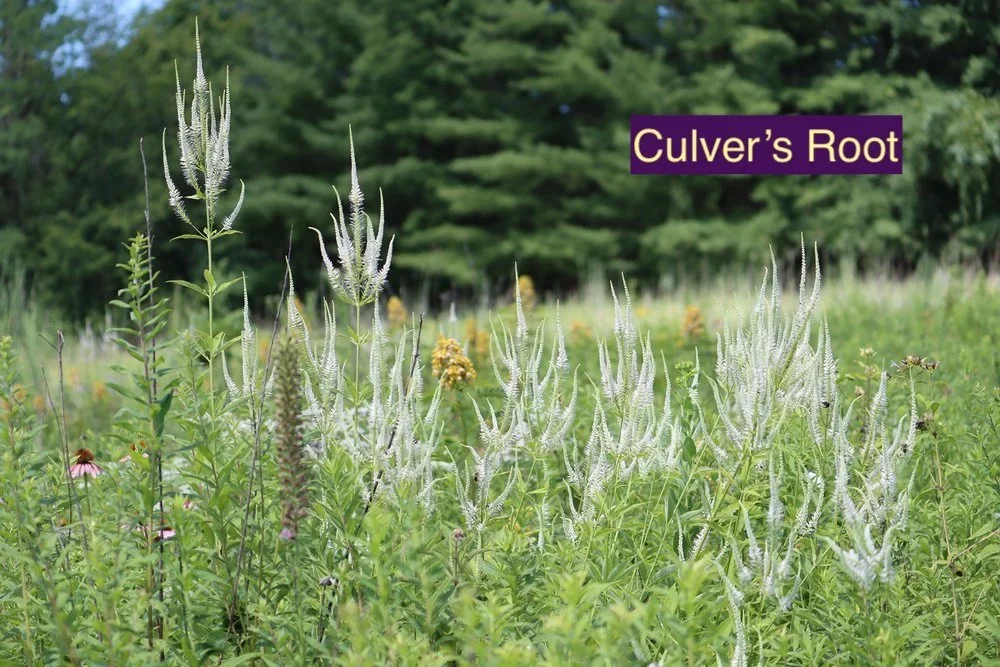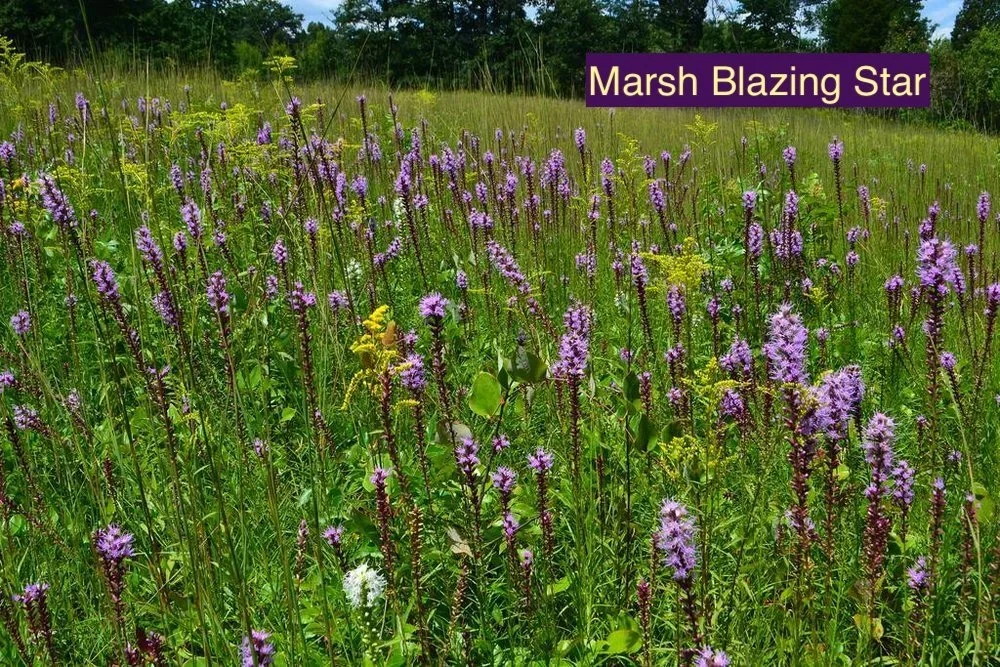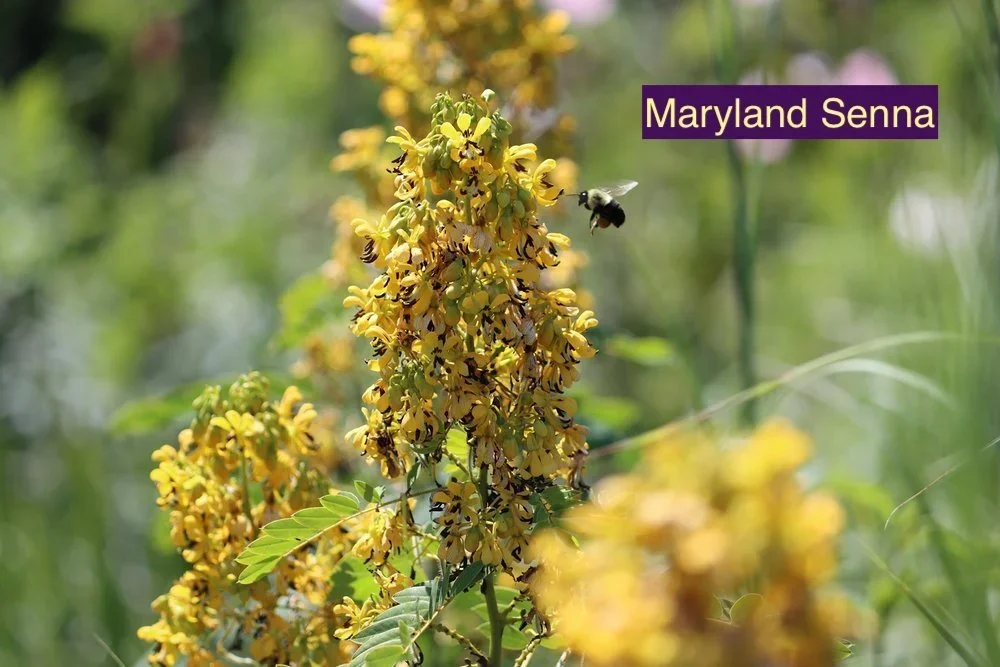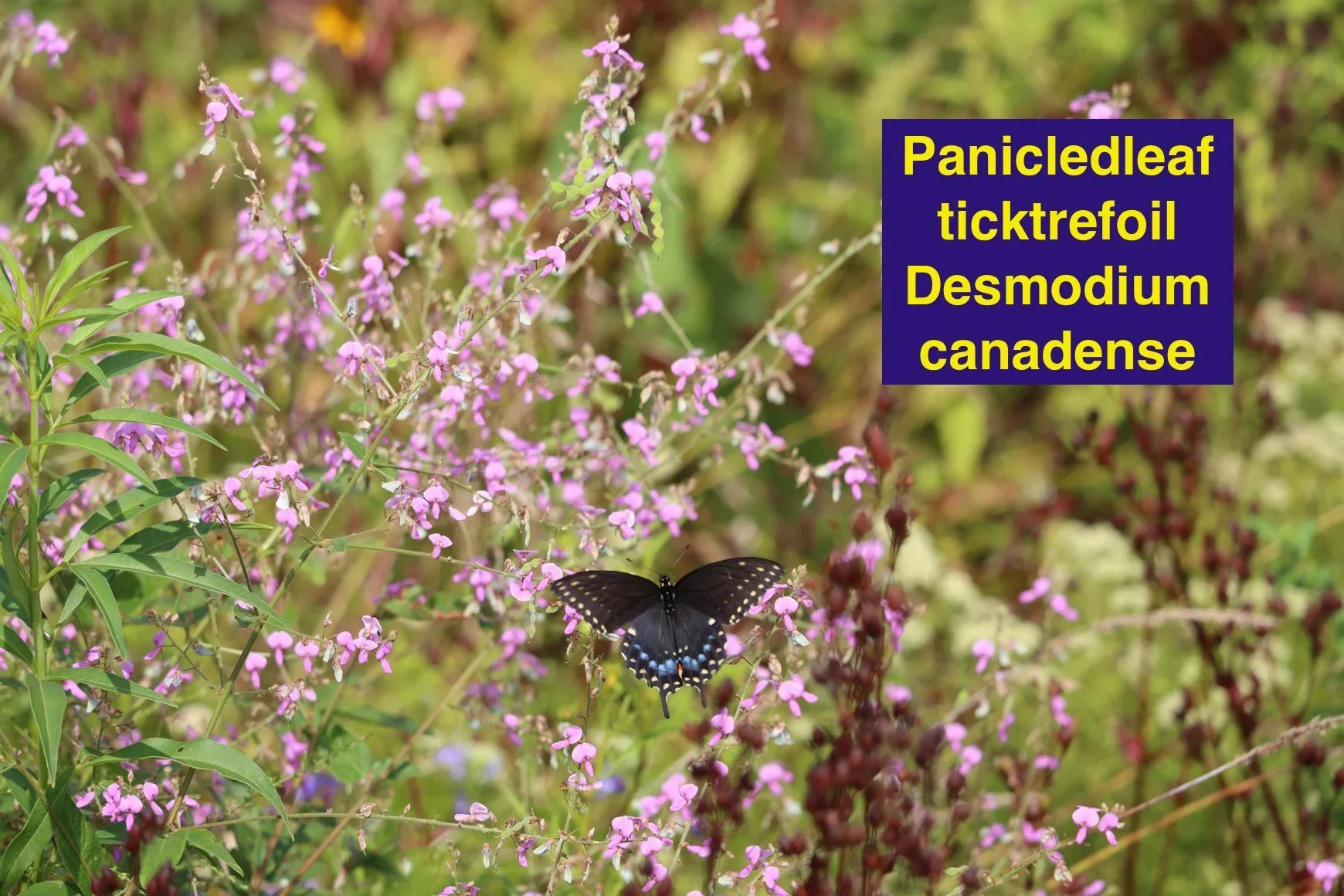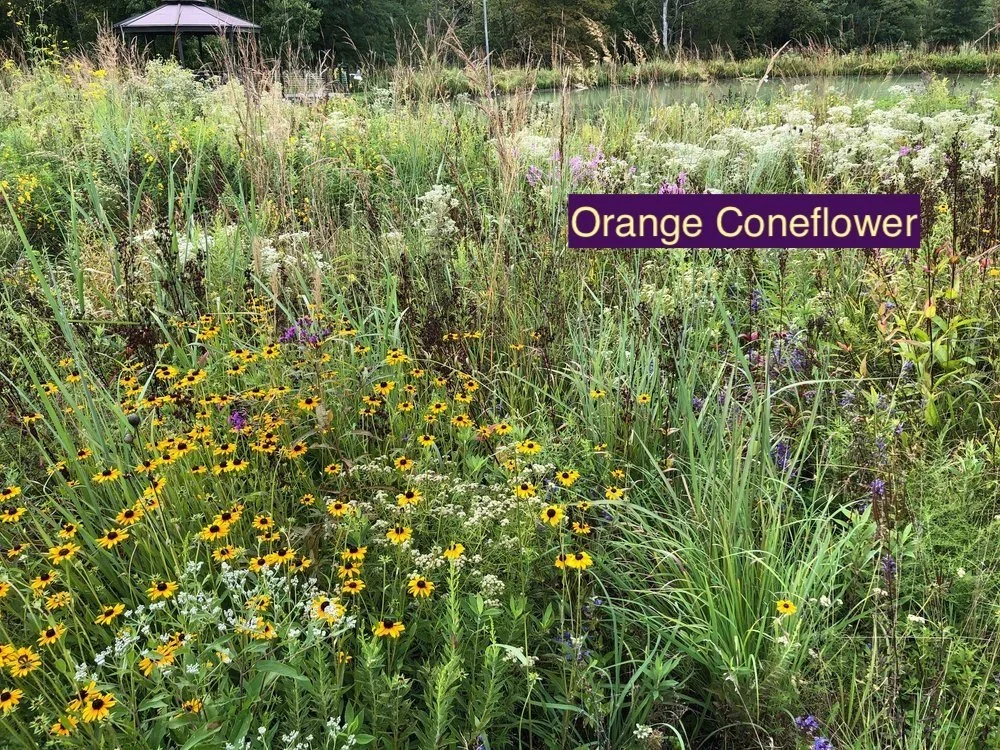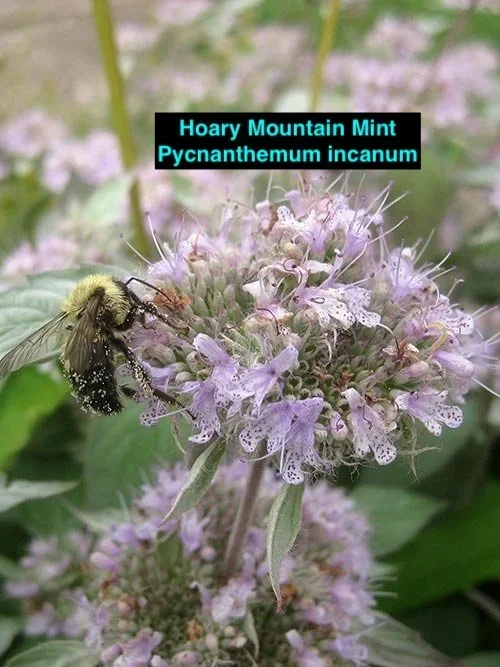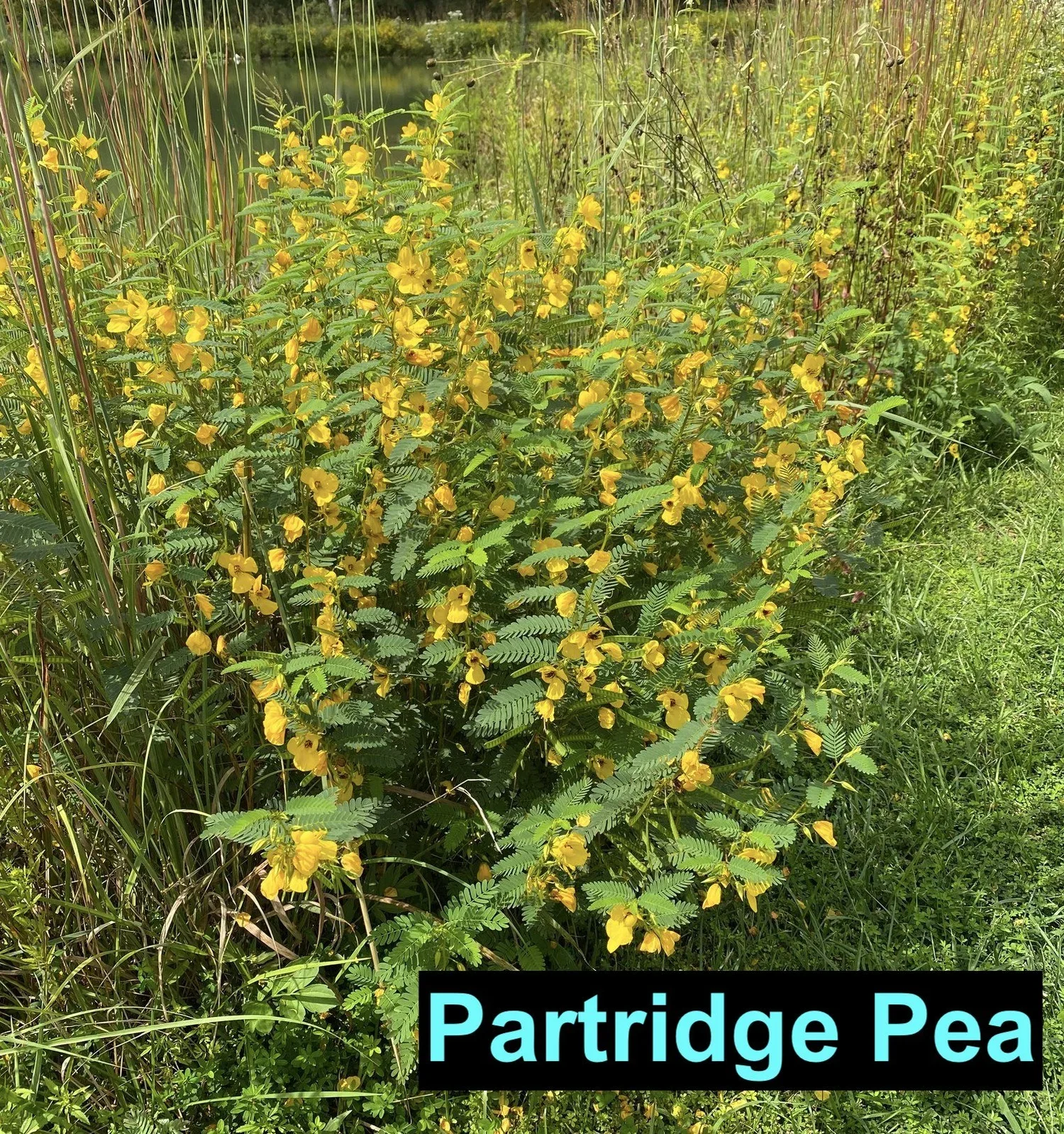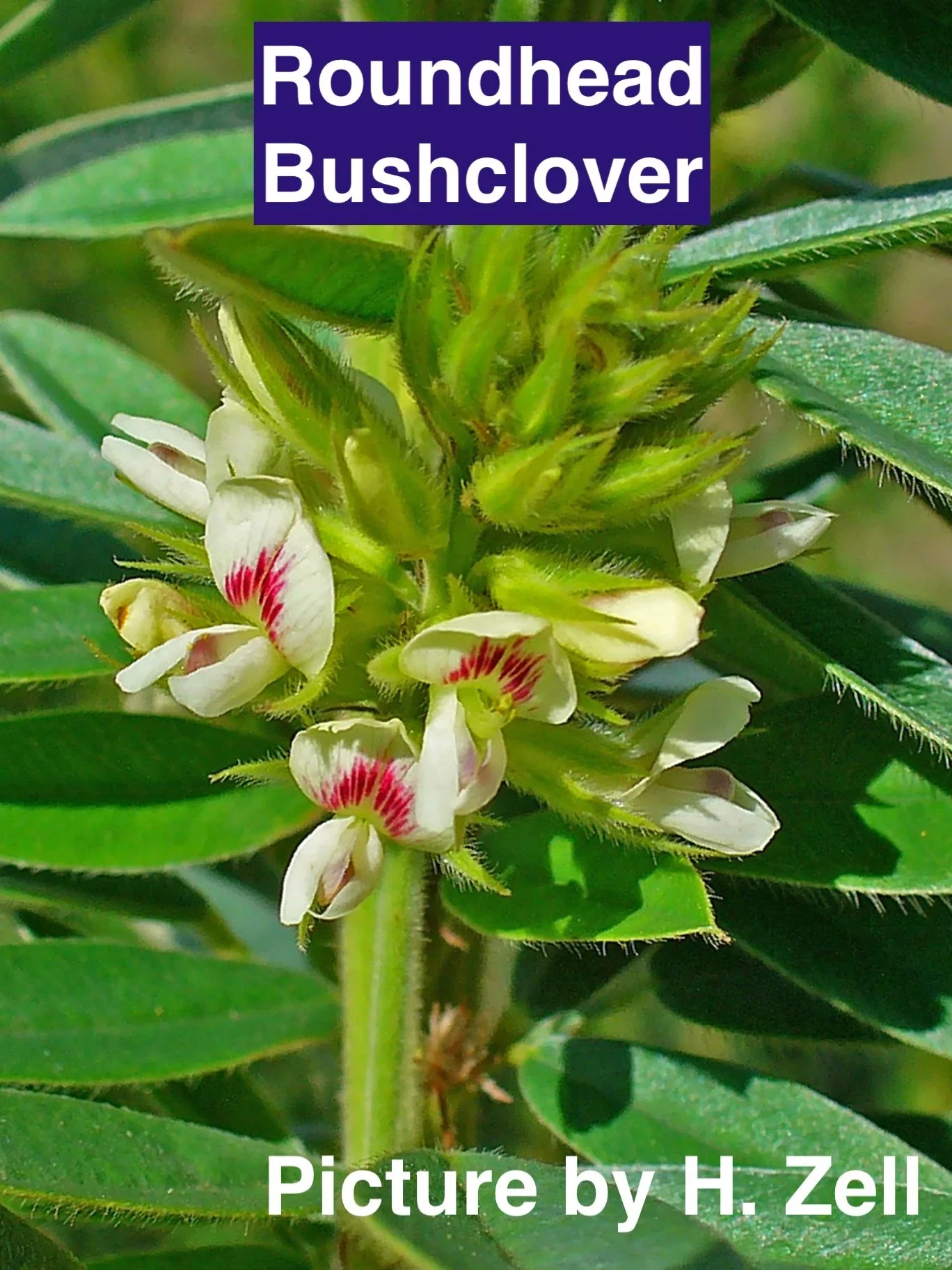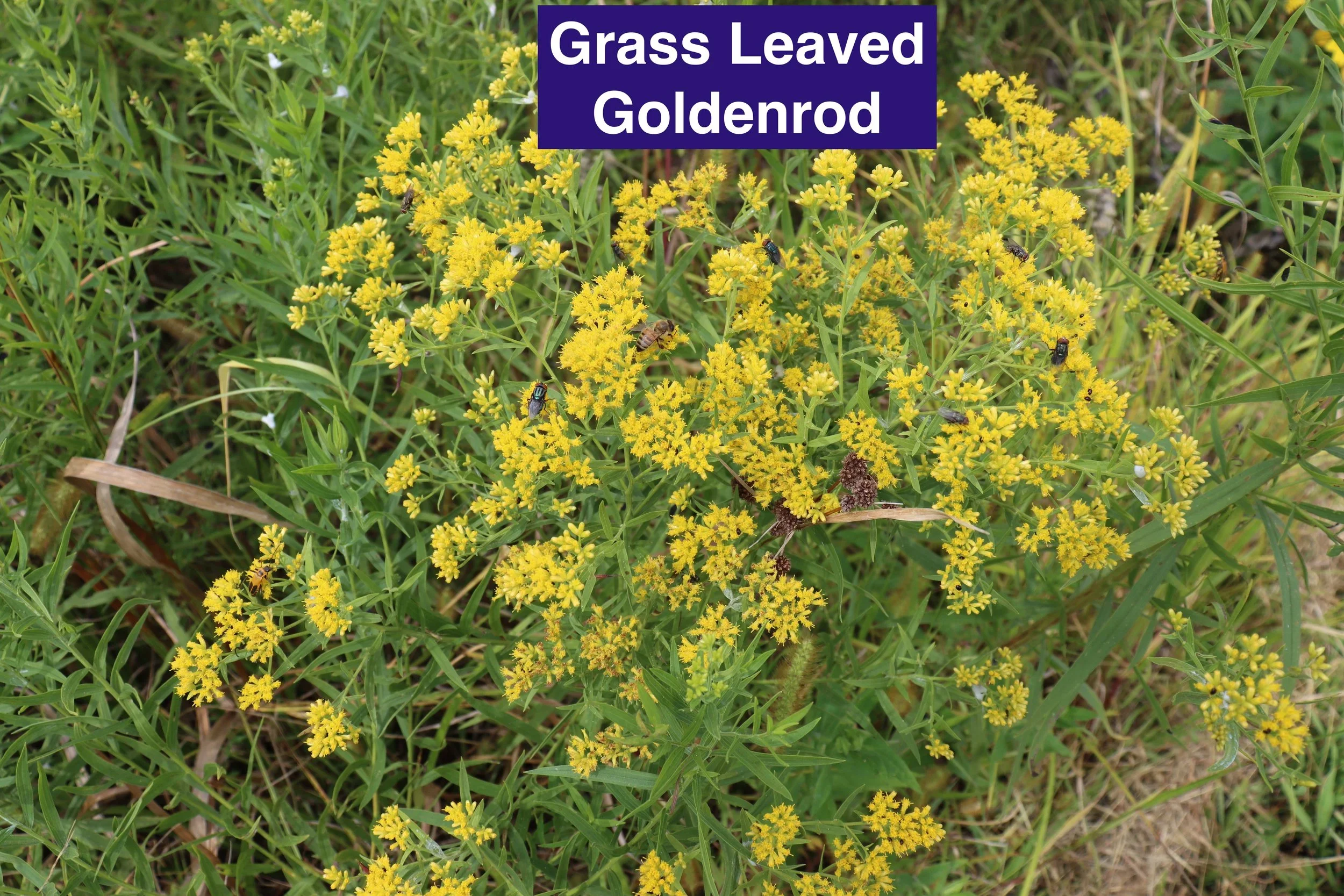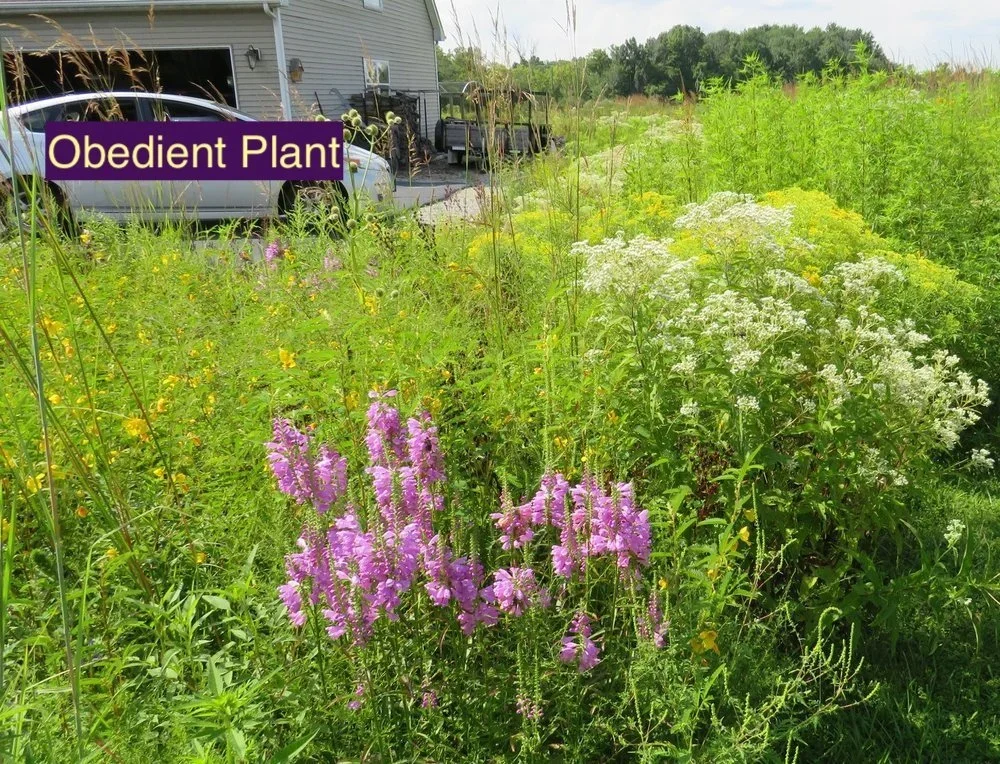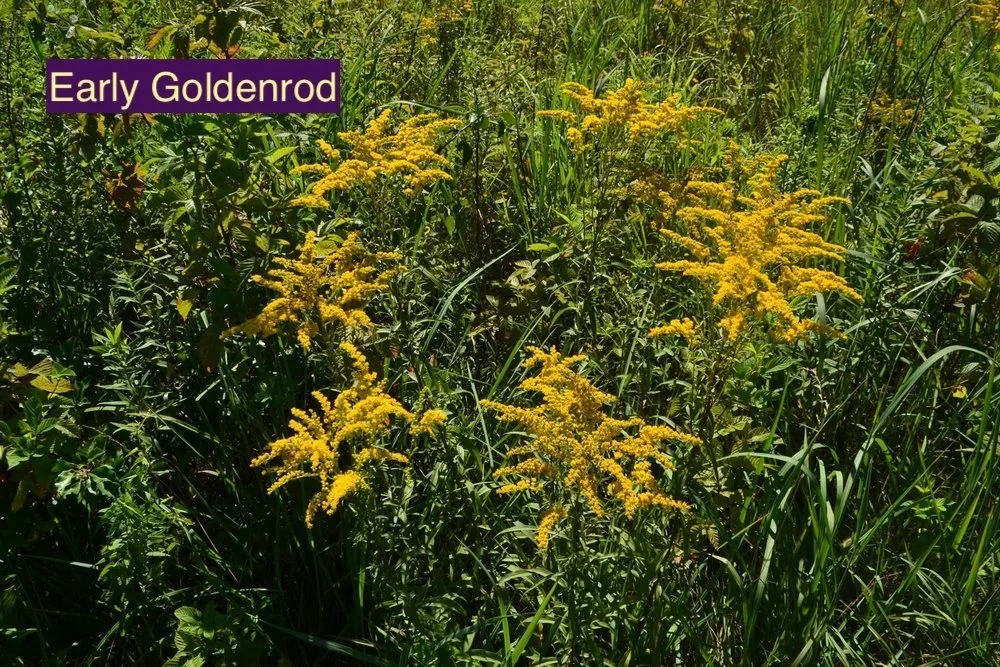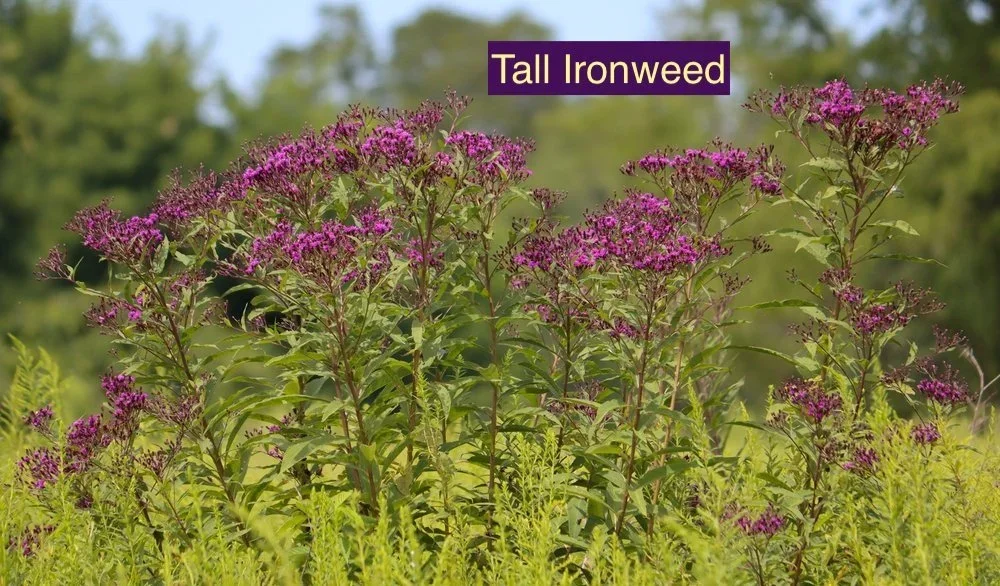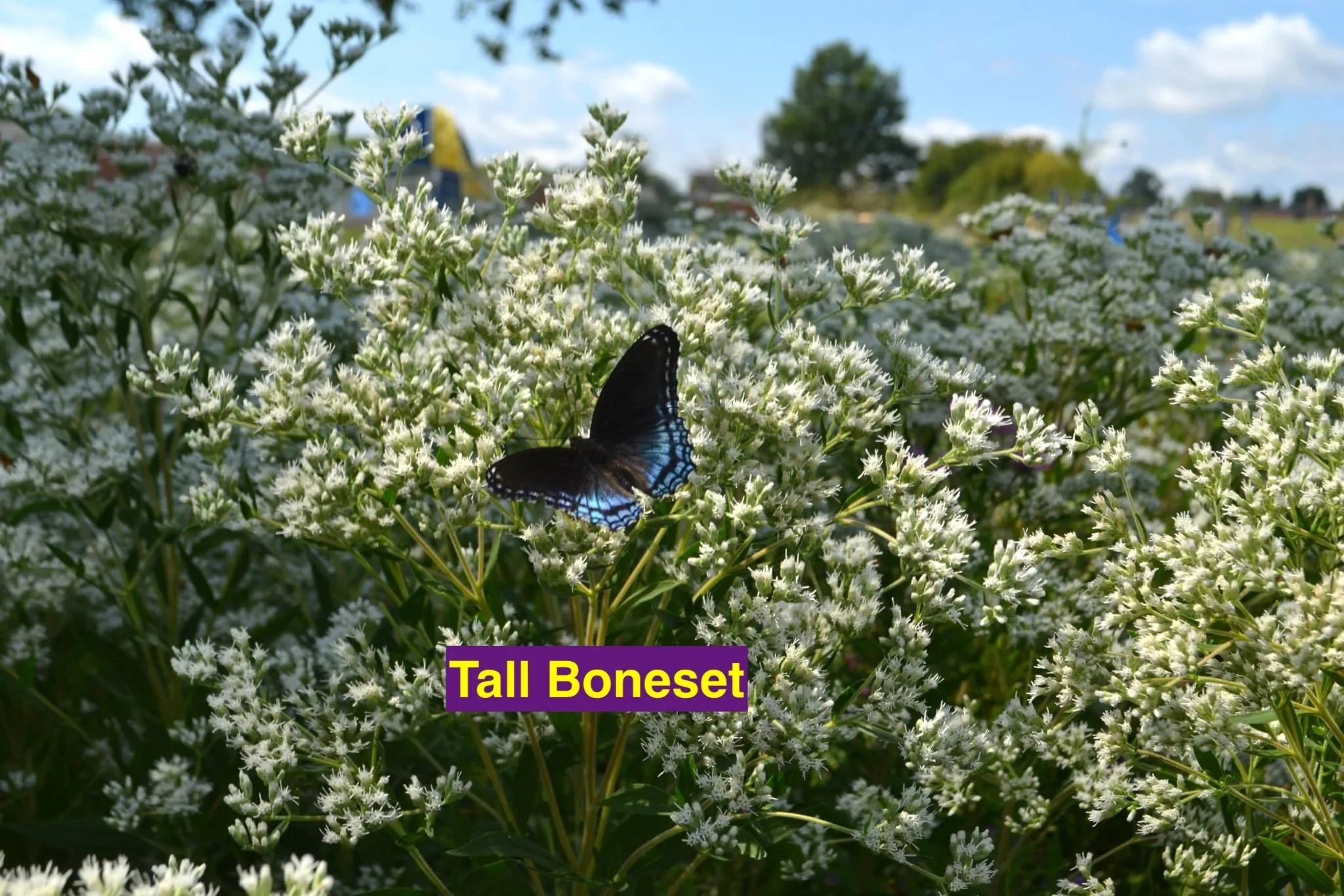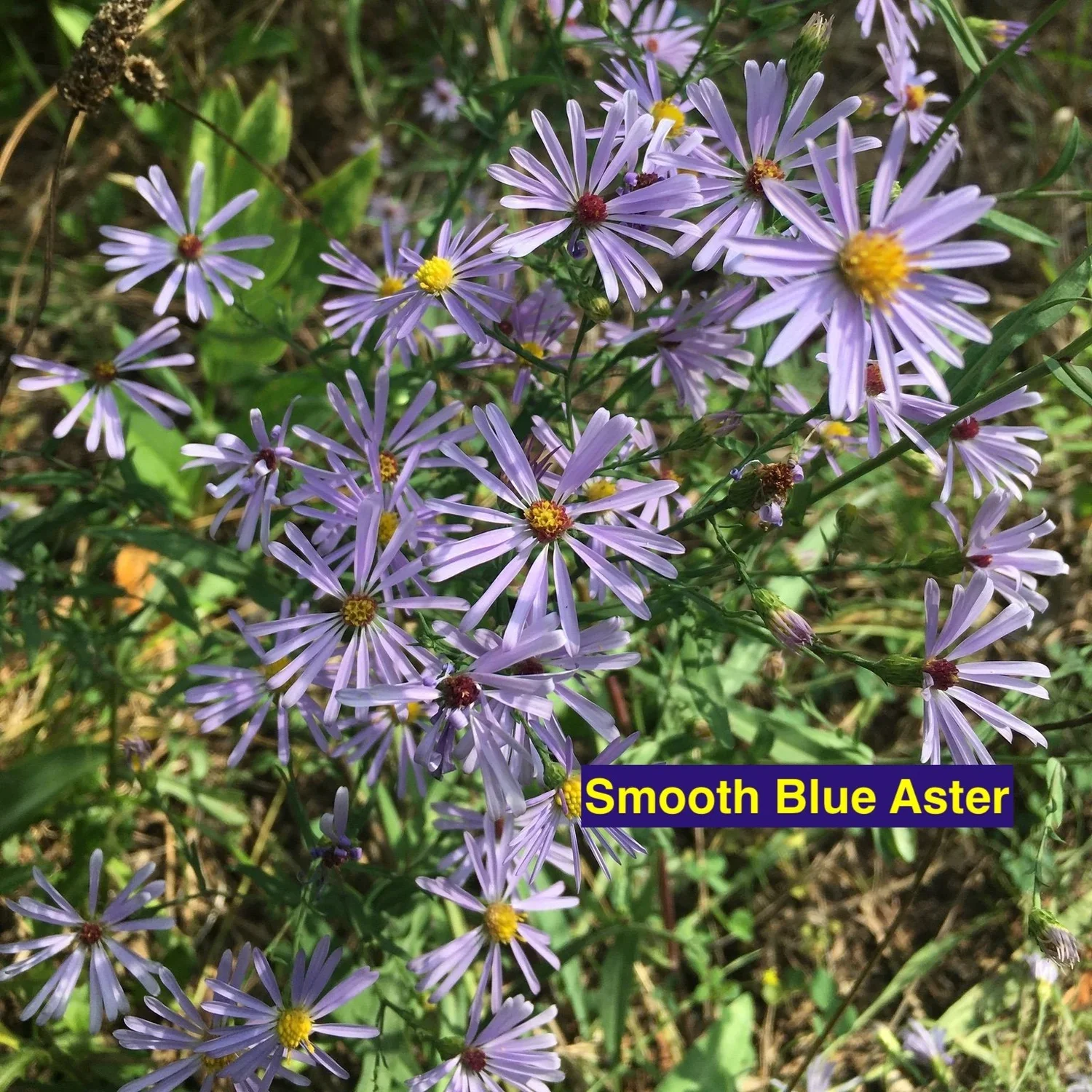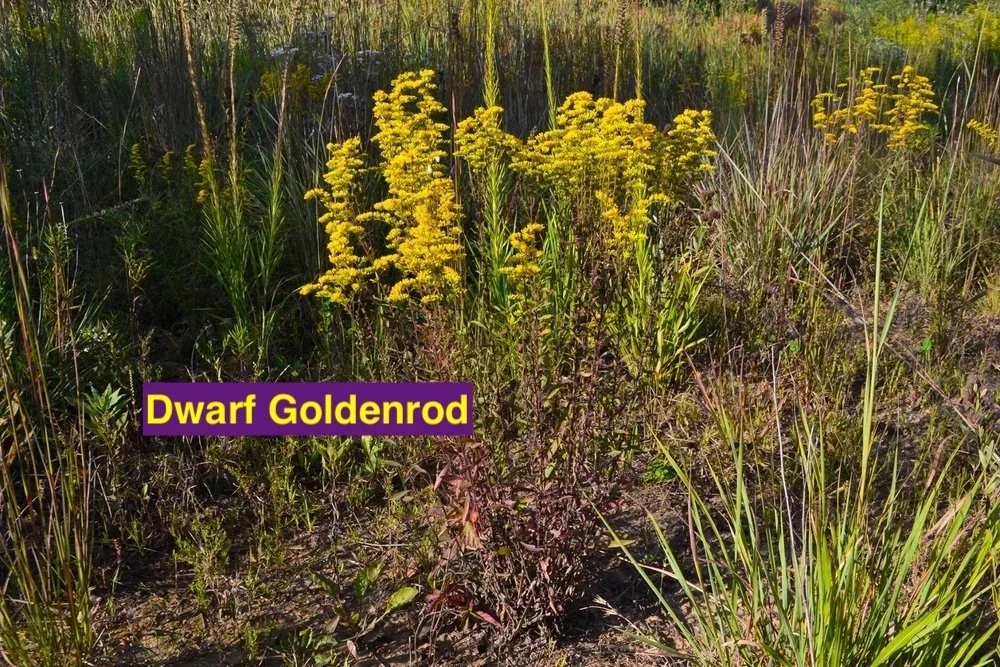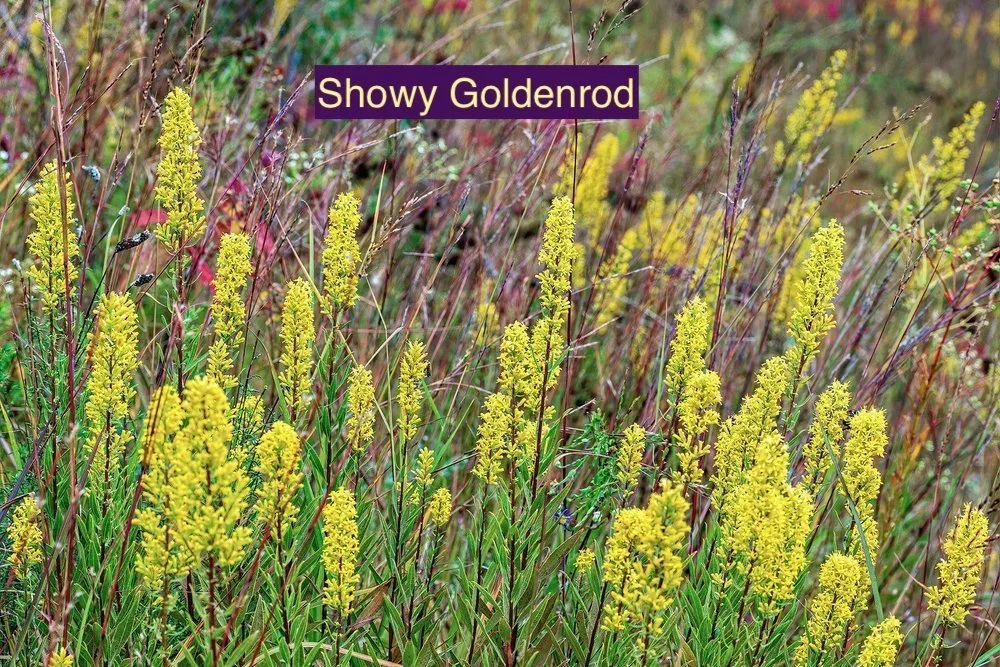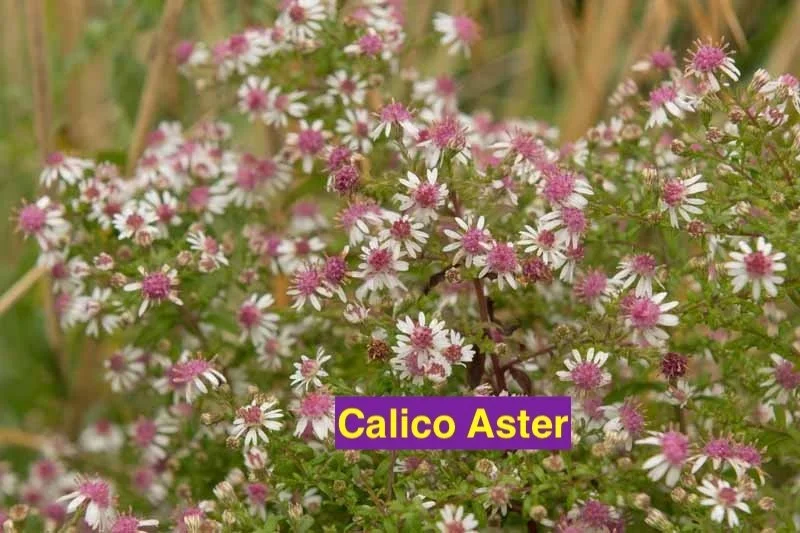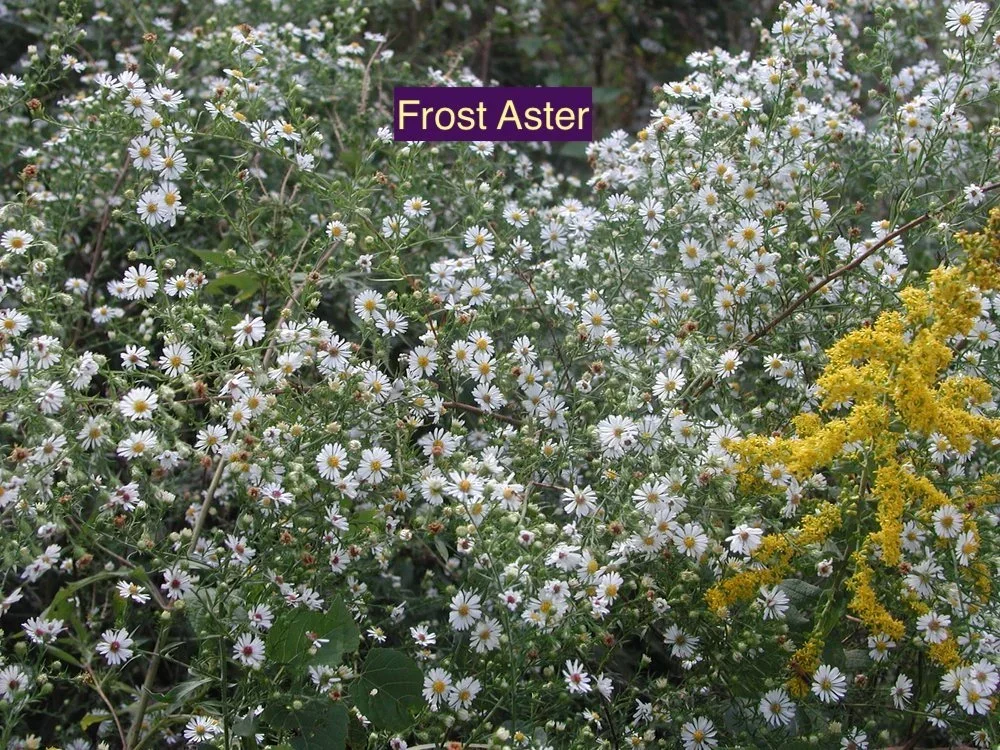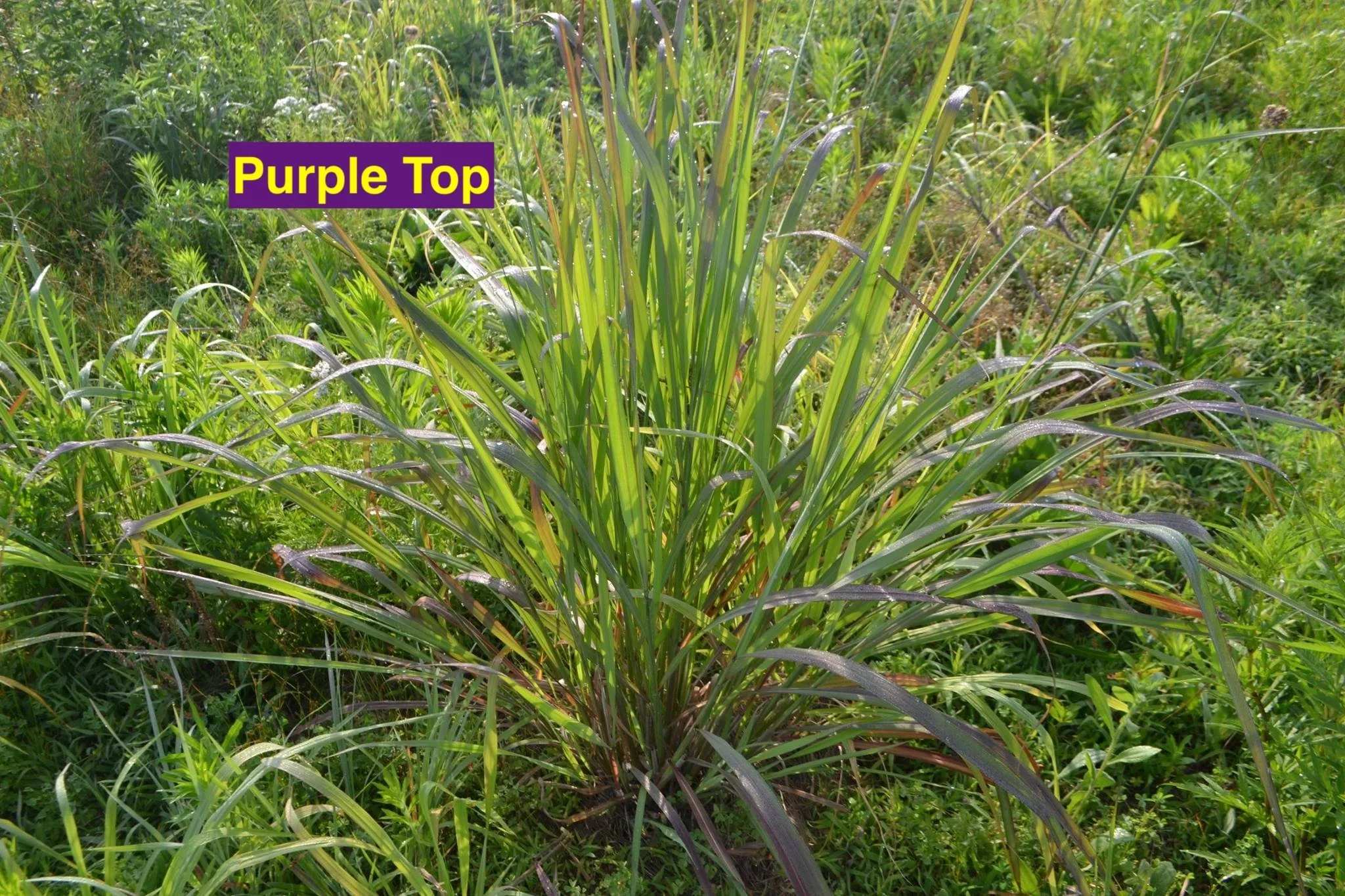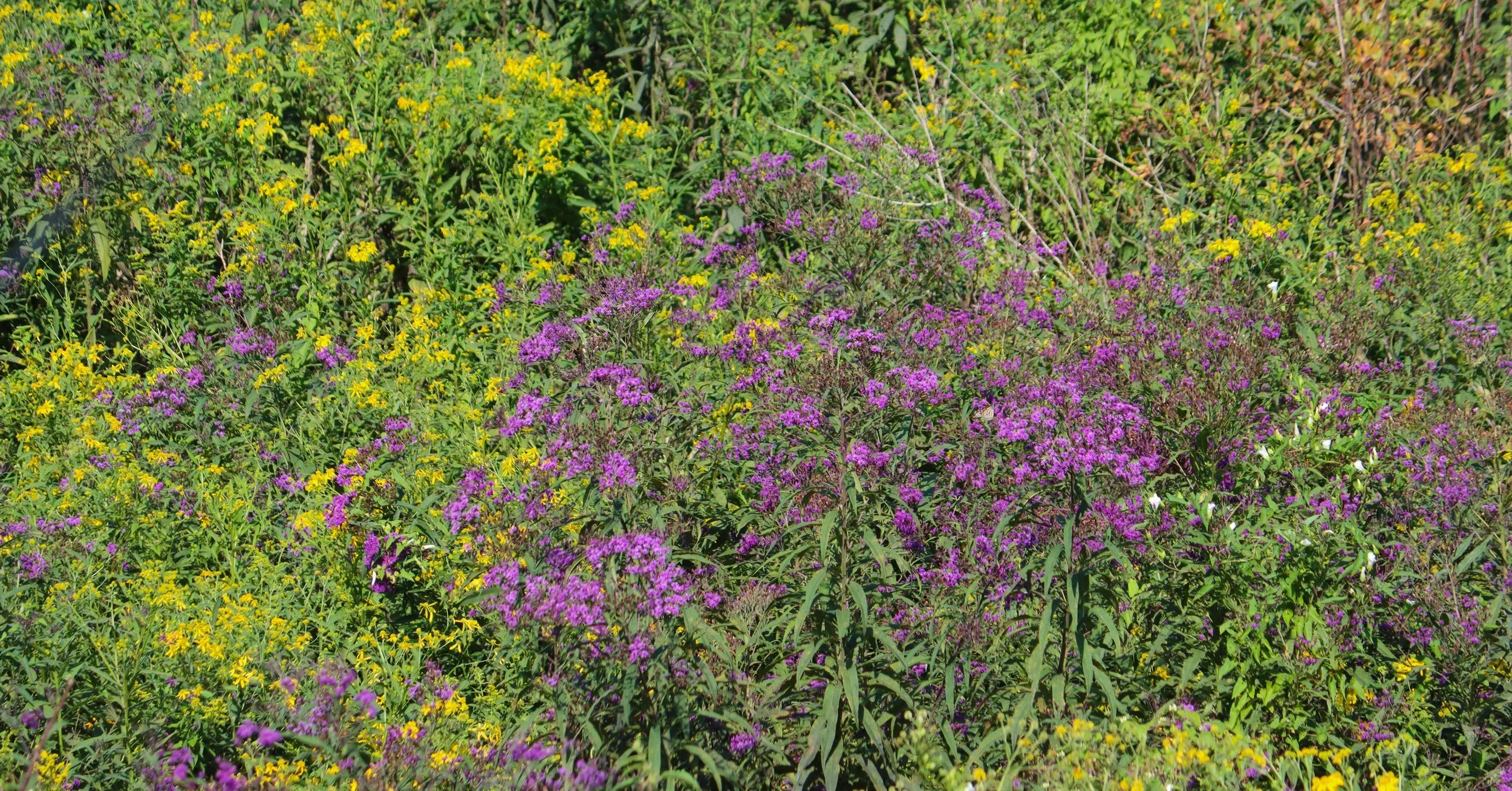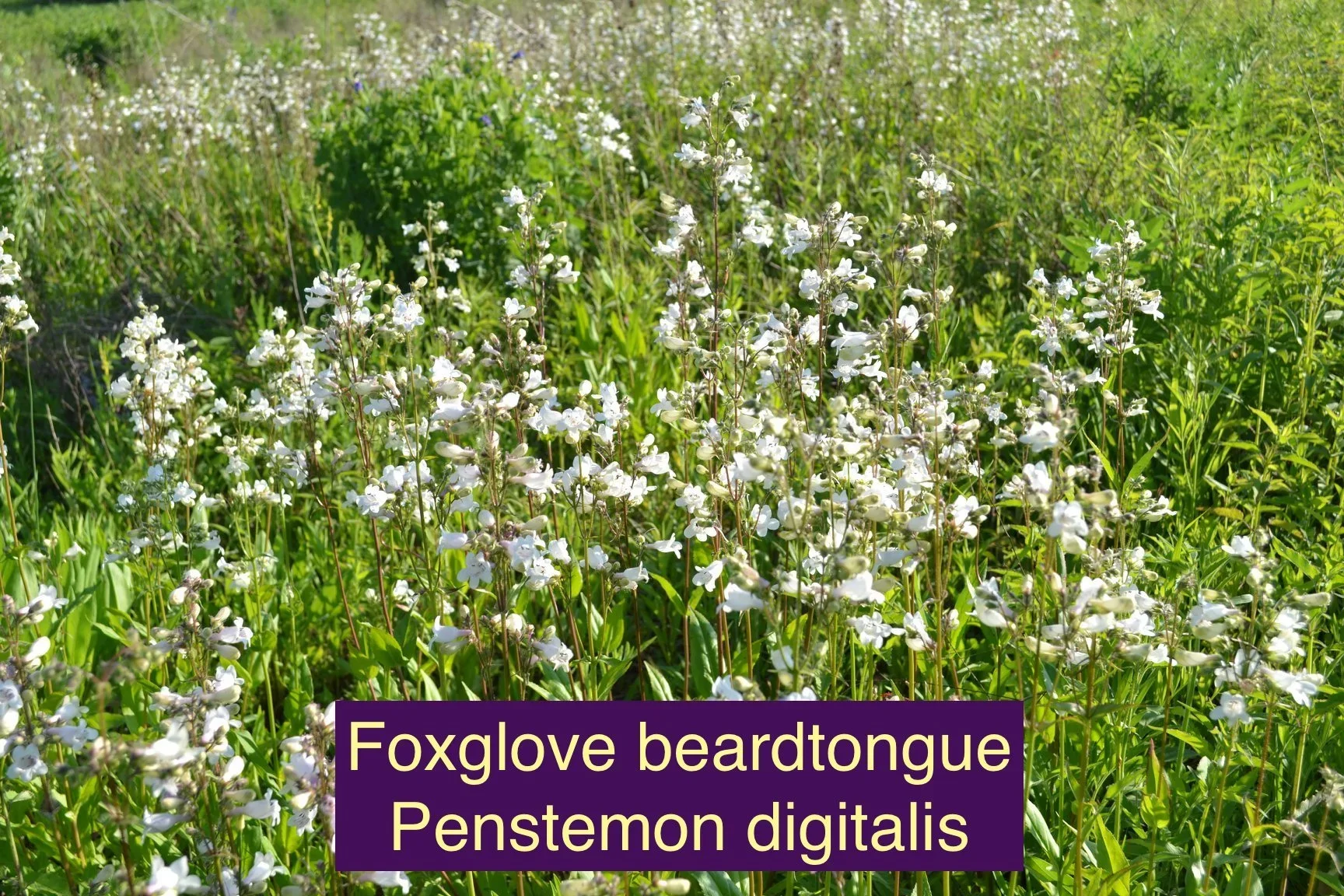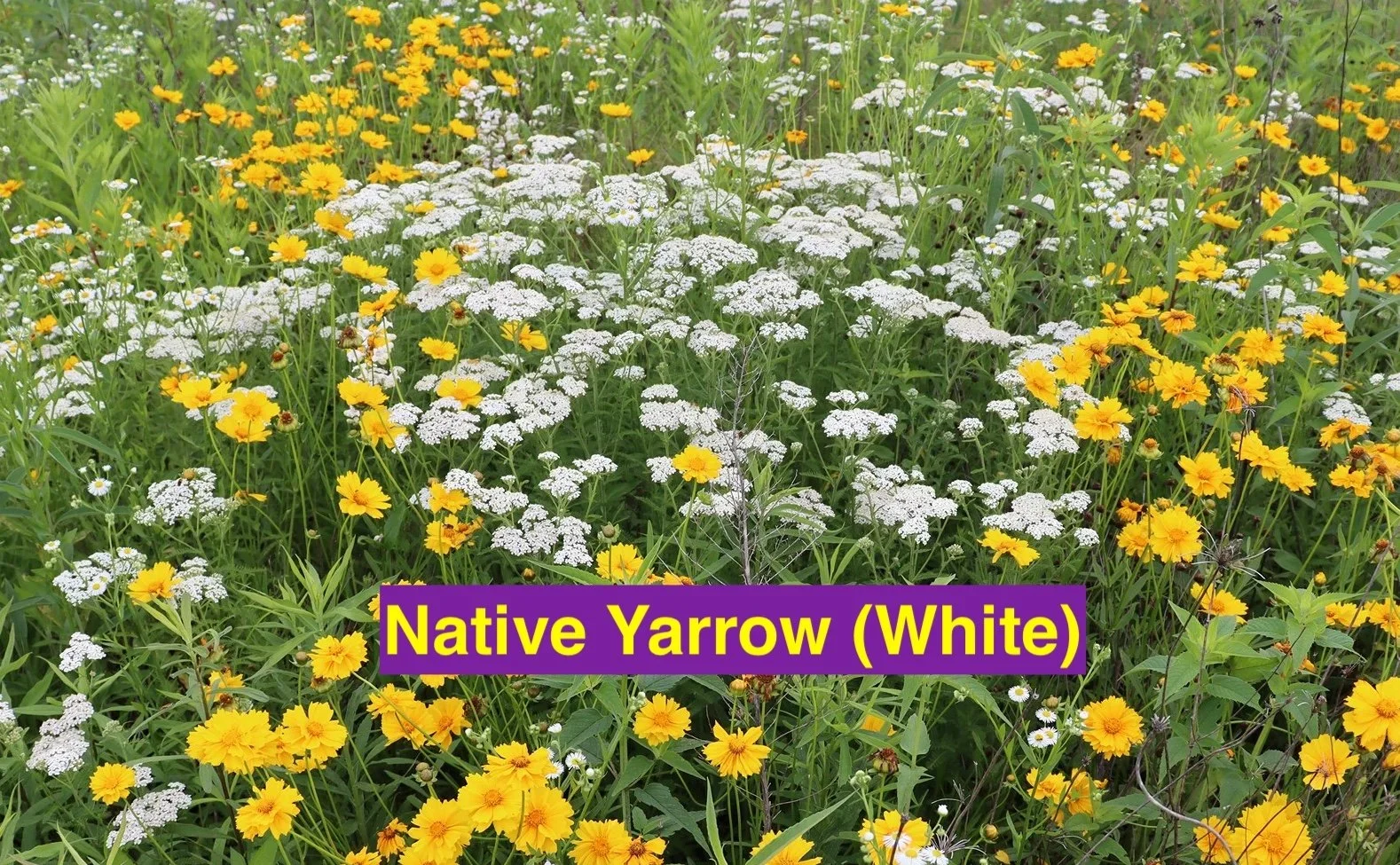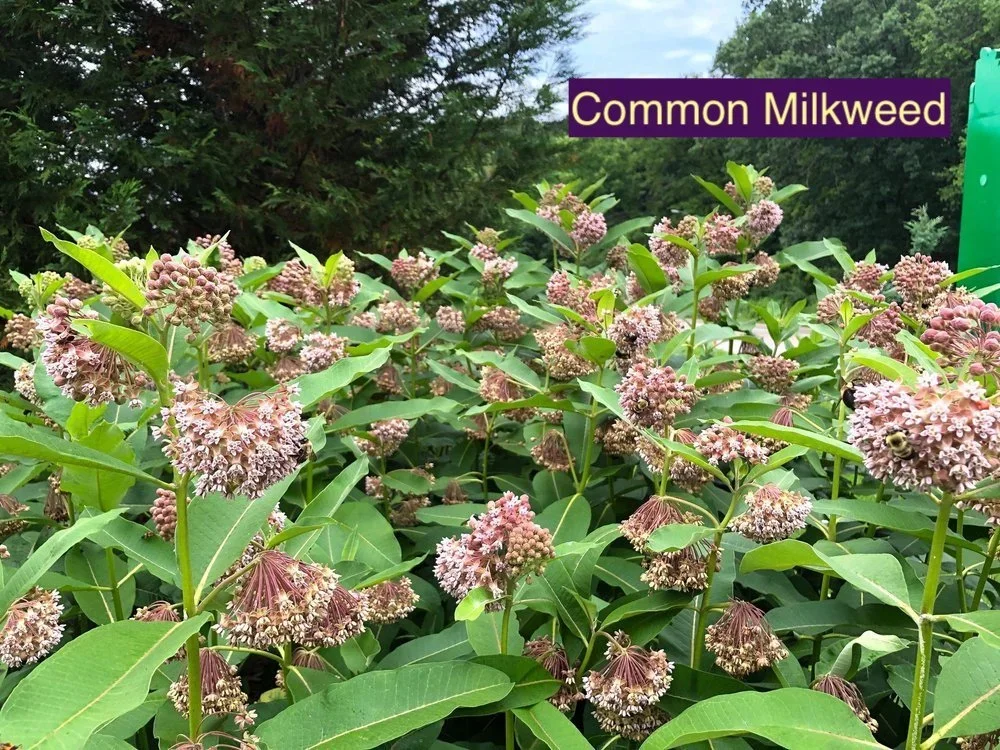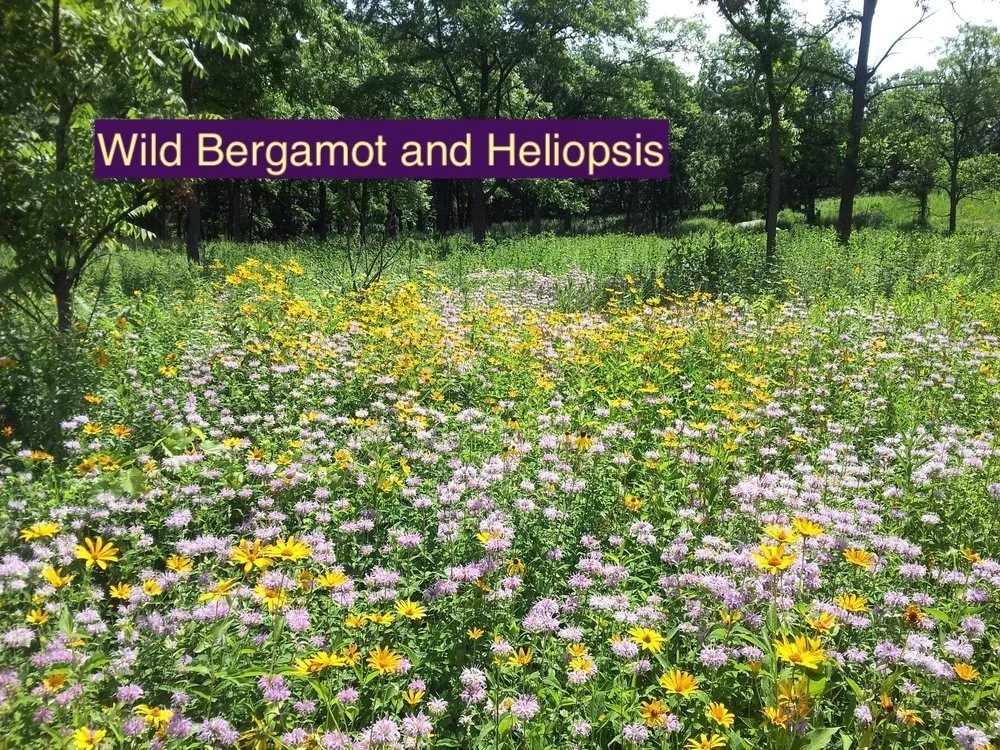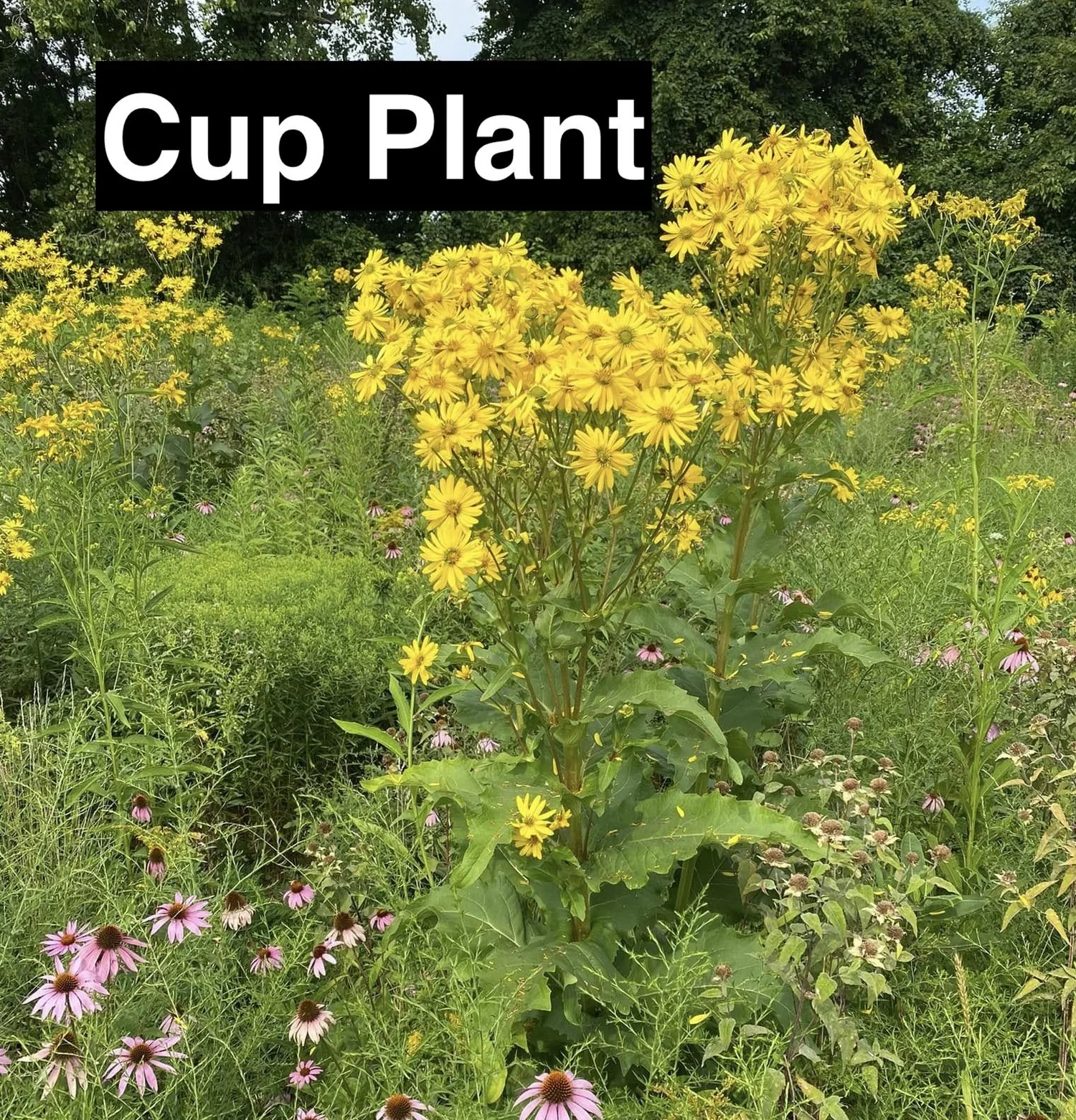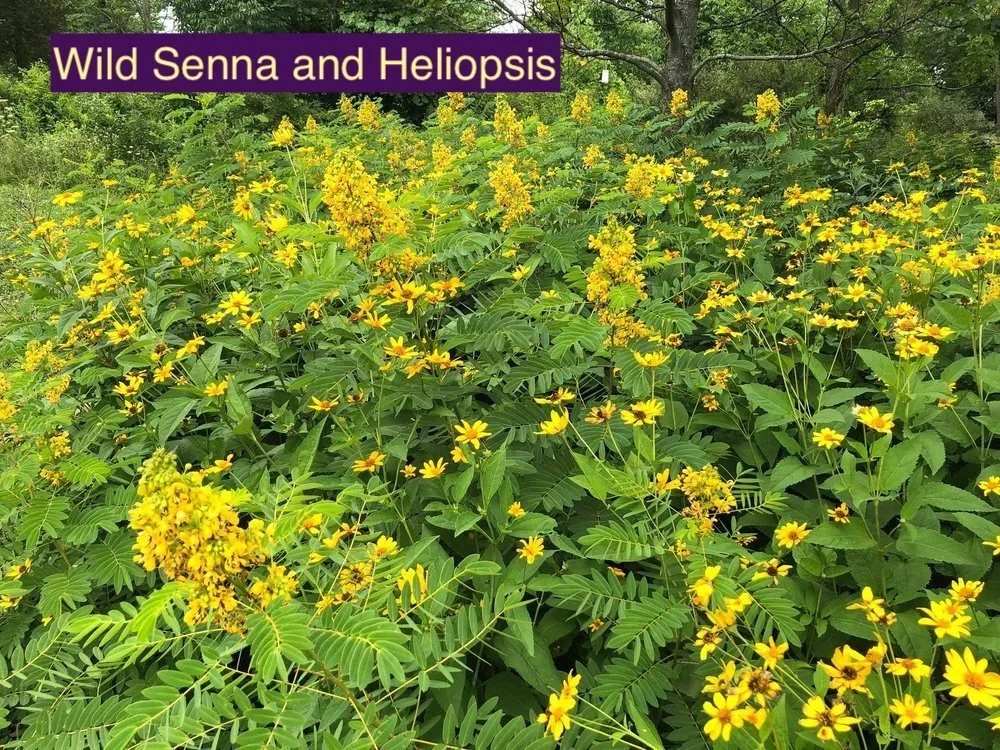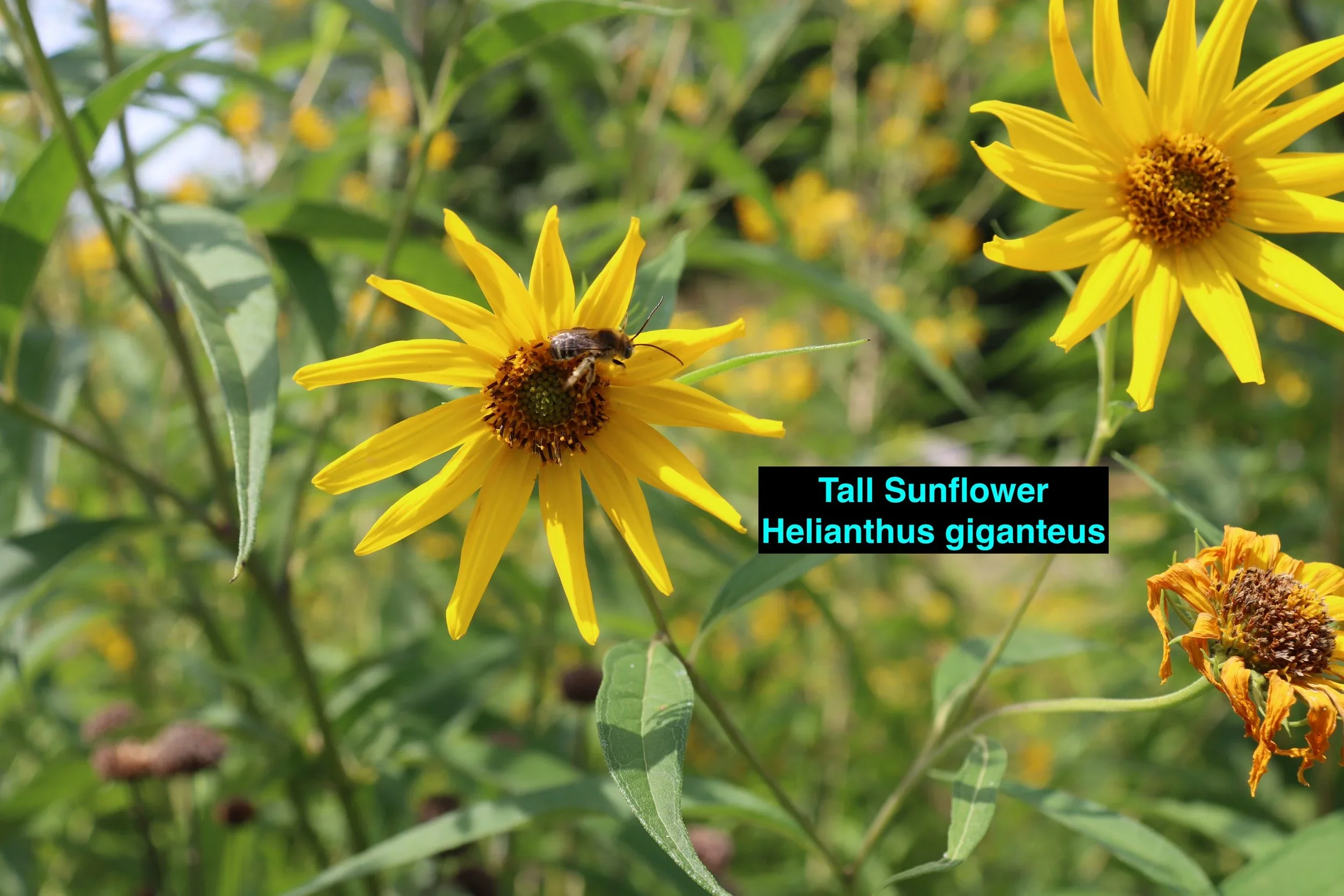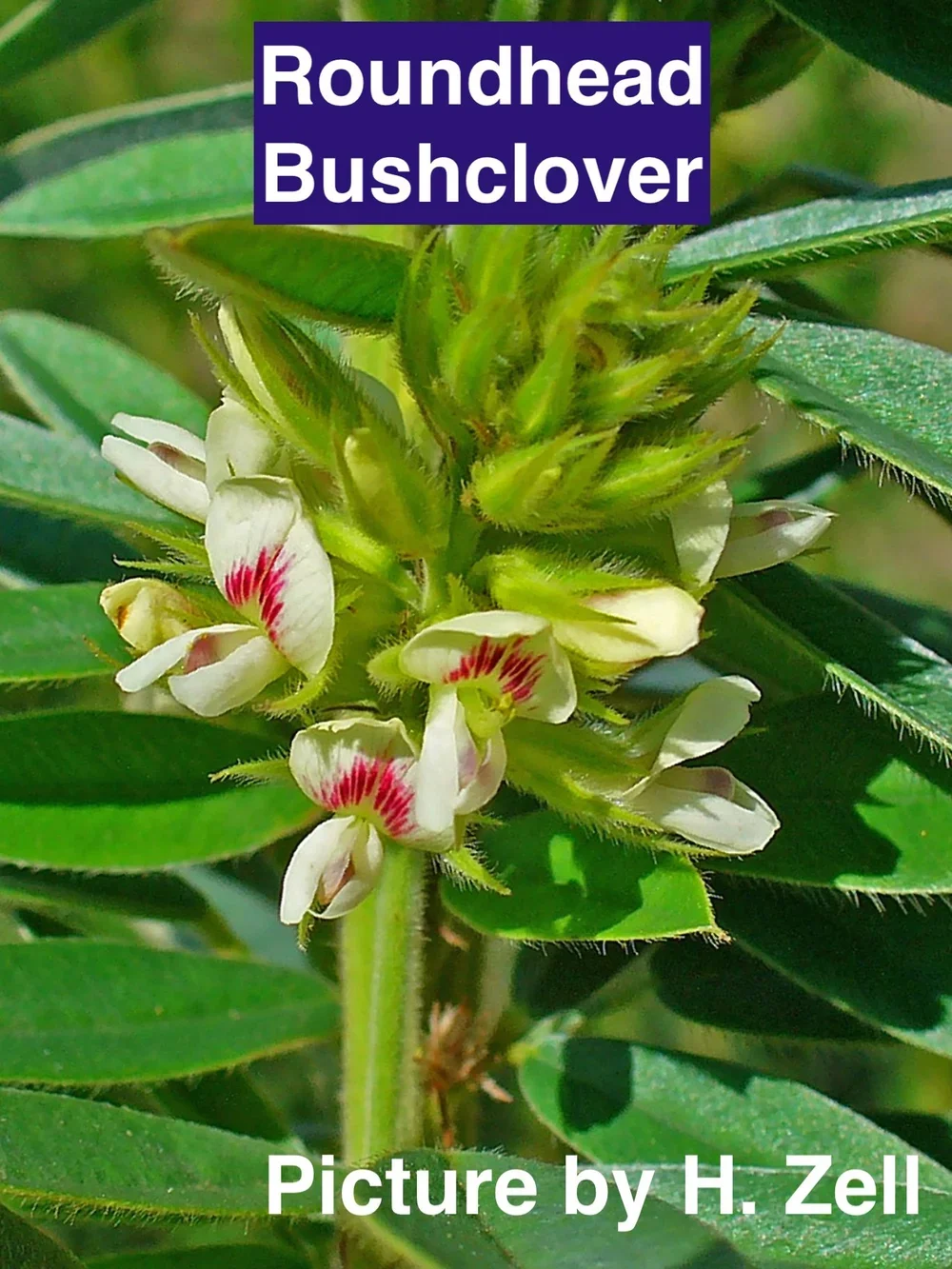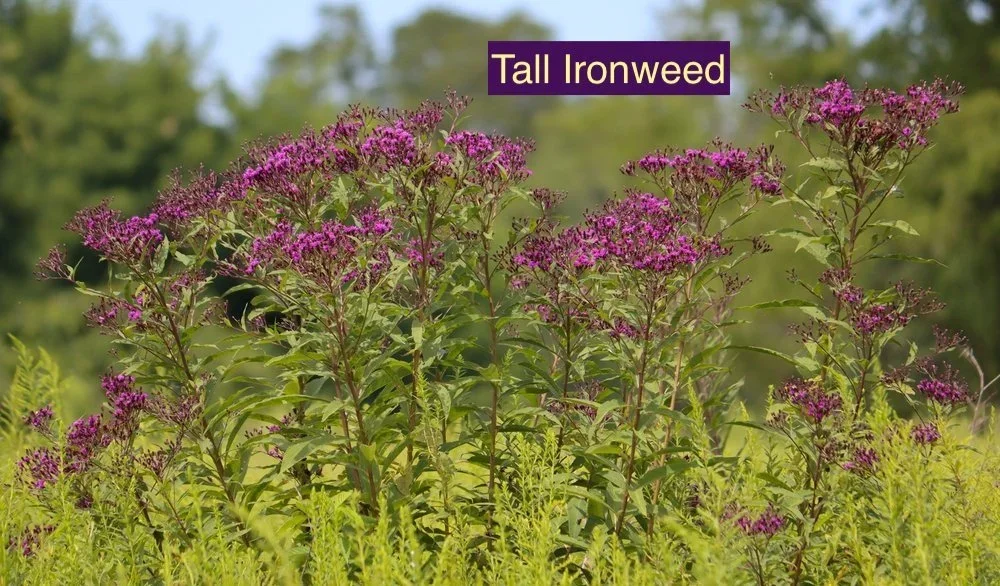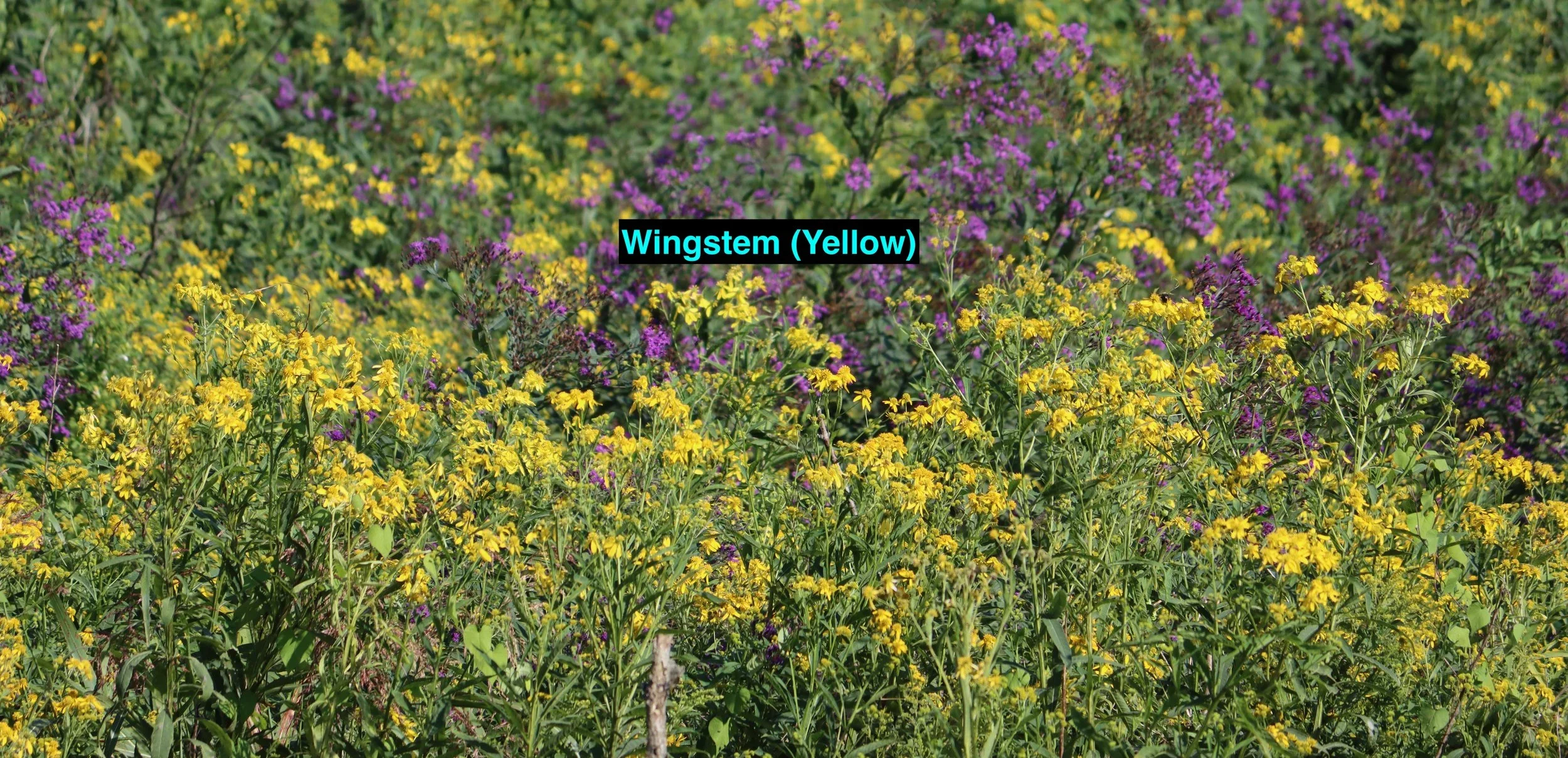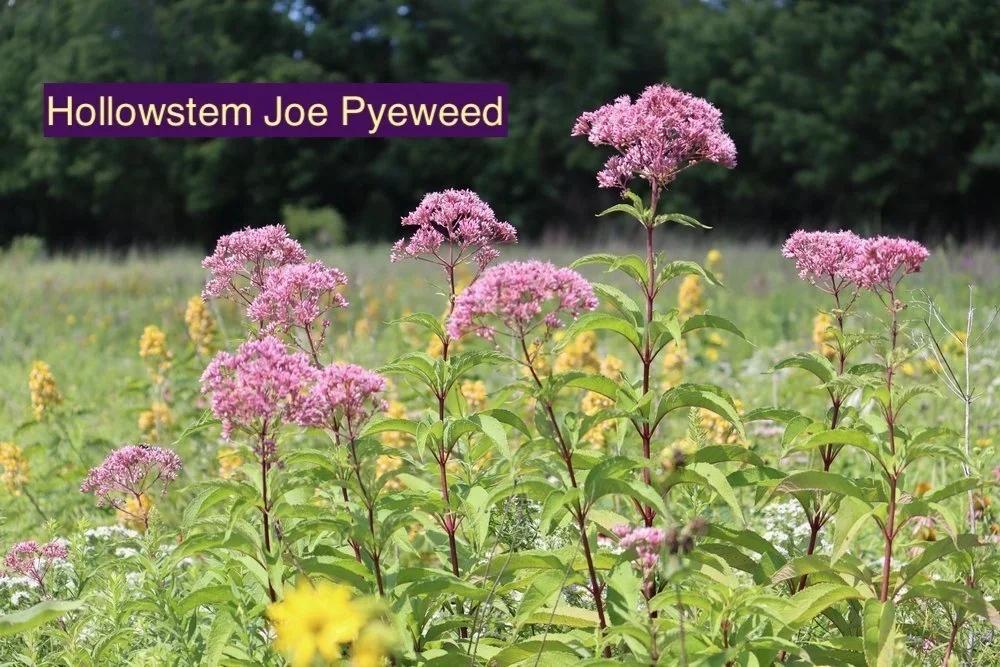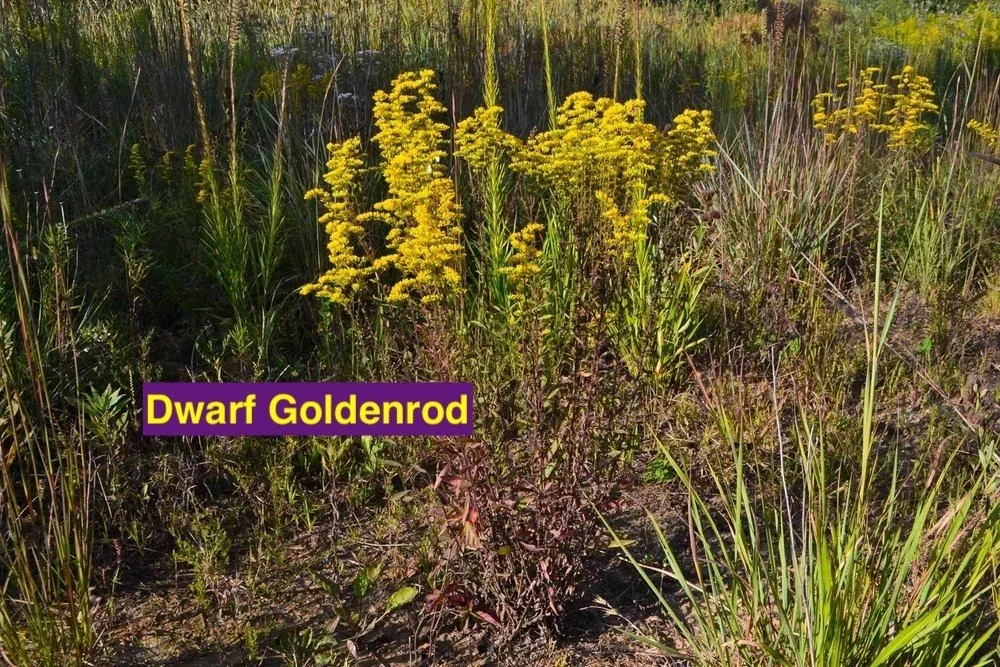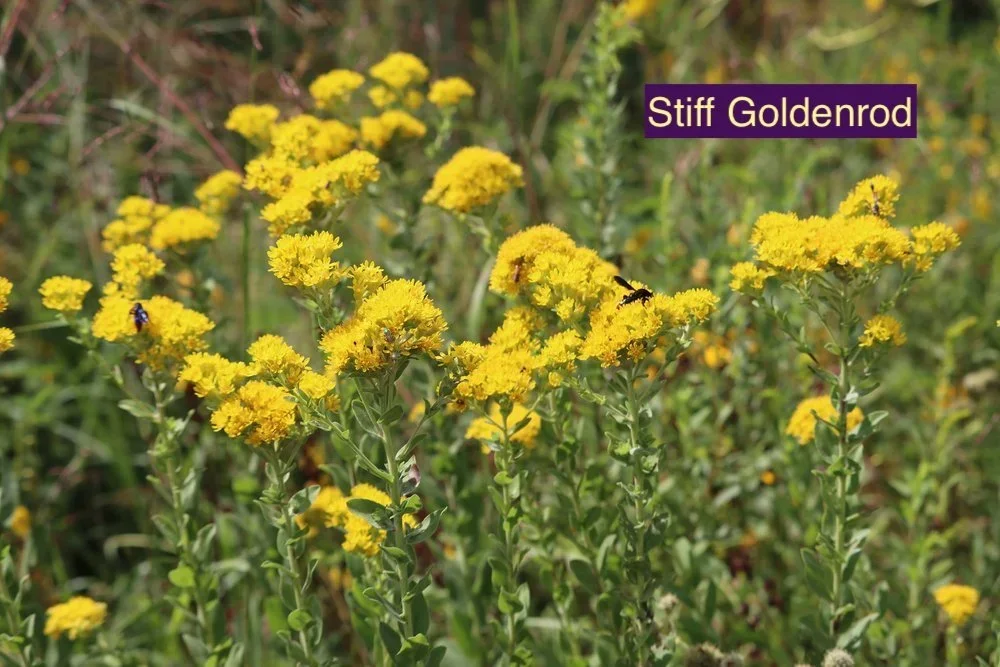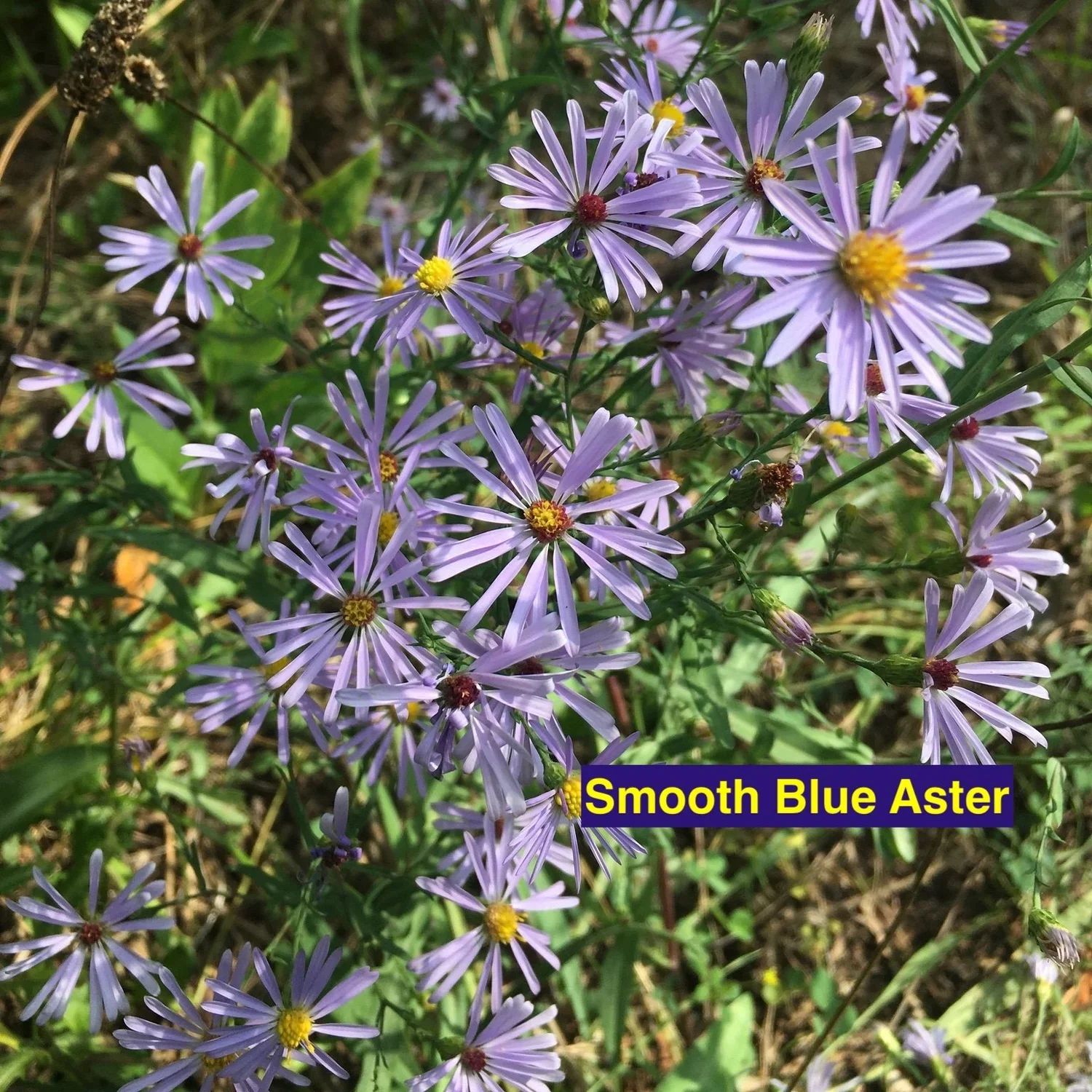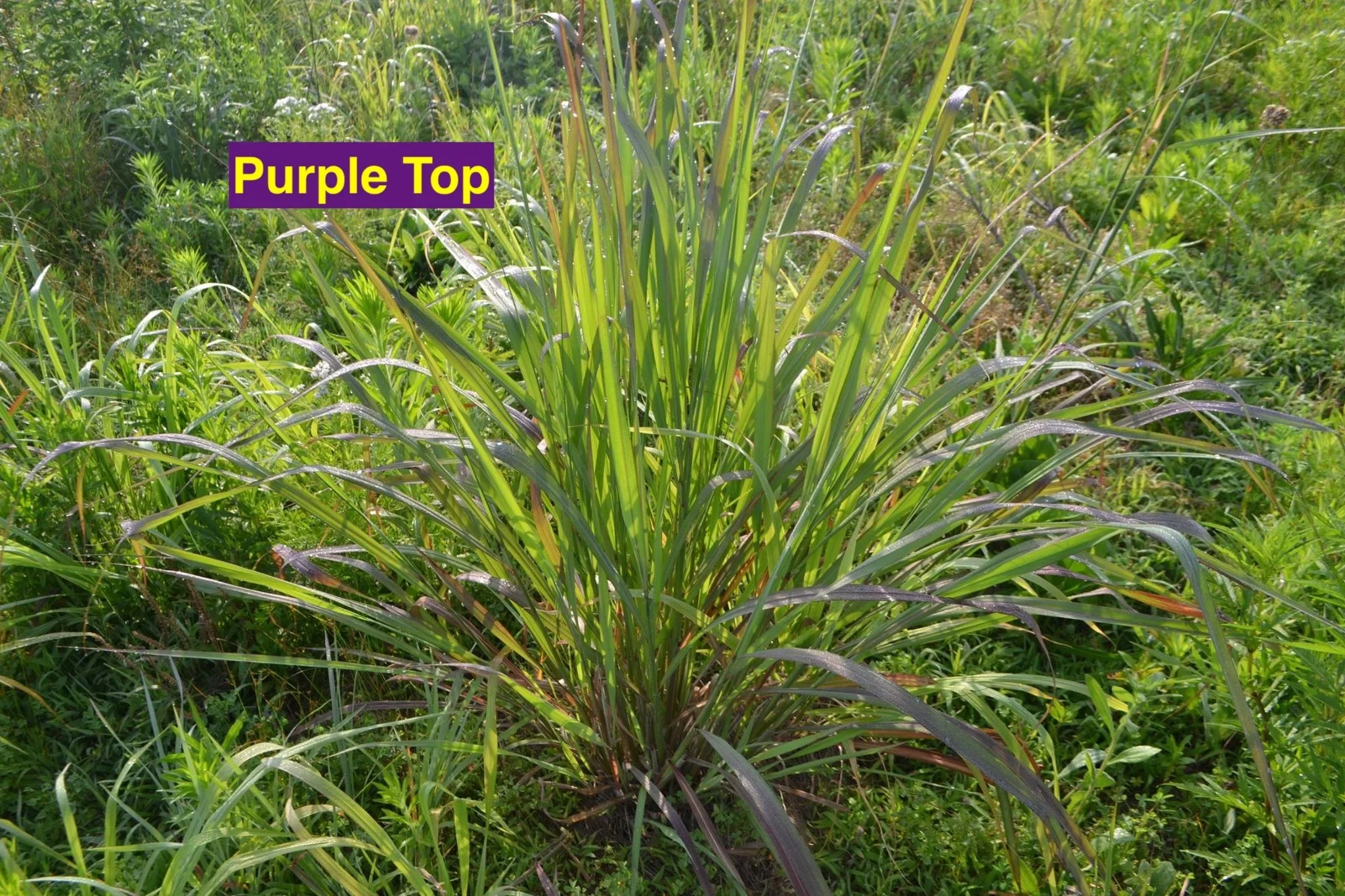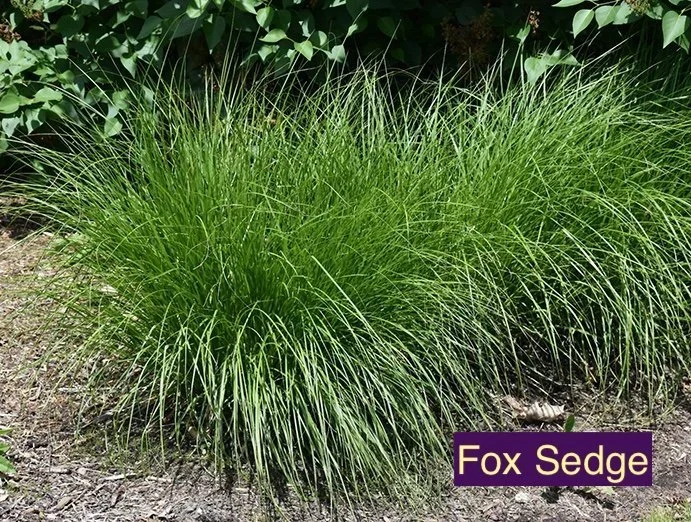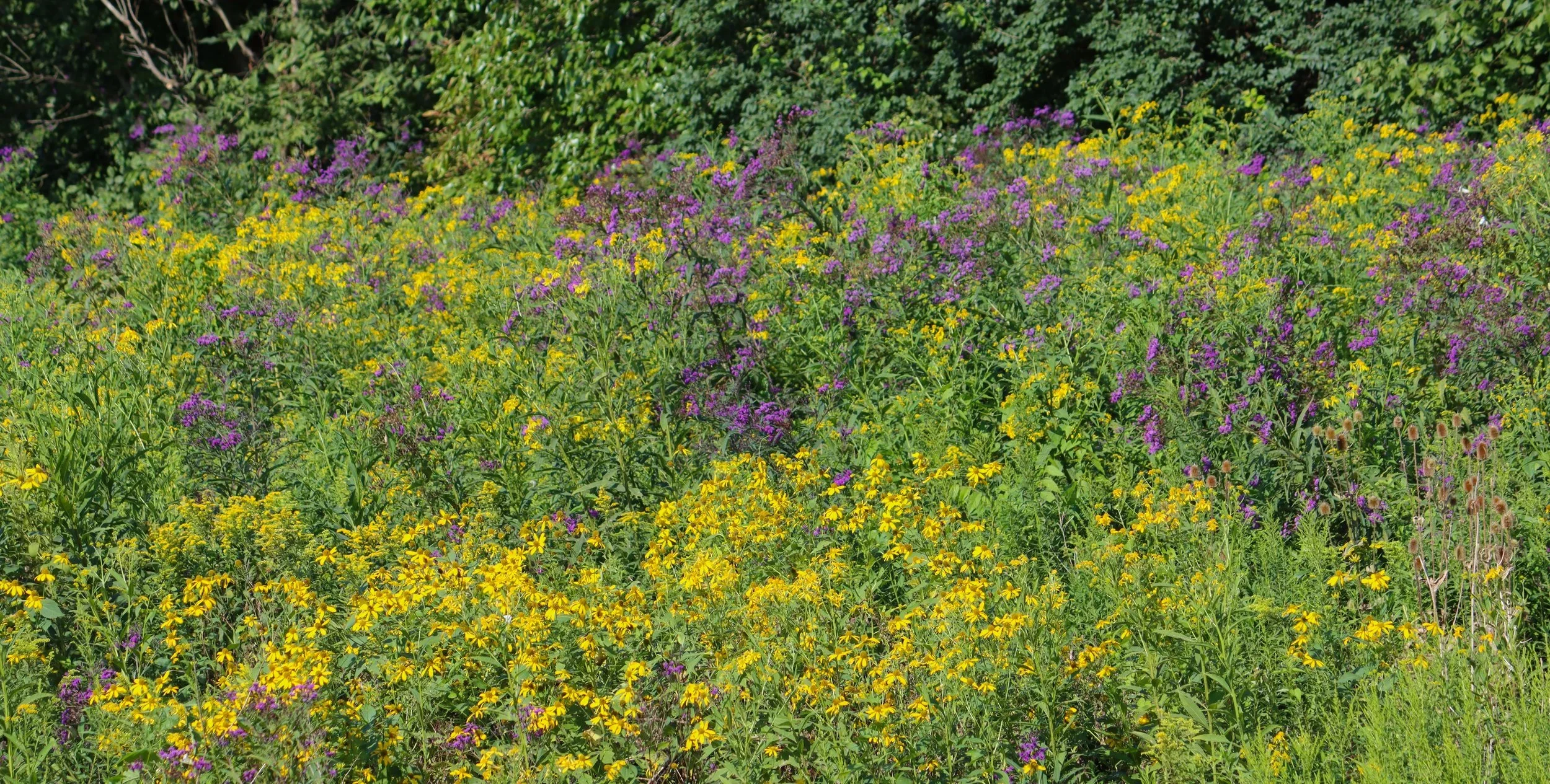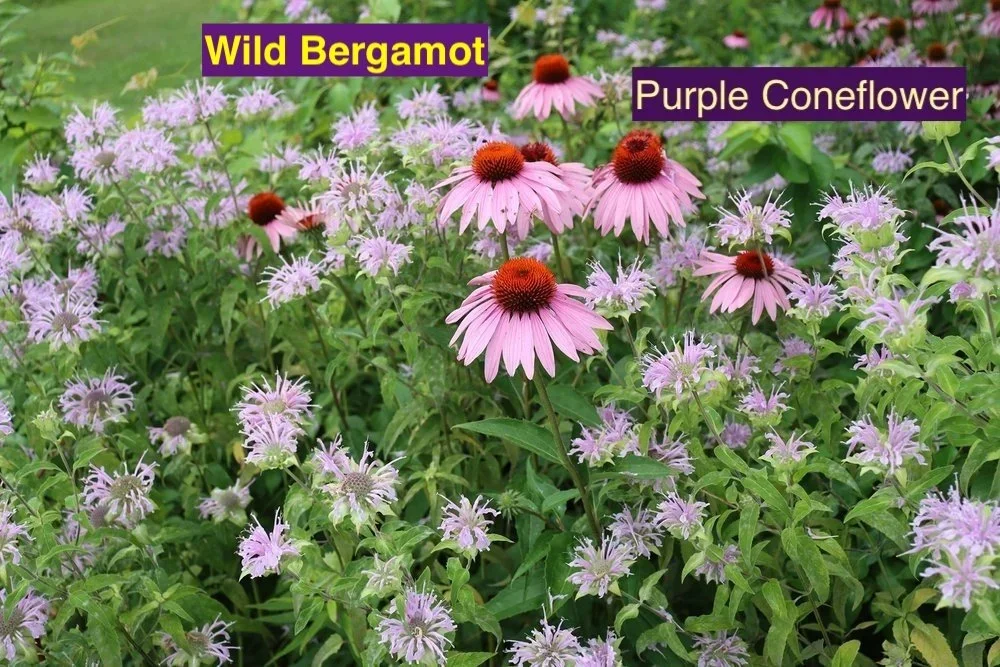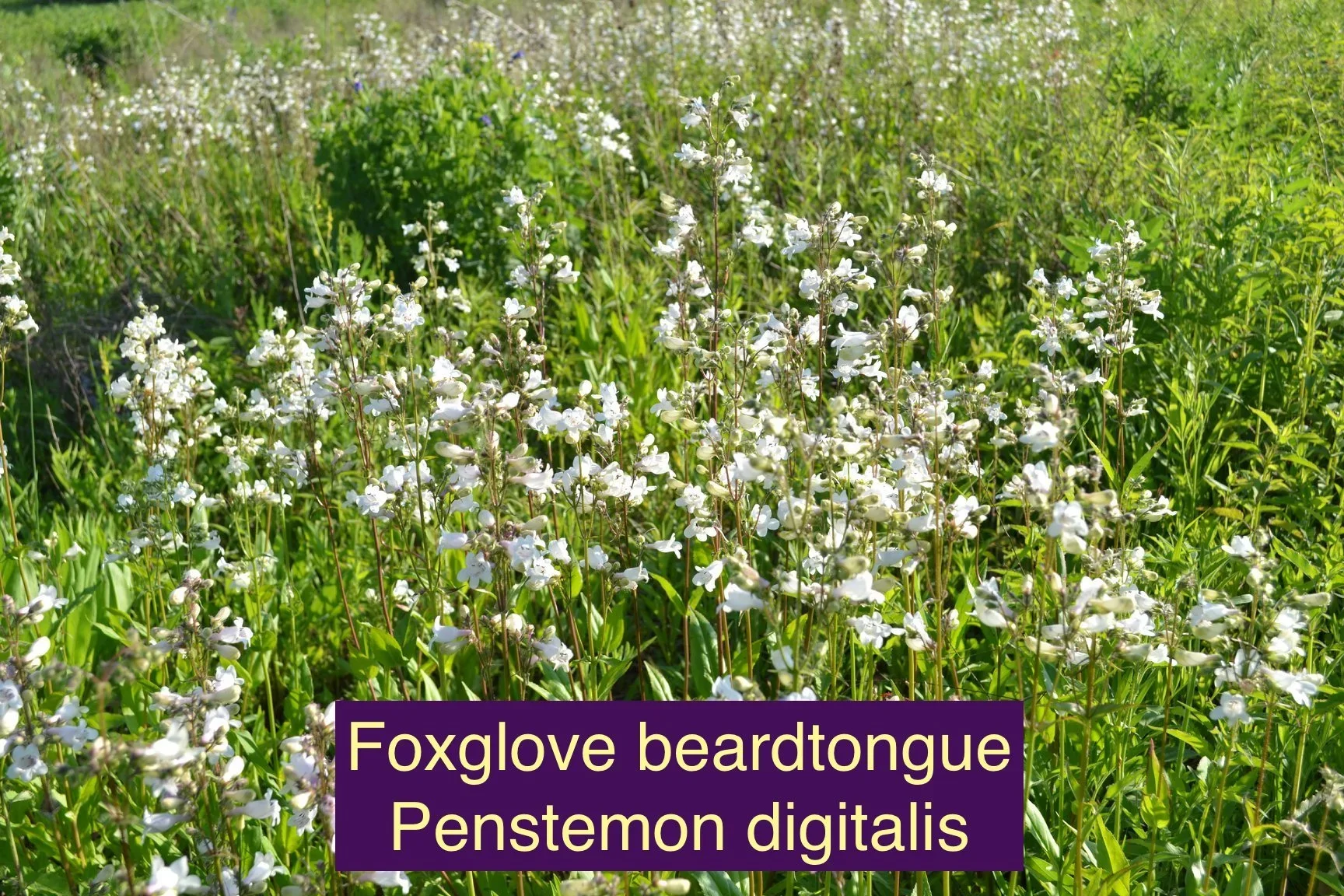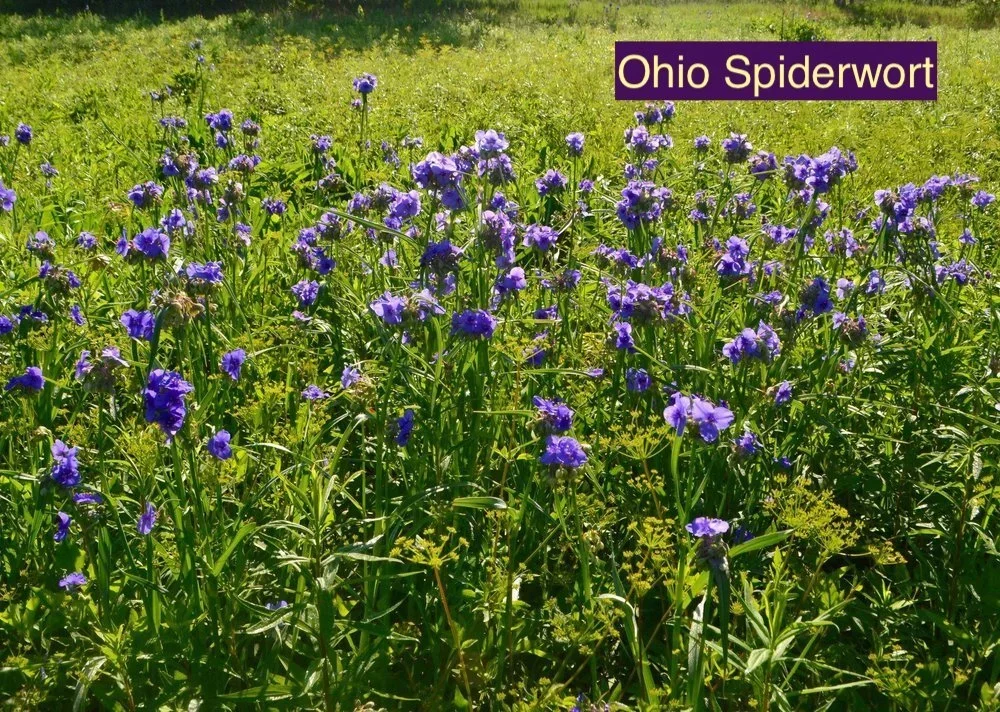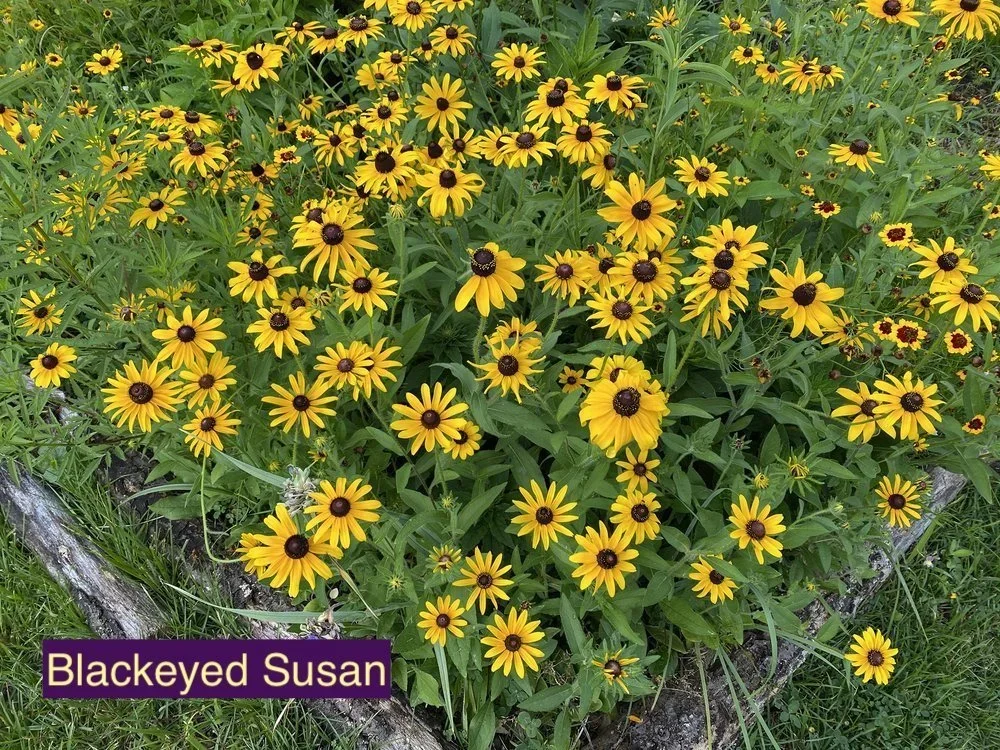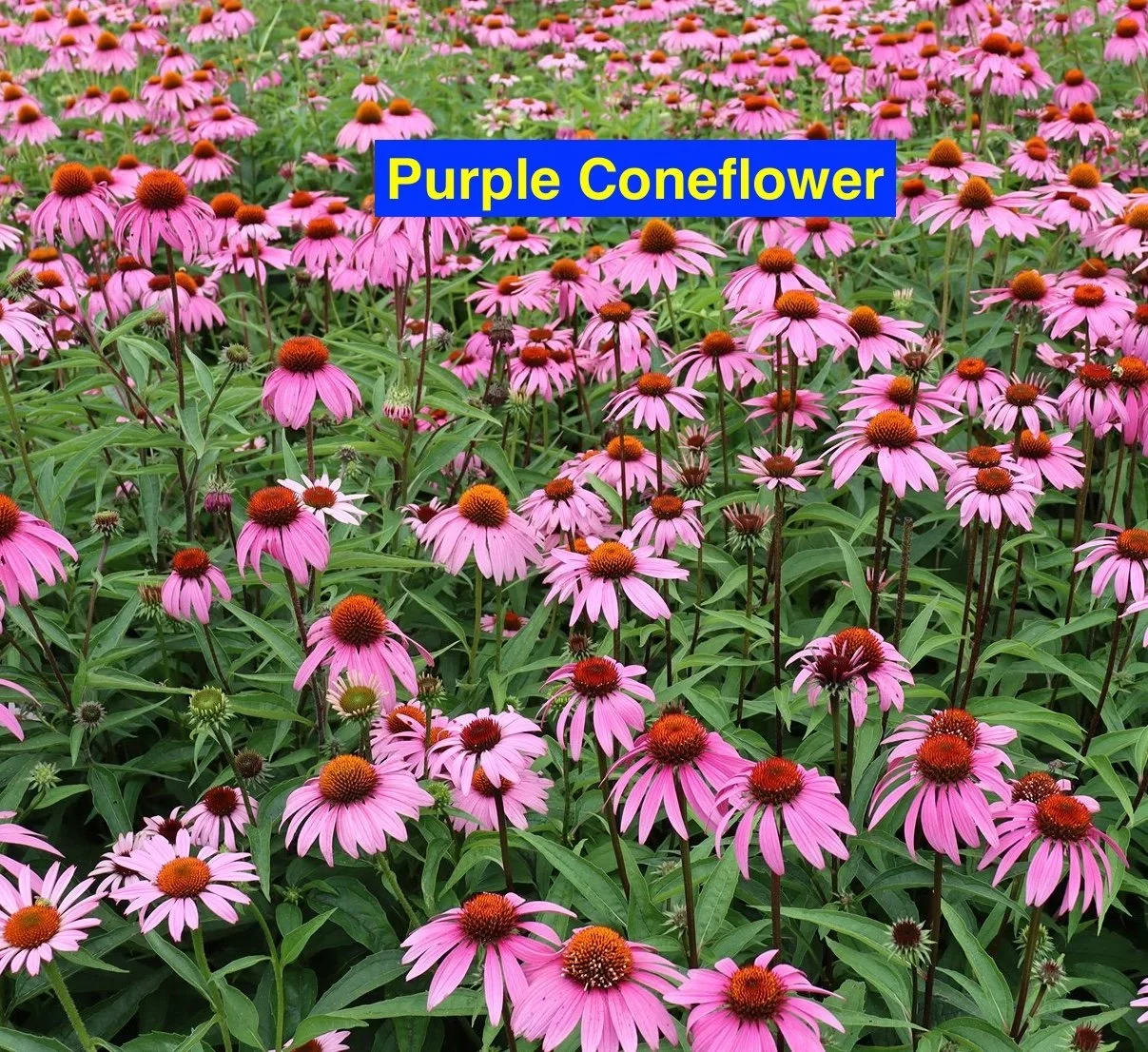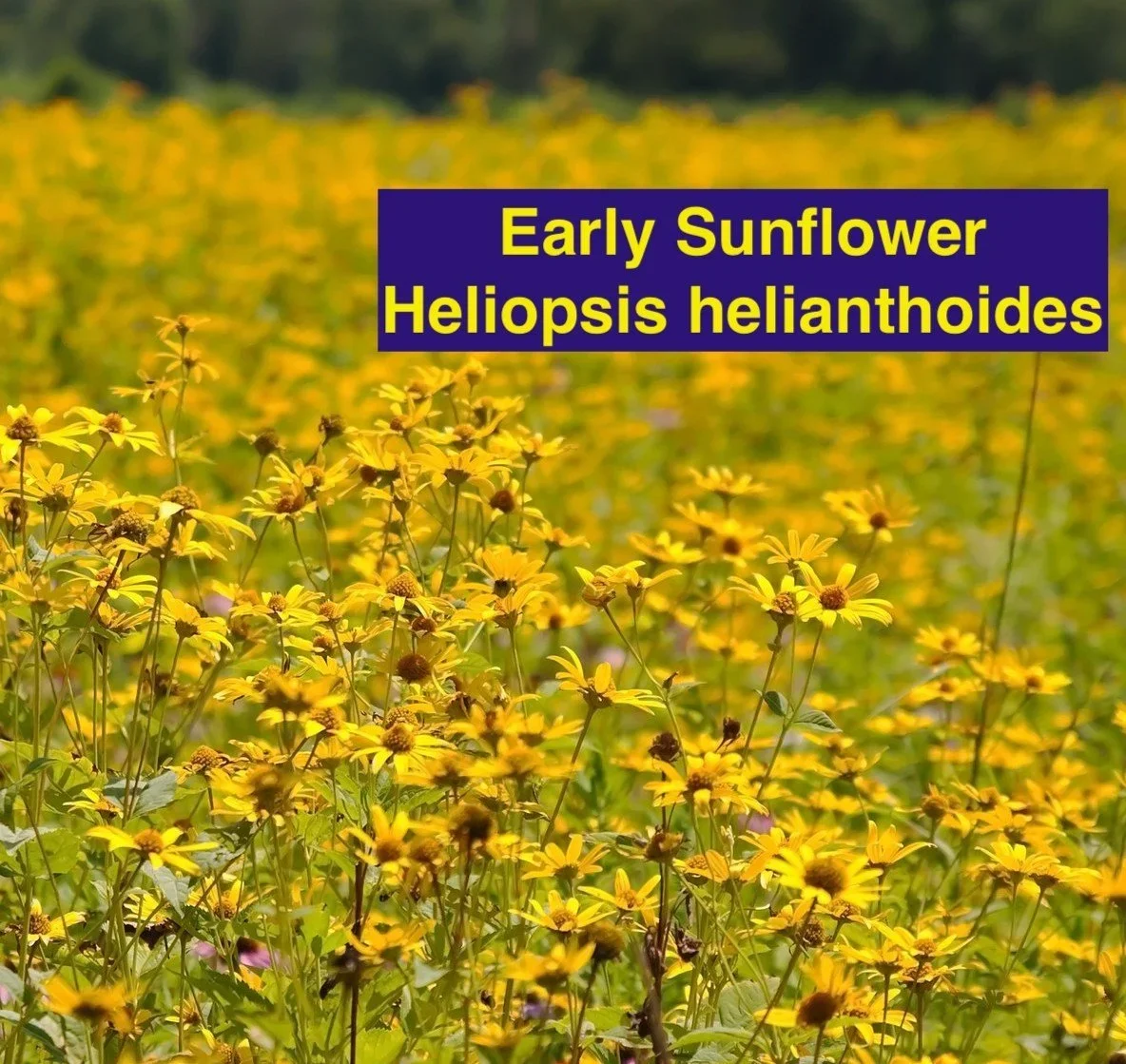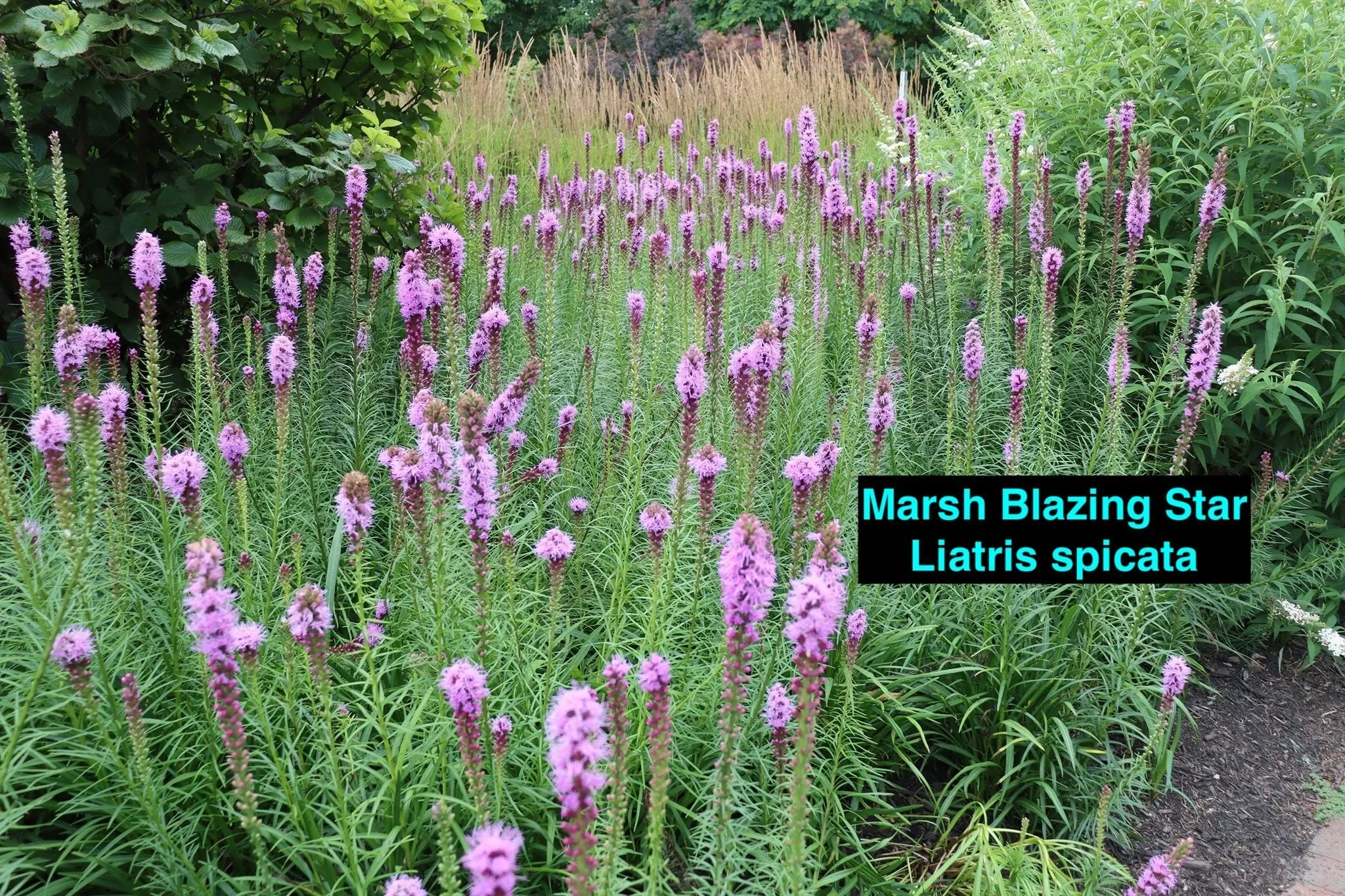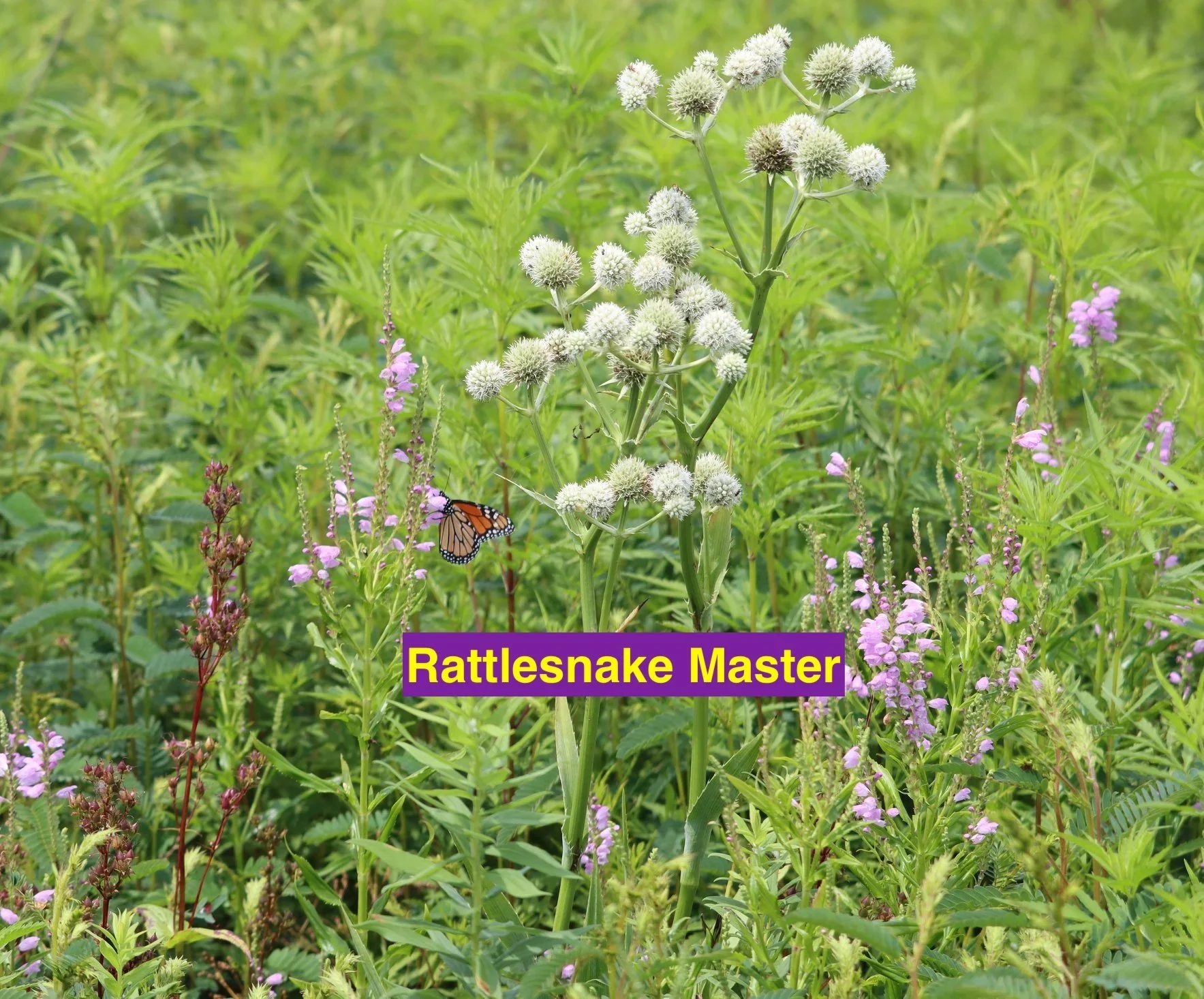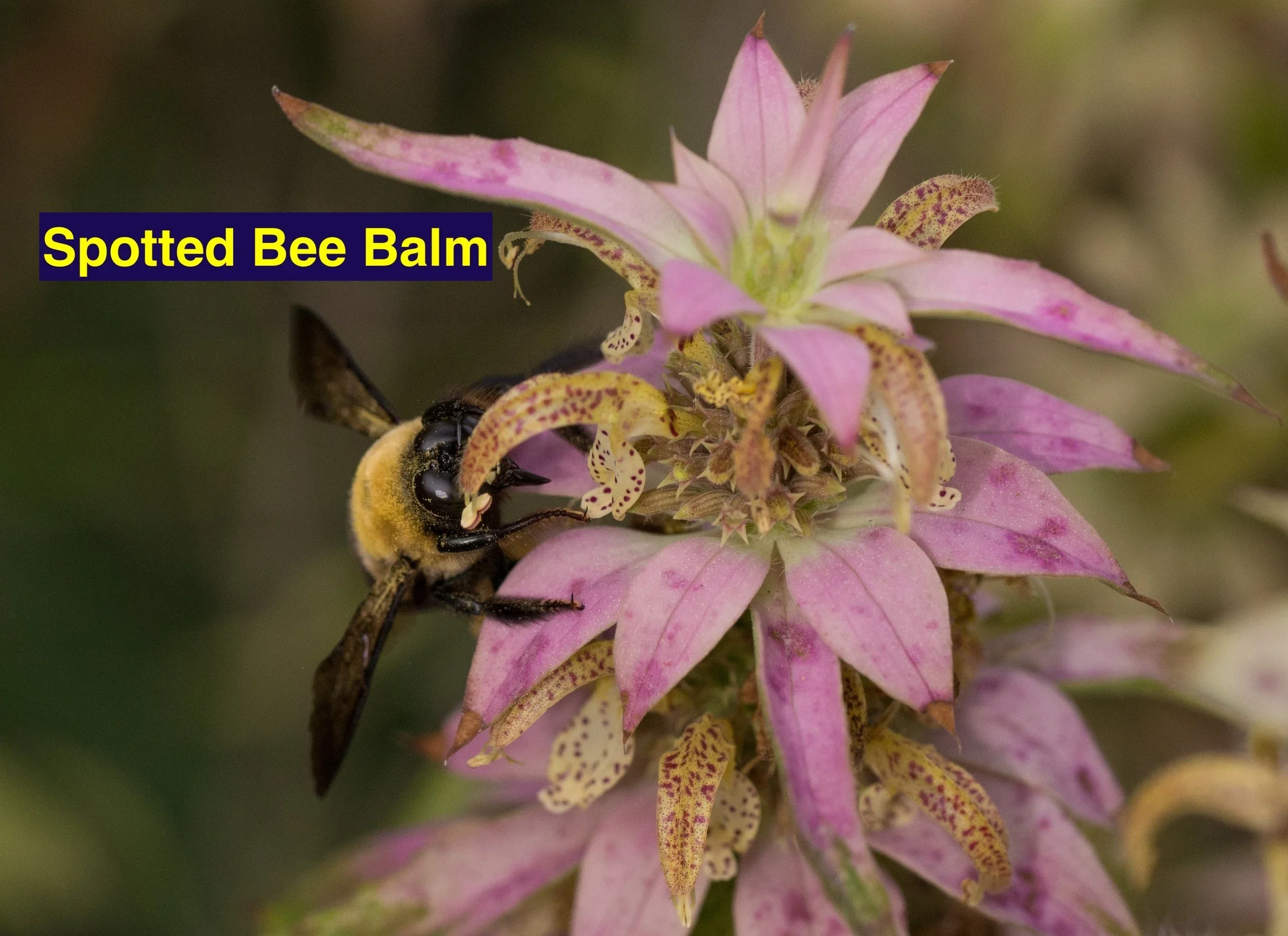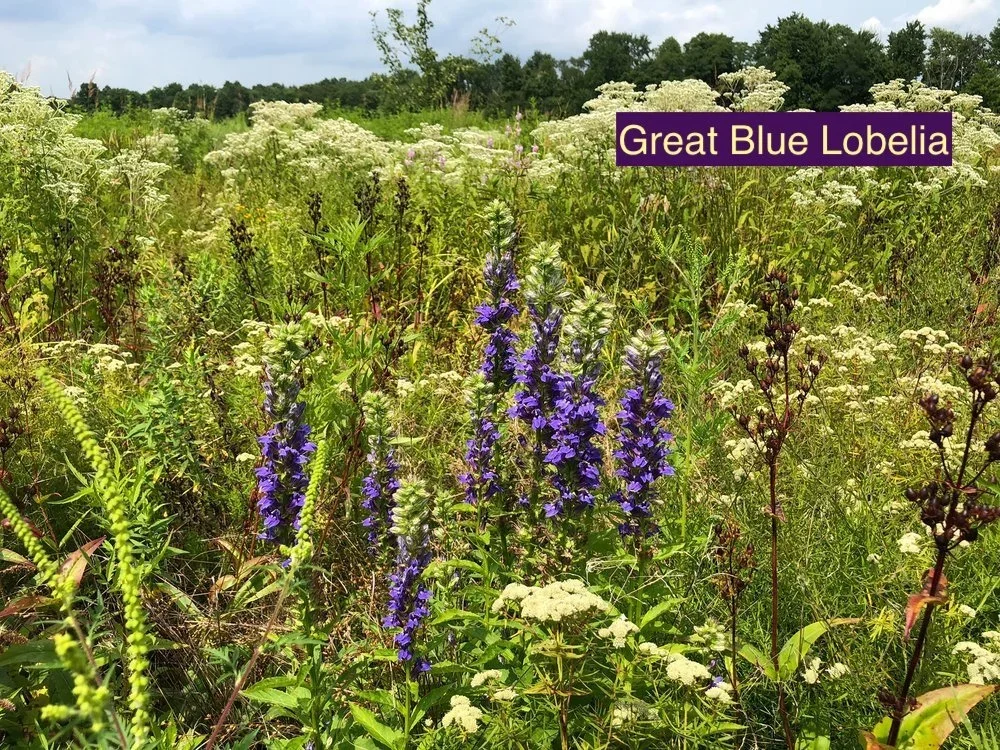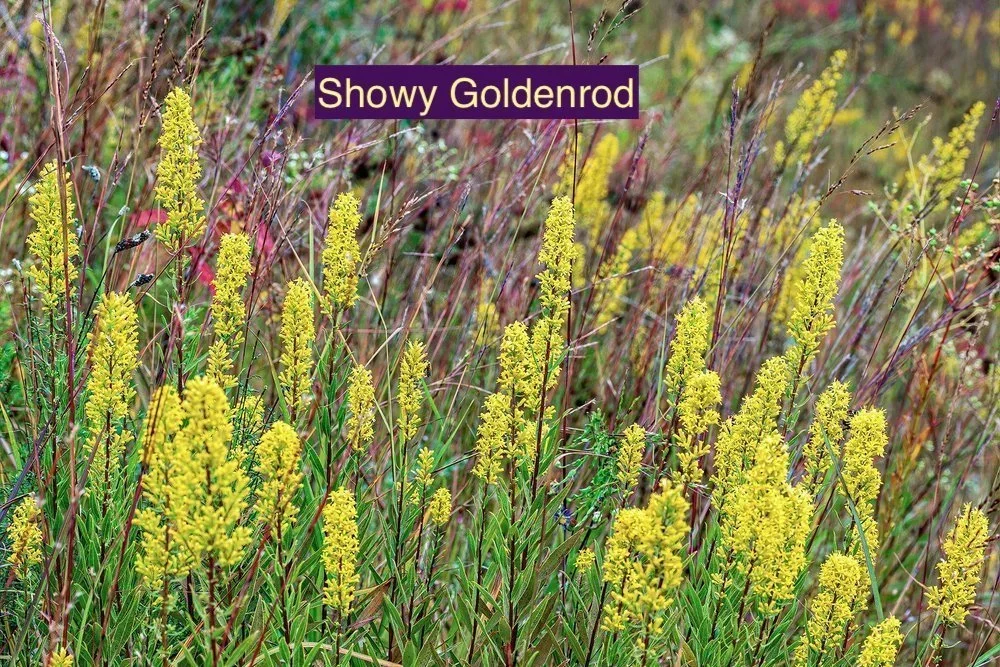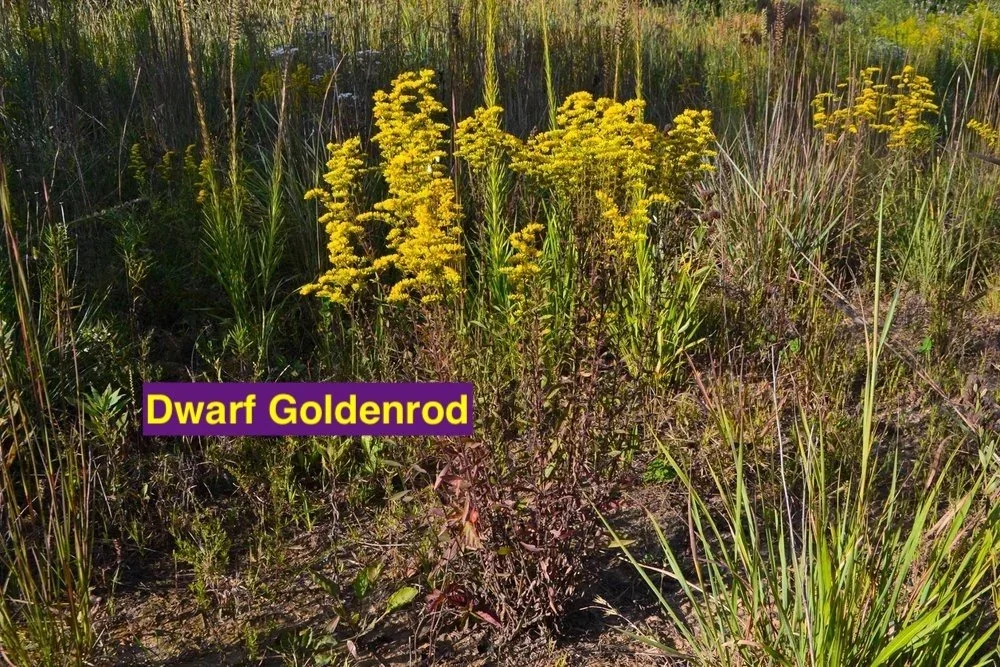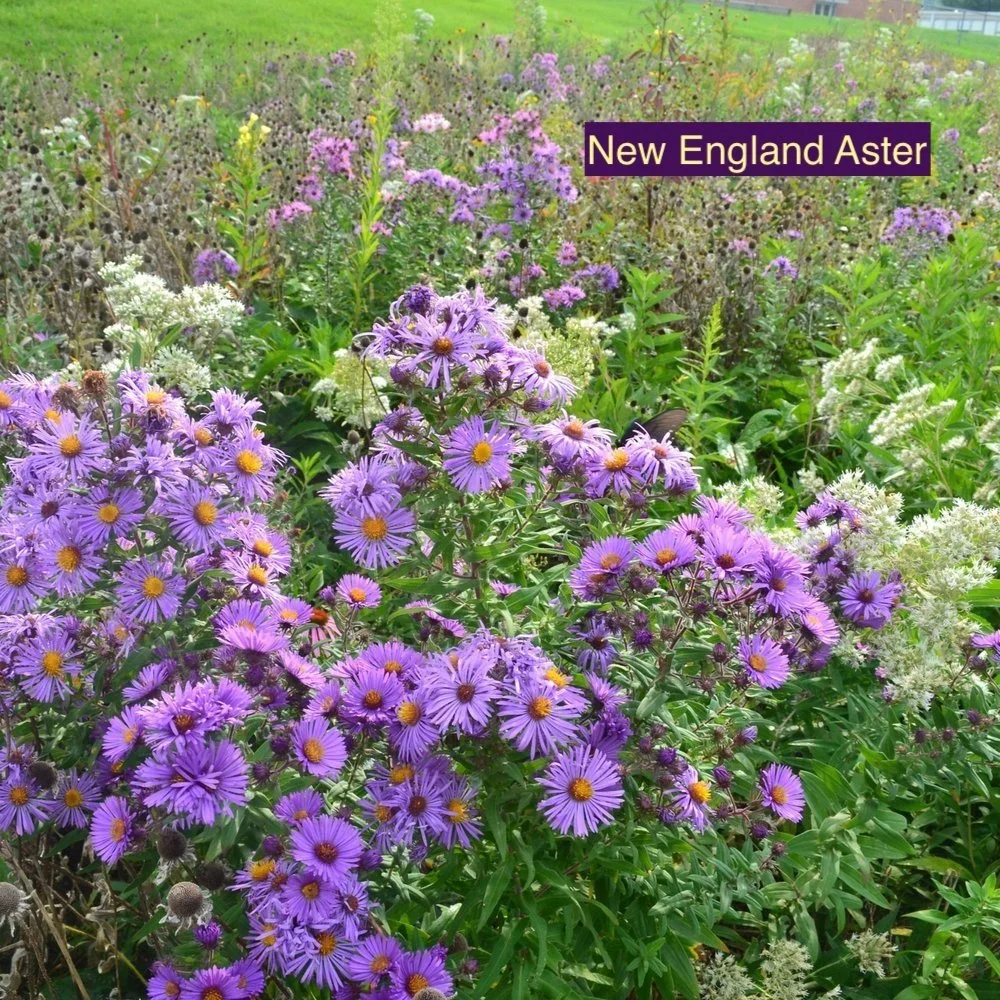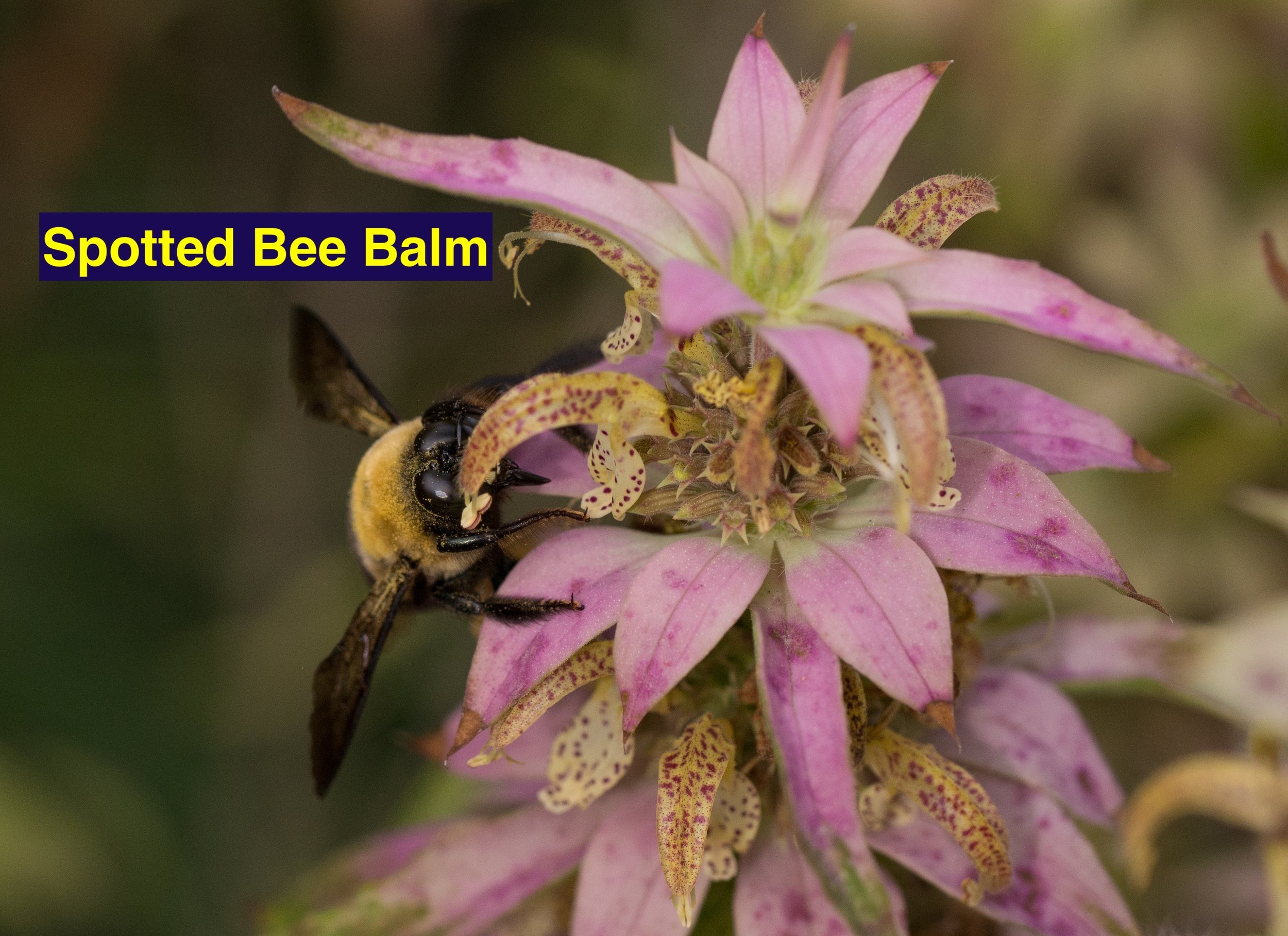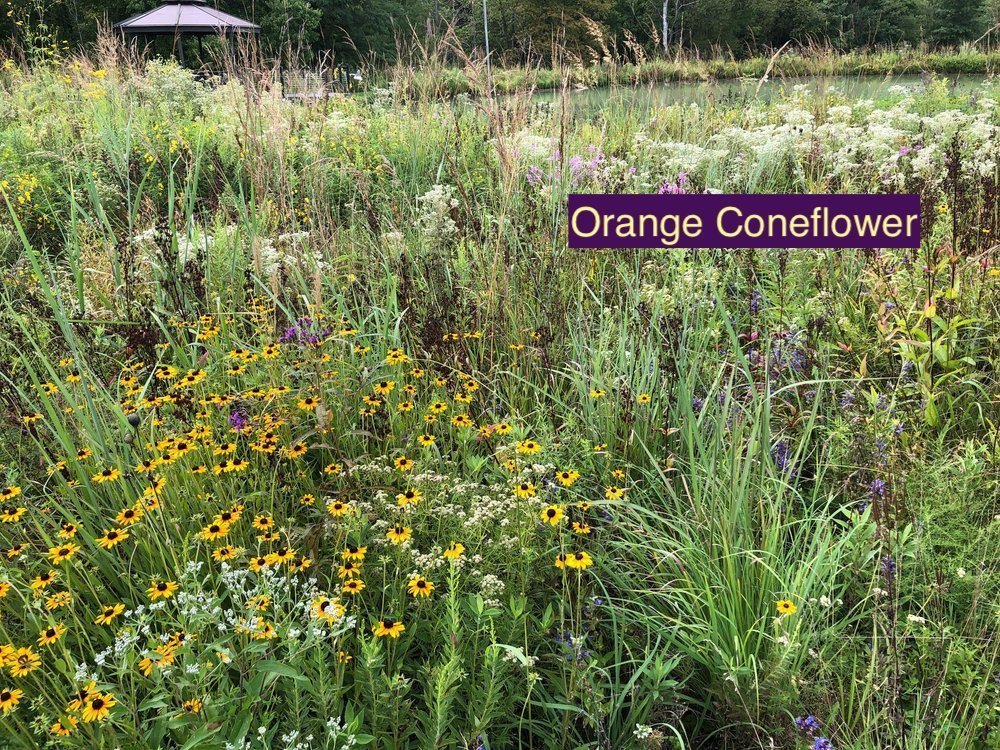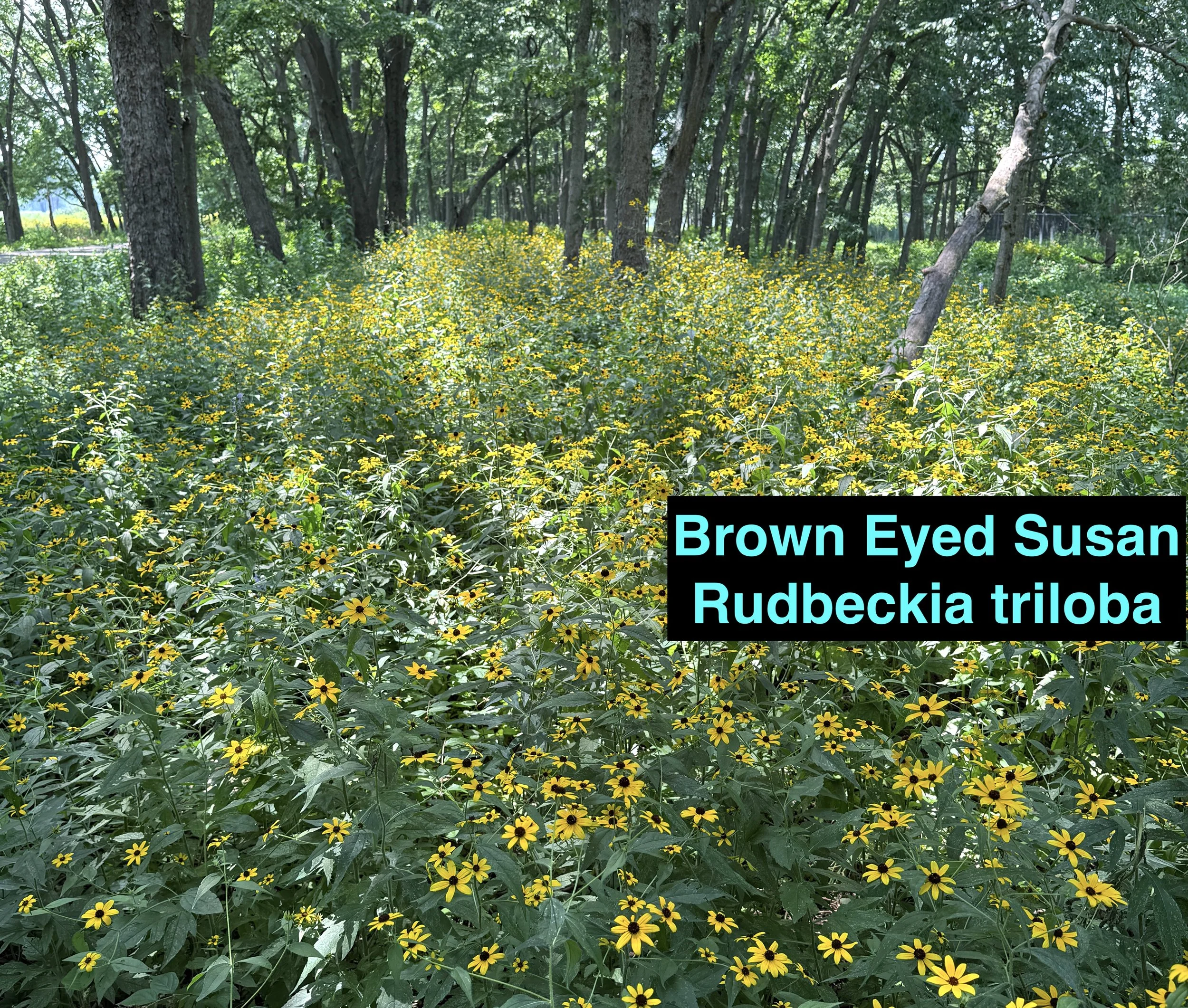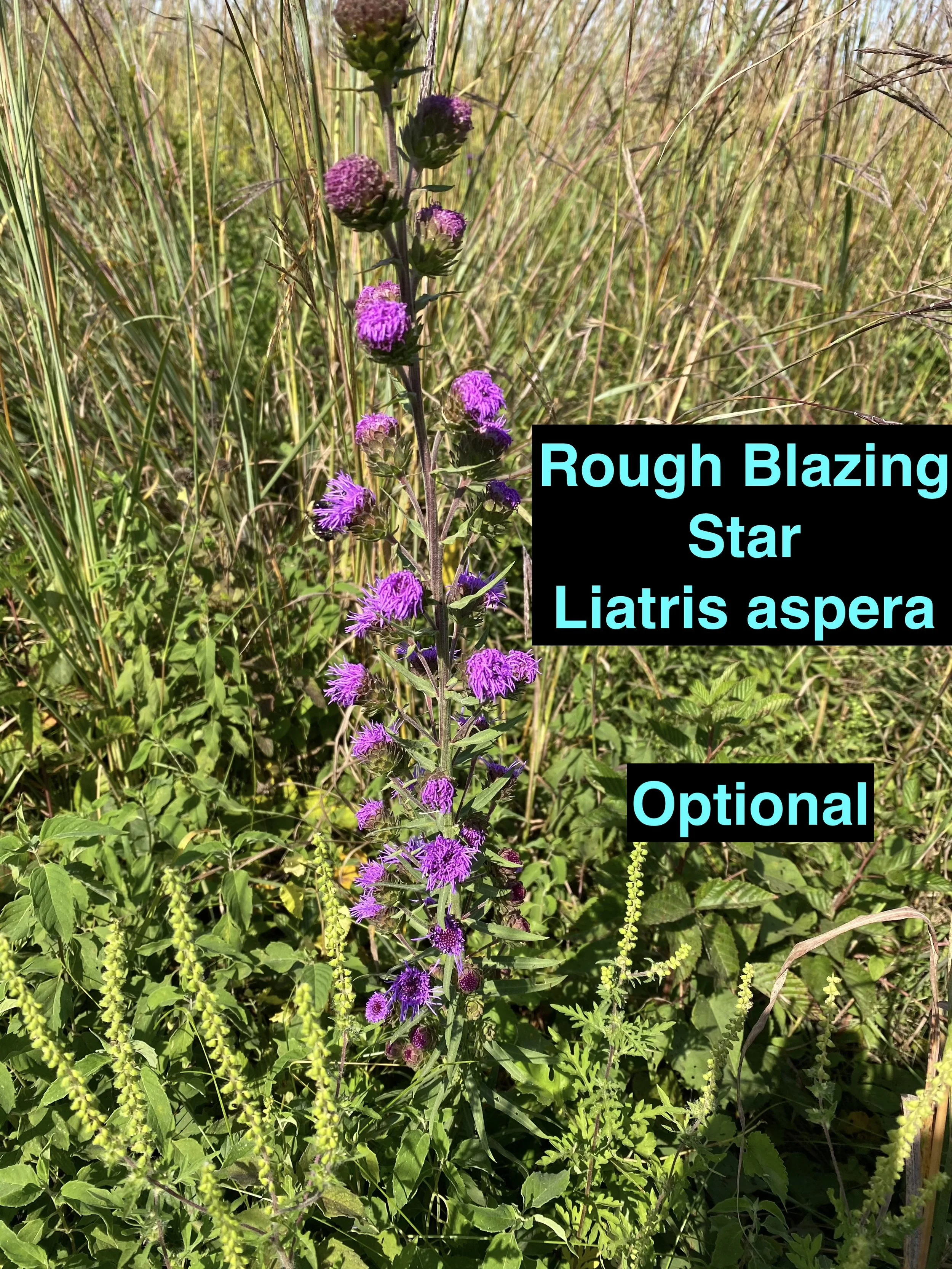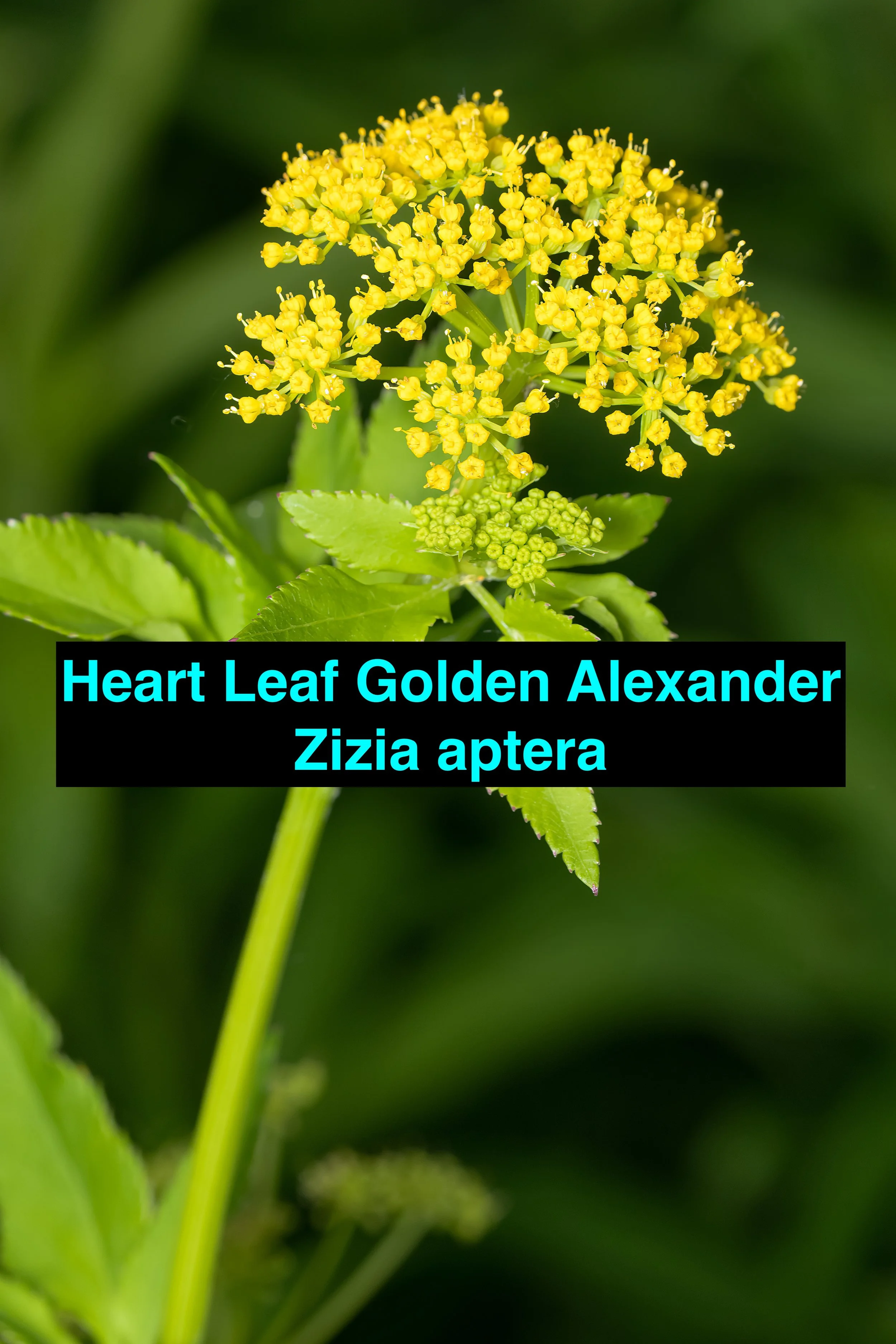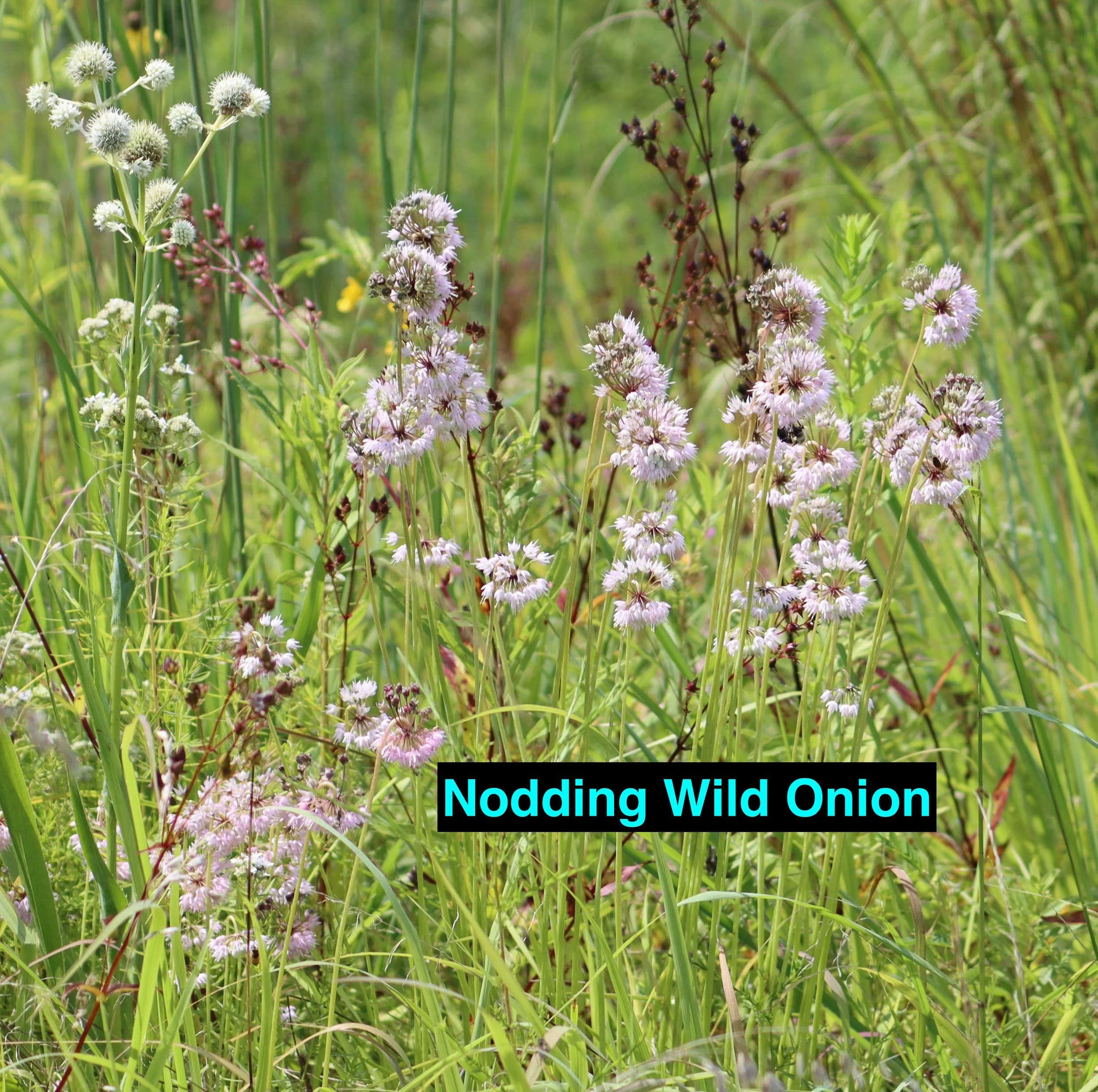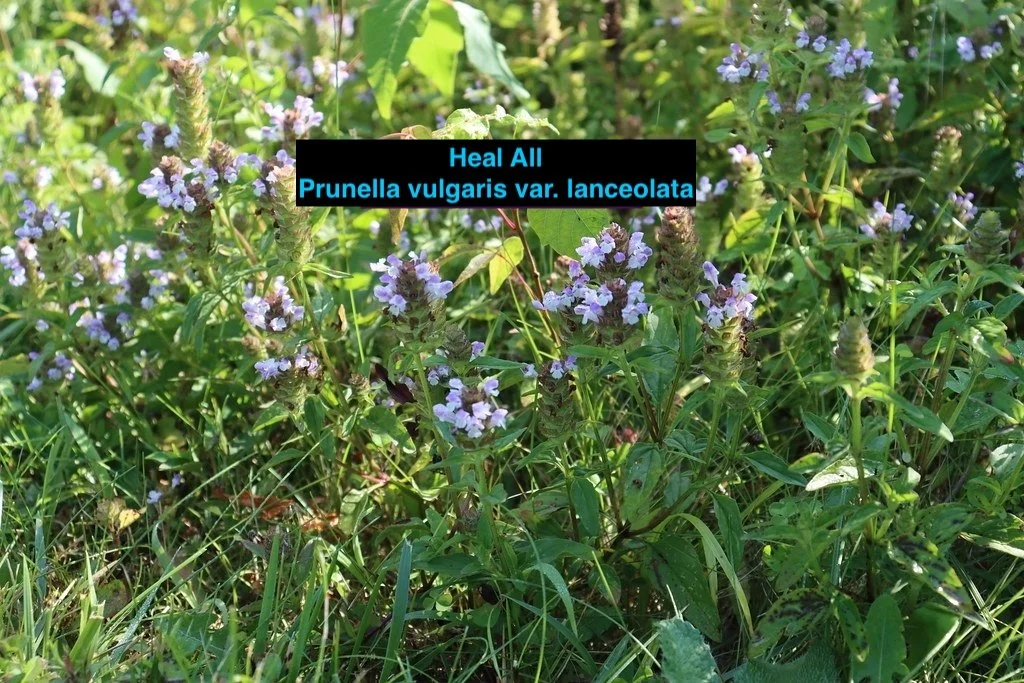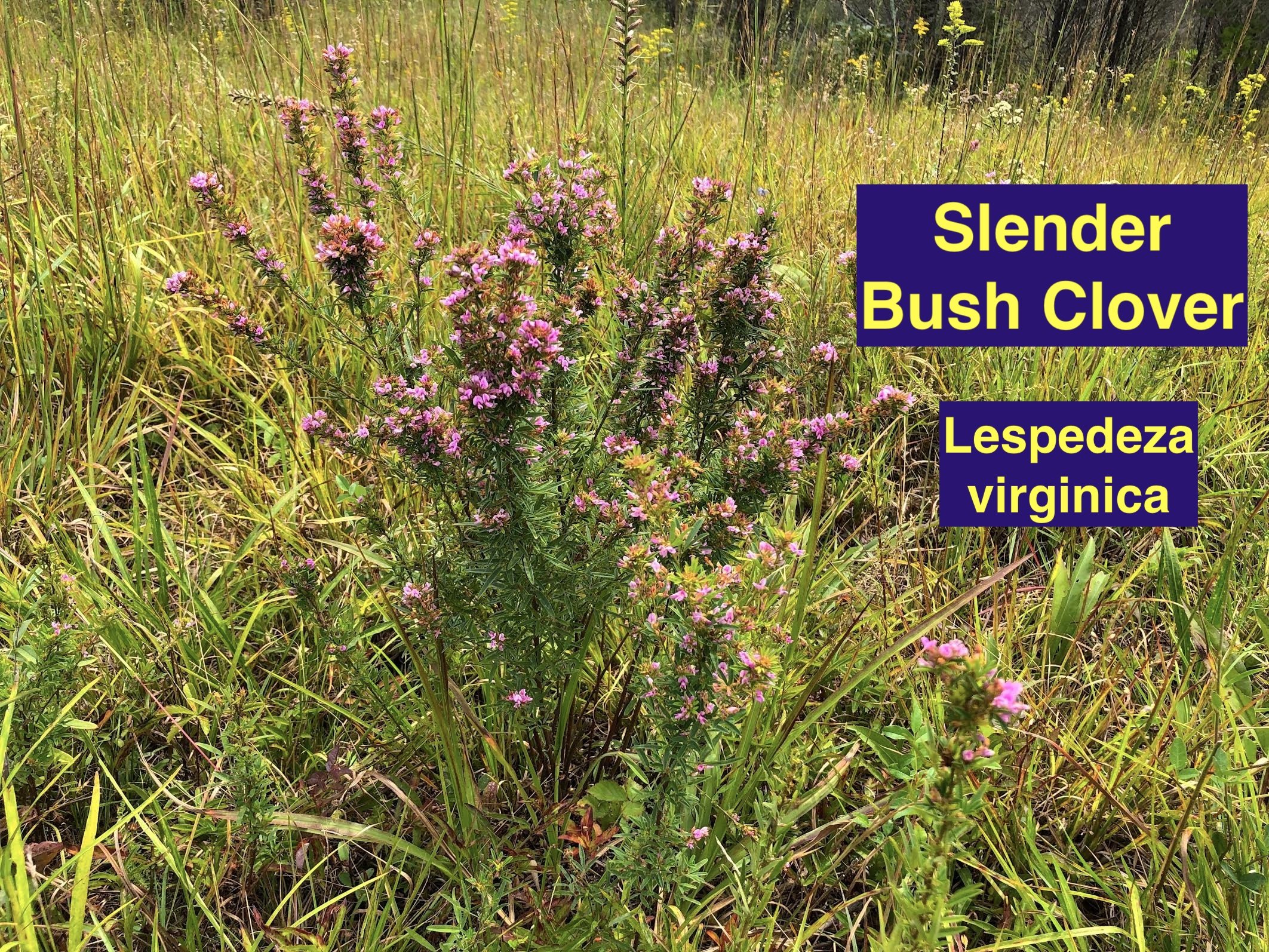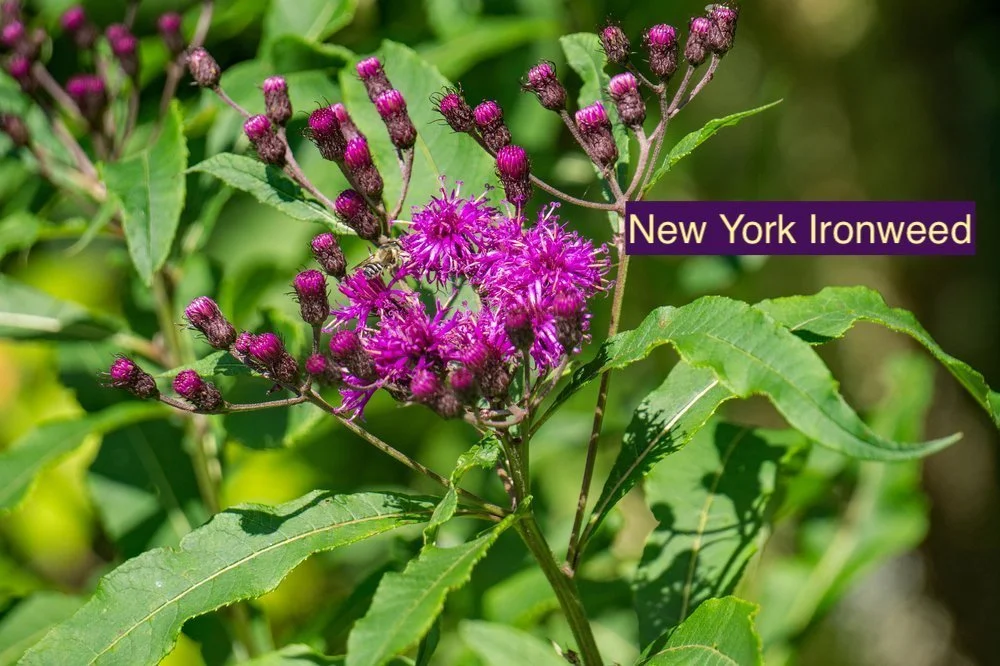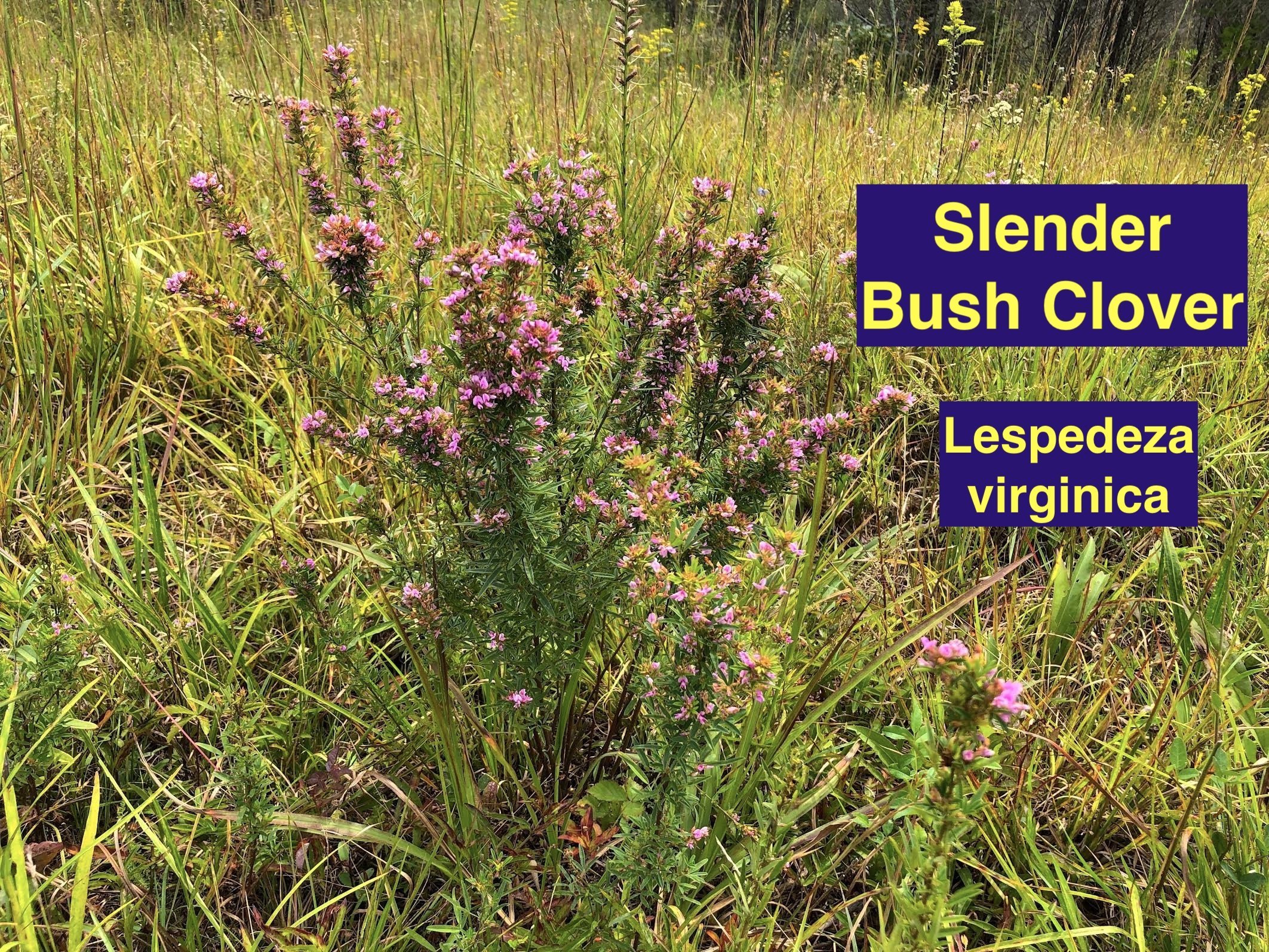Our Seed Mixes will be available in 2026, in increments of 1,000 square feet, 2,000 square feet, 1/8th acre, 1/4th acre, 1/2th acre, and 1 acre. Exact dates of sales are to be announced through the email list and on Indigenous Landscapes Facebook posts. The mixes range from 65 to 89 seeds per square foot - depending on what is needed for that particular seed mix design to be successful. They are 95% native wildflowers and 5% Native Grasses of the respective regions drawn on the map above. Sign up for our email list at the bottom of the page or the home page to receive an email notification of the seed mix sale openings. Learn how to prepare your land for these seed mixes yourself or using a hired landscaper with our Instruction Manual here.
Our last native seed mix sale ended December 13th, 2025. To be notified of our next native seed mix sale, sign up for our email list at the bottom of the page. Thanks for your interest.
What Makes Our Native Seed Mixes Different From Competitors.
The biggest difference in our seed mixes is the amount of native wildflower species being 41 to 46 species in our high diversity seed mixes, and the percentage of Native Wildflower seed vs. Native Grass seed being 95% to 5%. For this amount of wildflower species, and this heavy of native wildflower to native grass percentage; no other native seed company can beat our pricing. As nearly all native seed companies offer; we also provide an instruction manual and customer service question answering via email as you work on transforming your land back into native meadow vegetation.
Cost Effectiveness
Native Prairie/Meadow Seedings cost about 2 to 13 cents per square foot where as using potted native plants to cover the same area costs $2.00 to $10.00 per square foot depending on how densely the potted plants are installed and mulch use. For example; a 1,000 Square foot pollinator garden would require at least 750 potted native wildflowers/grasses to cover the plot effectively. Potted Plants can cost $2 to $10 per plant, and at a cost of $5.00 per plant, 750 wildflowers/grasses would cost $3,750 + installation costs and mulching costs. If that 1,000 square feet were instead seeded with one of our mixes it would cost $125 - $150, and you could do the installation yourself simply: using our instruction manual. The cost effectiveness ratio increases even higher the larger of plot you are seeding vs. planting with plugs or potted plants - for 1/8th acre or larger the cost per square foot is only 2 to 3 cents where as the smaller 1,000 and 2,000 square foot portions are around 12 to 13 cents per square foot compared to the $3.75 per square foot cost of potted plants. Maintenance is easier and weed invasion resistance is much better with seeding projects vs. potted plant landscapes due to the density of native seedings repelling and blocking out weed competition as the plot matures.
Species Lists Per Seed Mix
Native Bee Buffet (36 species + 2 Optional)
The Native Bee Buffet Seed Mix is formulated to establish wildflowers that the smallest to the largest native bees prefer throughout the growing season. Planting this seed mix will boost local native bee population and diversity. As an side effect, this native meadow mix will also attract other native insects and wildlife due to its high diversity and heavy wildflower component. This seed mix contains 36 species of native wildflowers and grasses + 2 optional native wildflowers. Purple Coneflower and Grey Headed Coneflower aren’t native near or within the Northeast so they’re optional for people to exclude those species to make it better adapted to the Northeast. All 38 species including the 2 optional are native to the Midwest and Southeast parts of our seed mix map.
Spring into Early Summer Blooming Species
Golden Alexanders Zizia aurea, Foxglove Beardtongue Penstemon digitalis, Ohio Spiderwort Tradescantia ohioensis,Blue Wild Indigo Baptisia australis, Downy Wood Mint Blephilia cillata, Yarrow Achillea millefolium, Common Milkweed Asclepias Syriaca, Black Eyed Susan Rudbeckia hirta
Midsummer Blooming Species
Purple Coneflower Echinecea Purpurea, Early Sunflower Heliopsis helianthoides, Wild Bergamot Monarda Fistulosa, Grey Headed Coneflower Ratibida Pinnata, Yellow Giant Hyssop Agastache nepetoides, Canada Milk Vetch Astragalus canadensis, Spotted Bee Balm Monarda punctata, Hoary Mountain Mint Pycnanthemum incanum, Slender Mountain Mint Pycnanthemum tenufolium, Wild Senna Senna hebecarpa, Culver's Root Veronicastrum virginicum
Late Summer Blooming Species
Rounded Headed Bush Clover Lespedeza capitata, Slender Bush Clover Lespedeza virginica, Marsh Blazing Star Liatris spictata, Partridge Pea Chamaecrista fasciculata, Panicled Trefoil Desmodium paniculatum, Grass leaf goldenrod Euthamia gramnifolia, Obedient Plant Physostegia virginiana, Orange Coneflower Rudbeckia fulgida, Early Goldenrod Solidago Juncea, Tall Ironweed Vernonia gigantea
Early Fall Blooming Species
Stiff Goldenrod Solidago Ridgida, Tall Boneset Eupatorium altissimum, Dwarf aka Gray Goldenrod Solidago nemoralis, Showy Goldenrod Solidago speciosa, Smooth Blue Aster Aster laevis, Calico Aster Aster lateriflorus, New England Aster Aster novae-angliae, Frost Aster Aster pilosus.
Sedges and Grasses (Less than 5% of the total seeds)
Purple Top Tridens Flavus
Native Bee Buffet Picture Gallery
Wingstem + Ironweed & Friends (32 species)
Our Wingstem + Ironweed and friends is designed to climax in bloom from July into September, while also offering some blooms earlier in the year. You can use this mix wherever you would appreciate the height of tall wildflowers such as Wingstem, Ironweed, and Joe Pye Weed. This mix will attract many late season and over wintering native birds that specialize in eating native wildflower seeds. This is also an excellent mix for supporting migrating butterflies, overwintering butterflies, and overwintering queen bumblebees. The purple, pink, yellow contrasting combination of Ironweed, Wingstem, Joe Pyeweed, and Cut-leaf Coneflower will bring a dramatic climax to this seed mix in late summer.
Species list: Yarrow Achillea millefolium, Common Milkweed Asclepias syriaca, Smooth Blue Aster Aster laevis, New England Aster Aster novae-angliae, Frost Aster Aster pilosus, Canada Milk Vetch Astragalus canadensis, Fox Sedge Carex vulpinoidea, Partridge Pea Chamaecrista fasciculata, Purple Coneflower Echinecea Purpurea, Hollow-stem Joe pye Eupatorium fistulosum, Grass leaf goldenrod Euthamia gramnifolia, Oenothera biennis Evening Primrose, Tall Sunflower Helianthus giganteus, Early Sunflower Heliopsis helianthoides, Rounded Headed Bush Clover Lespedeza capitata, Wild Bergamot Monarda Fistulosa, Foxglove Beardtongue Penstemon digitalis, Virginia Mountain Mint Pycnanthemum virginianum, Obedient Plant Physostegia virginiana, Cut-leaf Coneflower Rudbeckia laciniata, Black Eyed Susan Rudbeckia hirta, Wild Senna Senna hebecarpa, CUp Plant Silphium perfoliatum, Early Goldenrod Solidago juncea, Dwarf aka Gray Goldenrod Solidago nemoralis, Stiff Goldenrod Solidago Ridgida, Showy Goldenrod Solidago speciosa, Ohio Spiderwort Tradescantia ohioensis, Purple Top Tridens Flavus, Wingstem Verbesina alternifolia, Tall Ironweed Vernonia gigantea, Culver's Root Veronicastrum virginicum, Golden Alexanders Zizia aurea
Wingstem + Ironweed & Friends Picture Gallery
Purple Coneflower + Wild Bergamot & Friends (19 species)
Our Purple Coneflower + Wild Bergamot & Friends Native Seed mix allows the opportunity to establish a micro-meadow or landscape bed sized mix with an abundance of Purple Coneflower + Wild Bergamot and companion plants that will co-exist well with them long term. This mix stays below 4 feet in height and is best planted in areas that receive at least 4 hours of direct sunlight per day or more. This group of species is adapted to moderate moisture soils, high moisture soils, and soggy or seasonally wet soils. This mix can also adapt lower moisture soils if supplementally watered during the dry parts of the summer, once a week with 1.5 inches of water. It is applicable to silty, loamy, clayey, or sandy soil types. These species mature fairly quick, and will put on a great display of flowers just in their second year and beyond. This mix is 100% native to the Midwest and most of the Southeast part of our Map. Northeast Considerations: Purple Coneflower isn’t native to the Northeast portion of our Map. Foxglove Beardtongue isn’t native to much of the Northeast Portion of the Map. Rattlesnake Master is native to parts of the lower northeast. The seed mix is about 85% native to the Northeast.
Species List: Purple Coneflower - Echinecea Purpurea, Foxglove Beardtongue - Penstemon digitalis, Slender Mountain Mint - Pycnanthemum tenuifolium, Orange Coneflower - Rudbeckia fulgida, Dwarf Goldenrod - Solidago nemoralis, Showy Goldenrod - Solidago speciosa, Marsh Blazing Star Liatris spicata, Great Blue Lobelia - Lobelia siphilitica, Golden Alexanders - Zizia aurea, Native Yarrow Achillea millefolium, Downy Wood Mint - Blephilia cillata, New England Aster - Aster novae-angliae, Smooth Blue Aster - Aster laevis, Rattlesnake Master - Eryngium yuccifolium, Ohio Spiderwort Tradescantia ohiensis, Wild Bergamot - Monarda Fistulosa, Black Eyed Susan - Rudbeckia hirta, Early Sunflower Heliopsis helianthoides, Spotted Bee Balm - Monarda punctata
Edible Native Plant Meadow (12 Species)
Our Edible Native Meadow is made up of native species that are either edible or sought out to make teas from for various purposes. The Edible species are Common Milkweed (Cooked), Ohio Spiderwort (Cooked or Raw), Evening Primrose (Cooked), and Cut-Leaf Coneflower (Cooked). The herbs that can be used for tea or culinary flavoring are Wild Bergamot, Lemon Mint, Spotted Bee Balm, and Native Wild Mint aka Field Mint. The herbs that are not typically used for culinary purposes but rather for medicinal purposes are Purple Coneflower, Yarrow, Mad dog skullcap, and Heal All. This 12 species mix is mostly native to the Midwest, Southeast, and Northeast. Purple Coneflower (MW, SE) and Lemon Mint (SE) have limited native ranges whereas the other 10 species are native throughout the Midwest, Southeast, and Northeast. This mix ranges from 6 inches tall to 48 inches tall. It’s adapted to as little as 4 hours of sunlight per day to a full day’s sun. It can grow in drier soils, intermediate moisture soils, and seasonally saturated soils of Clay, Sand, or Silty soil textures.
Species List: Common Milkweed Asclepias syriaca, Ohio Spiderwort Tradescantia ohioensis, Evening Primrose Oenothera biennis, Wild Bergamot Monarda Fistulosa, Native Yarrow Achillea millefolium, Purple Coneflower Echinecea Purpurea, Lemon Mint Monarda citriodora, Spotted Bee balm Monarda punctata, Cut Leaf Coneflower Rudbeckia laciniata, Mad dog skull cap Scutellaria lateriflora, Prunella vulgaris var. lanceolata Heal All, Field Mint Mentha arvensis
Edible Native Plant Meadow Picture Gallery
Mowable Short Native Meadow (7 Species)
This Mowable Short Native Meadow mix is made for mowing 3 to 4 inches high 1 to 8 times in the spring/early summer. The less it’s mowed, the more it will bloom. Even when heavily mowed throughout the year, it will still cover the ground with native vegetation. If it’s mown every week throughout the year it will mostly mature as Yarrow and Heal All native vegetation. The less often it is mown, the more flower diversity it will have. Mowing on the highest height possible is also beneficial to the diversity. In the spring time the native Yarrow will arise to bloom in late spring. Early Summer to Midsummer the native variation of Heal All will bloom at just a few inches tall. In late summer, Early Goldenrod, Mistflower, and Orange Coneflower will combine with light blue and gold colored blooms. After these two species are finished, Few-Leaf Sunflower and Dwarf Goldenrod will end the year with pollinator popular sunflower and goldenrod blooms. This Mowable Native Mix is adapted to dry sites, moderate moisture sites, and seasonally wet sites that become better drained during the summer time. It can grow in as little as 4 hours of direct sunlight per day in sandy, clay, or silt soil textures.
Species List: Achillea millefolium Native Yarrow, Conoclinium coelestinum Mistflower, Prunella vulgaris var. lanceolata Heal All, Helinathus occidentalis Few Leaf Sunflower, Rudbeckia fulgida Orange Coneflower, Solidago nemoralis Dwarf Goldenrod, Solidago juncea Early Goldenrod
Regional Applicability
This seed mix is widely applicable throughout the Midwest, Southeast and Northeastern United States as depicted by our map. Though, MIstflower has limited native range in the Northeast, only reaching up into Pennsylvania and New Jersey. Mistflower is also not native to Wisconsin only reaching the border within the Chicago Region. Few-Leaf Sunflower is not a common native plant, but has been found native growing throughout the southeast, midwest, and lower northeast. Even if Mistflower and Few-Leaf Sunflower are native a state or two away from your area, they will be much more ecological beneficial than lawn grasses and clover.
Mowable Native Meadow Picture Gallery
American Goldfinch + Seed Eating Native Bird Seedmix (22 Species)
This seed mix is made up native species that feed American Goldfinches from spring through fall. Wherever American Goldfinches are native to - this mix will attract flocks to feed on the native seed they prefer most. This seed mix is adapted to as little as 4 hours of direct sun to full sun - seasonally wet soil, intermediate moisture soils, and lower moisture soils - of sand, silt, clay or loamy texture. The height of the mature native meadow will range 1 foot tall to 7 feet tall with +90% of the height being under 4 feet tall. By designing this native seed mix almost purely with Goldfinch food sources, it supports a high quantity of Goldfinches throughout the year, though other native birds and native insects will benefit too from this seed mix.
Native Applicability: As far as feeding and attracting American Goldfinches this seed mix is applicable througout the native range of American Goldfinches. As far as the species being specifically native to the Northeast, Midwest, and Southeastern portions of the map these species are 80% to 100% native to those regions. If a species, such as Cup Plant, isn’t quite native to your local area, it will attract native insects and Goldfinches but still remains non-locally native.
Species (22): Asclepias Syriaca Common Milkweed, Asclepias tuberosa Butterflyweed, Aster novae-angliae New England Aster, Coreopsis lanceolota Lanceleaf Coreposis, Coreopsis tripteris Tall Coreopsis, Bidens aristosa Swamp Marigold, Eupatorium fistulosum Hollow-stem Joe pye, Heliopsis helianthoides Early Sunflower, Aster laevis Smooth Blue Aster, Liatris spictata Marsh Blazing Star, Monarda Fistulosa Wild Bergamot, Penstemon digitalis Foxglove Beardtongue, Monarda punctata Spotted Bee Balm, Ratibida Pinnata Grey Headed Coneflower, Rudbeckia fulgida Orange Coneflower, Solidago Ridgida Stiff Goldenrod, Solidago speciosa Showy Goldenrod, Tridens Flavus Purple Top, Vernonia gigantea Tall Ironweed, Zizia aurea Golden Alexanders, Echinecea Purpurea Purple Coneflower, Tall Sunflower Helianthus giganteus
American Goldfinch + Seed Eating Native Bird Seed mix Picture Gallery
Shade Adapted Native Seed Mix Species List (24 species + 1 Optional)
24 Species + 1 Optional: Golden Alexanders Zizia aurea, Foxglove Beardtongue Penstemon digitalis, Red Columbine Aquilegia canadensis, Early Sunflower Heliopsis helianthoides, Wild Bergamot Monarda Fistulosa, Purple Coneflower Echinecea Purpurea (OPTIONAL), Downy Wood Mint Blephilia hirsuta, Spikenard - Aralia racemosa, Brown Eyed Susan Rudbeckia triloba, Tall American Bellflower Campanula americana, Sweet Joe Pye Eutrochium purpureum, Yellow Giant Hyssop Agastache nepetoides, Canada Milk Vetch Astragalus canadensis, Great Blue Lobelia Lobelia siphilitica, Cardinal Flower Lobelia cardinalis, Obedient Plant- Physostegia virginiana, Germander Teucrium canadense, Late Figwort Scrophularia marilandica, Solidago caesia Blue Stem Goldenrod, Solidago rugosa Wrinkled leaf Goldenrod, Heart-Leaf Aster Symphyotrichum cordifolium, Calico Aster Aster lateriflorus, Arrowleaf Aster aster sagittifolius, Bottle brush rye Elymus hystrix, Virginia Wild Rye Elymus virginicus.
Our Shade Adapted Native Seed Mix is perfect for planting under and around yard trees, wood edges, shady sides of buildings and homes, and other partially shaded conditions. It can adapt to more sunny conditions if need be, but is designed for at least part day’s shade. It ranges from 2 feet tall to 6 feet tall, with the Woodland Joe Pye Weed (Eutrochium purpureum) being the only species in the mix that gets over 4 feet tall. The species range from partial shade adapted such as Purple Coneflower and Wild Bergamot to deep shade adapted such as Wild Columbine, Bluestem Goldenrod, and Spikenard. This group of species is good for lower moisture, moderate moisture, and higher moisture soils of silty, loamy, clayey, or sandy soil types. If you seed it in drier conditions, you can give this mix 2 inches of water per 2 weeks via sprinkler specifically during summer droughts to maximize its floral intensity. This mix effectively covers your purchased square footage at 67 seeds per square foot.
This seed mix utilizes wide ranging species that are native to the Northeast, Southeast, and Midwest portions of our map at the top of this webpage. Purple Coneflower isn’t native to most of the Northeast therefor it’s optional.
Shade Adapted Native Seed Mix Species Picture Gallery
Rose Mallow + Lobelia and Friends
15 Species: Cardinal Flower - Rose Swamp Mallow - Hibiscus moscheutos, Cardinal Flower Lobelia cardinalis, Great Blue Lobelia - Lobelia siphilitica, Spotted Bee Balm - Monarda punctata, Black Eyed Susan - Rudbeckia hirta, Swamp Milkweed - Asclepias incarnata, , Native Field Mint Mentha arvensis, Smooth Blue Aster - Symphyotrichum laeve, Purple Coneflower - Echinecea Purpurea, New England Aster - Symphyotrichum novae-angliae,, Foxglove Beardtongue Penstemon digitalis, Monkey Flower - mimulus ripens, Common Sneezeweed - Helenium autumnale, Marsh Blazing Star - Liatris Spicata, Meadow Beauty - Rhexia virginica
Our Rose Mallow (Hibiscus moscheutos) Cardinal Flower + Great Blue Lobelia & Friends Native Seed mix allows the opportunity to establish a micro-meadow or landscape bed sized mix with an abundance of these three featured species complemented by companion plants that will co-exist well with them long term. This mix mostly stays below 4 feet in height and is best planted in areas that receive at least 4 hours of direct sunlight per day or more. This group of species is adapted to moderate moisture soils, high moisture soils, and soggy or seasonally wet soils. It is applicable to silty, loamy, clayey, or sandy soil types. These species mature fairly quick, and will put on a great display of flowers in their second year and beyond. In the first year, you will see some Black Eye Susan blooms as well. The 1,000 square foot portion can be split down into landscape bed sized portions or kept as a micro-meadow of 1,000 square feet. The 2,000 square foot portion gives a bulk discount, and allows for a double sized micro-meadow. With using 15 species for this seed mix, these micro-meadows and/or landscape beds will appear more uniform and random than our high diversity mixes making them ideal for residential settings where neighborly aesthetics are being considered. This mix will attract Humming Birds, and many native bee species throughout the season as well as host Monarch Butterflies and many other native moths and butterflies.
This seed mix utilizes wide ranging species that are native to the Northeast, Southeast, and Midwest portions of our map at the top of this webpage.
Rose Mallow + Lobelia and Friends Seed Mix Species Picture Gallery
Liatris + Butterfly Milkweed Friends Seed Mix (16 species + 3 optional)
Our Butterflyweed & + Liatris Friends Seed mix allows the opportunity to establish a micro-meadow or landscape bed sized mix with an abundance of Butterfly Milkweed, Dense Blazing Star, and Button Blazing Star; complemented by companion plants that will co-exist well with them long term. This mix stays below 3 feet in height and is best planted in areas that receive at least 6 hours of direct sunlight per day or more. This group of species is adapted to moderate moisture soils, and lower moisture soils of silty, loamy, clayey, or sandy soil types. These species mature fairly quick, and will put on a great display of flowers in the second year and beyond. In the first year, you will see some Black Eye Susan blooms as well. The 1,000 square foot portion can be split down into smaller landscape bed sized portions or kept as a micro-meadow of 1,000 square feet. The 2,000 square foot portion gives a bulk discount, and allows for a double sized micro-meadow. With using 15 (+3 optional) species for this seed mix, these micro-meadows and/or landscape beds will appear more uniform and organized than our high diversity mixes making them ideal for natural landscaping beds.
This mix is 95%+ native to the Midwest and most of the Southeast part of our Map.
Northeast Considerations: Marsh Blazing Star is native to Pennsylvania and Delaware portion of the Northeast and Southward. Purple Coneflower is beneficial but isn’t native to the Northeast portion of our Map. Aromatic Aster is native as far northeast as northern Pennsylvania. Purple Prairie Clover, Button Blazing Star and Hoary Vervain are only native to the midwest and southeast so therefore they’re optional.
16 Species + 3 Optional: Butterfly Milkweed - Asclepias tuberosa, Heart leaf Alexander - Zizia aptera, Downy Wood Mint - Blephilia cillata, Foxglove Beardtongue - Penstemon digitalis, Black Eyed Susan - Rudbeckia hirta, Purple Coneflower - Echinecea Purpurea, Spotted Bee Balm - Monarda Punctata, Heal All Prunella vulgars var. lanceolata, Nodding Wild Onion Allium cernuum, Slender Mountain Mint - Pycnanthemum tenuifolium, Marsh Blazing Star - Liatris spictata, Smooth Blue Aster - Symphyotrichum laeve, Early Goldenrod - Solidago Juncea, Dwarf Goldenrod - Solidago nemoralis, Aromatic Aster - Symphyotrichum oblongifolium, Little bluestem - Schizachyrium scoparium
Midwest/Southeast Optional Species: Purple Prairie Clover Dalea purpurea (Optional), Hoary Vervain Verbena stricta (Optional), Button Blazing Star Liatris aspera (Optional).
Butterflyweed + Liatris & Friends Seed Mix Species Photo Gallery
Midwest High Diversity Native Seed Mix (50 species)
This seed mix contains 50 species of native wildflowers and grasses/sedges. Wildflowers make up 95% of the seed mix while the 5 species of grasses/sedges make up 5% of the seed mix. This design is to ensure long wildflower diversity long-term as native grasses and sedges can become over dominant over time when designed at higher seed proportions due to the lack of Bison and/or Elk grazing the Native Meadows/Prairies. The height is mixed with most plants remaining under 3.5 feet tall, and a minority of plants reaching higher than 3.5 feet tall. This seed mix is rated at 80 seeds per square foot and will bloom from May into October with a high diversity of native wildflowers. Its species will adapt to partial sun, full sun, seasonally saturated soils, moderate moisture soils, and lower moisture soils.
Spring into Early Summer Blooming Species
Golden Alexanders Zizia aurea, Ohio Spiderwort - Tradescantia ohiensis, Blue Wild Indigo (Baptisia australis), White Wild Indigo (Baptisia alba), Lanceleaf Coreopsis Coreopsis lanceolata, Foxglove Beardtongue Penstemon digitalis, Blackeyed Susan Rudbeckia hirta, Butterfly Milkweed Asclepias tuberosa, Common Milkweed Asclepias syriaca, Achillea millefolium Yarrow, Blephilia cillata Downy Wood Mint
Midsummer Blooming Species
Wild Bergamot Monarda fistulosa, Pycnanthemum virginianum Virginia Mountain Mint, Grey Headed Coneflower Ratibida pinnata, Purple Coneflower Echinacea purpurea, Oxeye Sunflower Heliopsis helianthoides, Culver's Root Veronicastrum virginicum, Maryland Senna Senna marilandica, Marsh Blazing Star Liatris spicata, Early Goldenrod Solidago juncea, Spotted Bee Balm Monarda punctata, Dalea purpurea Purple Praire Clover, Astragalus canadensis Canada Milk Vetch, Desmodium canadense Showy Trefoil, Hoary Vervain Verbena stricta, Evening Primrose Oenothera biennis, Eryngium yuccifolium Rattlesnake Master, Cup Plant Silphium perfoliatum - limited amount to maintain species balance.
Late Summer Blooming Species
Silphium terebinthinaceum Prairie Dock, Partridge Pea Chamaecrista fasciculata, Hollow-stem Joe Pyeweed Eutrochium fistulosum, Orange Coneflower Rudbeckia fulgida, Tall Coreopsis Coreopsis tripteris, Giant Ironweed Vernonia gigantea, Slender Bush Clover - Lespedeza virginica, Rounded Headed Bush Clover Lespedeza capitata, Grassleaf goldenrod Euthamia gramnifolia
Early Fall Blooming Species
Stiff Goldenrod Solidago rigida, Dwarf Goldenrod Solidago nemoralis, Showy Goldenrod Solidago speciosa, Showy Bidens Bidens aristosa, New England Aster Symphyotrichum novae-angliae, Frost Aster Aster pilosus, Aromatic Aster Aster oblongifolius, Arrowleaf Aster Aster sagittifolius, Aster lateriflorus Calico Aster, Smooth Blue Aster - Aster laevis
Sedge and Grasses (Less than 5% of the total seeds)
Fox Sedge Carex vulpinoidea, Little Bluestem Schizachyrium scoparium, Indiangrass Sorghastrum nutans, Purple Top Tridens Flavus, Canada Wild Rye Elymus canadensis
Midwest High Diversity Seed Mix Species Photo Gallery
Northeast High Diversity Native Seed Mix (45 Species)
This seed mix contains 45 species of native wildflowers and grasses/sedges. Wildflowers make up 95% of the seed mix while the 5 species of grasses/sedges make up 5% of the seed mix. This design is to ensure long wildflower diversity long-term as native grasses and sedges can become over dominant over time when designed at higher seed proportions due to the lack of Bison and/or Elk grazing the Native Meadows/Prairies. The height is mixed with most plants remaining under 3.5 feet tall, and a minority of plants reaching higher than 3.5 feet tall. This seed mix is rated at 80 seeds per square foot and will bloom from May into October with a high diversity of native wildflowers. Its species will adapt to partial sun, full sun, seasonally saturated soils, moderate moisture soils, and lower moisture soils.
Spring into Early Summer Blooming Species
Golden Alexanders Zizia aurea,Hairy Beardtongue Penstemon hirsutus, Small Yellow Wild Indigo Baptisia tinctoria, Ohio Spiderwort Tradescantia ohiensis, Blackeyed Susan Rudbeckia hirta, Butterfly Milkweed Asclepias tuberosa, Common Milkweed Asclepias syriaca, Achillea millefolium Yarrow, Blephilia cillata Downy Wood Mint
Midsummer Blooming Species
Wild Bergamot Monarda fistulosa, Narrowleaf Mountainmint Pycnanthemum tenuifolium, Purple Coneflower Echinacea purpurea - not locally native to the Northeast but optional, Oxeye Sunflower Heliopsis helianthoides, Virginia Mountainmint Pycnanthemum virginianum, Wild Senna Senna hebecarpa, Culver's Root Veronicastrum virginicum, Blue Vervain Verbena hastata, Astragalus canadensis Canada Milk Vetch, Desmodium canadense Showy Trefoil, Monarda punctata - Spotted Bee Balm, Purple Giant Hyssop Agastache scrophularieafolia
Late Summer Blooming Species
Wild Mint Mentha arvensis, Early Goldenrod Solidago juncea, Partridge Pea Chamaecrista fasciculata, Joe Pye Weed Eupatorium fistulosum, Browneyed Susan Rudbeckia triloba, Great Blue Lobelia Lobelia siphilitca, New York Ironweed Vernonia noveboracensis, Lobelia cardinalis Cardinal Flower, Lespedeza virginica Slender Bush Clover, Rounded Headed Bush Clover Lespedeza capitata, Grassleaf goldenrod Euthamia gramnifolia
Early Fall Blooming Species
Dwarf Goldenrod Solidago nemoralis, Anise Scented Goldenrod Solidago odora, Wrinkled Leaf Goldenrod Solidago rugosa, New England Aster Symphyotrichum novae-angliae, Frost Aster Aster pilosus, Zigzag Aster Aster prenanthoides, Arrowleaf Aster Aster sagittifolius, Aster lateriflorus Calico Aster, Smooth Blue Aster - Aster laevis.
Grasses and Sedges (5% of total seeds in the seed mix)
Fox Sedge Carex vulpinoidea, Little Bluestem Schizachyrium scoparium, Indiangrass Sorghastrum nutans, Purple Top Tridens flavus, Bottlebrush Rye - Elymus hystrix
Northeast High Diversity Seed Mix Species Photo Gallery
Southeastern High Diversity Native Seed Mix (47 species)
This seed mix contains 47 species of native wildflowers and grasses/sedges. Wildflowers make up 95% of the seed mix while the 5 species of grasses/sedges make up 5% of the seed mix. This design is to ensure long wildflower diversity long-term as native grasses and sedges can become over dominant over time when designed at higher seed proportions due to the lack of Bison and/or Elk grazing the Native Meadows/Prairies. The height is mixed with most plants remaining under 3.5 feet tall, and a minority of plants reaching higher than 3.5 feet tall. This seed mix is rated at 80 seeds per square foot and will bloom from April into November with a high diversity of native wildflowers. Its species will adapt to partial sun, full sun, seasonally saturated soils, moderate moisture soils, and lower moisture soils.
Spring into Early Summer Blooming Species
Golden Alexanders Zizia aurea, Ohio Spiderwort Tradescantia ohiensis, Blue Wild Indigo Baptisia australis, White Wild Indigo Baptisia alba, Yarrow Achillea millefolium, Lanceleaf Coreopsis Coreopsis lanceolata, Blephilia cillata - Downy Wood Mint, Foxglove Beardtongue (Penstemon digitalis), Blackeyed Susan Rudbeckia hirta, Butterfly Milkweed Asclepias tuberosa, Common Milkweed Asclepias syriaca
Midsummer Blooming Species
Wild Bergamot Monarda fistulosa, Narrowleaf Mountainmint Pycnanthemum tenuifolium, Grey Headed Coneflower Ratibida pinnata, Purple Coneflower Echinacea purpurea, Oxeye Sunflower Heliopsis helianthoides, Culver's Root Veronicastrum virginicum, Maryland Senna Senna marilandica, Marsh Blazing Star Liatris spicata, Panicled Trefoil Desmodium paniculatum, Canada Milkvetch Astragulus canadensis, Spotted Bee Balm - Monarda punctata, Rattlesnake Master Eryngium yuccifolium,
Late Summer Blooming Species
Partridge Pea Chamaecrista fasciculata, Silphium terebinthinaceum Prairie Dock, Common Boneset Eupatorium perfoliatum, Orange Coneflower Rudbeckia fulgida, Lespedeza violacea Violet Lespedeza, Rounded Headed Bush Clover Lespedeza capitata, Mistflower Conoclinium coelestinum, Joe Pye Weed Eupatorium fistulosum, Tall Coreopsis Coreopsis tripteris, Giant Ironweed Vernonia gigantea, Stiff Goldenrod Solidago rigida, Sneezeweed Helenium autumnale
Early Fall Blooming Species
Slender Bush Clover - Lespedeza virginica, Dwarf Goldenrod Solidago nemoralis, New England Aster Symphyotrichum novae-angliae, Showy Goldenrod Solidago speciosa, Arrowleaf Aster Aster sagittifolius, Frost Aster Aster pilosus, Narrowleaf Sunflower Helianthus angustifolius, Aster lateriflorus Calico Aster, Smooth blue Aster - Aster laevis
Native Grasses and Sedges (Less than 5% of total Seedmix)
Fox Sedge Carex vulpinoidea, Little Bluestem Schizachyrium scoparium, Indiangrass Sorghastrum nutans, Tridens Flavus Purple Top, Splitbeard Bluestem - Andropogon ternarius
